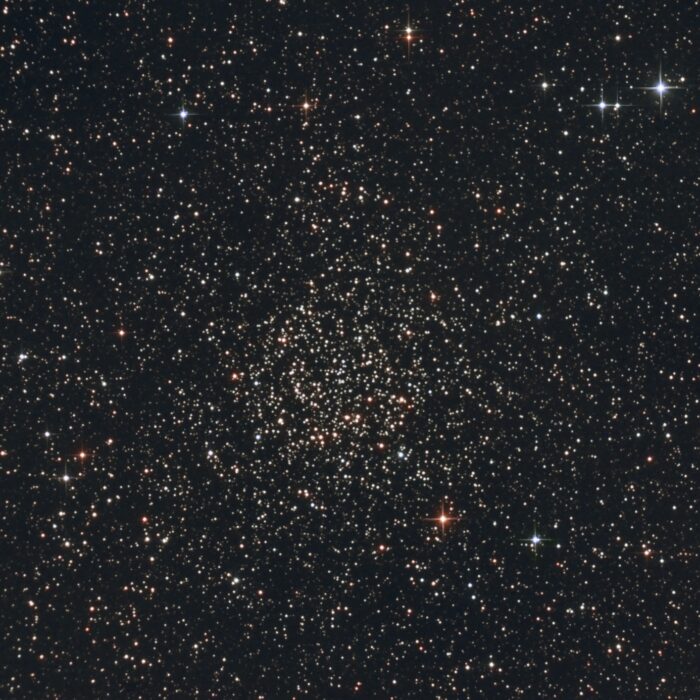Melotte (Mel)
- Homepage
- Gallery
- Catalog images
- Melotte (Mel)
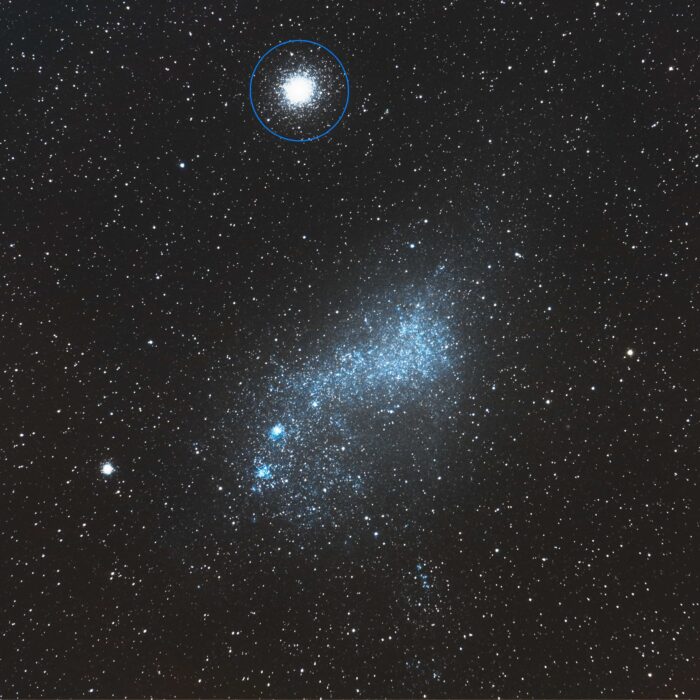
Martin Bernardi, CC BY-SA 4.0, via Wikimedia Commons
The cloud is the small Magellanic Cloud NGC 292.
The globular cluster above is NGC 104 (47 Tucanae).
The spherical cluster on the left is NGC 362 (C104).
In the cloud there is also NGC 346 (upper big blue spot) and NGC 371 (lower blue spot).
The star cluster NGC 371 is surrounded by the emission nebula N76A.
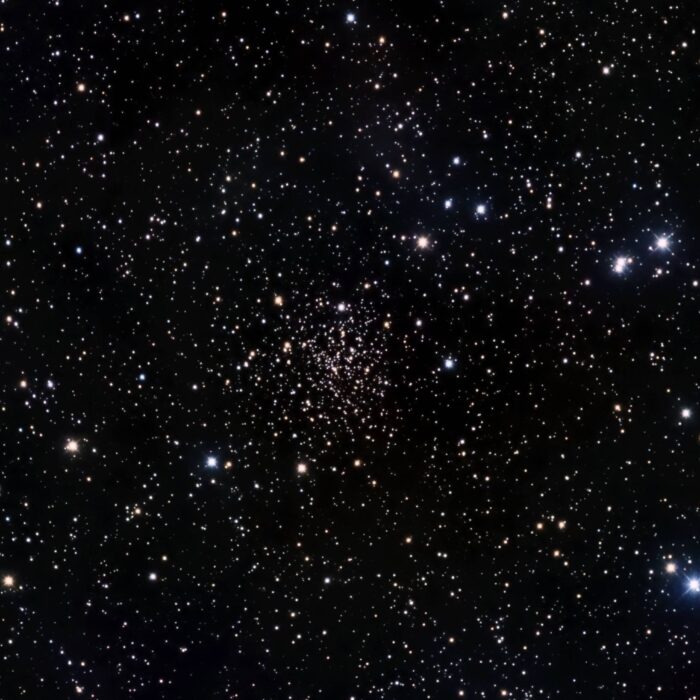
Is located close to Polaris.
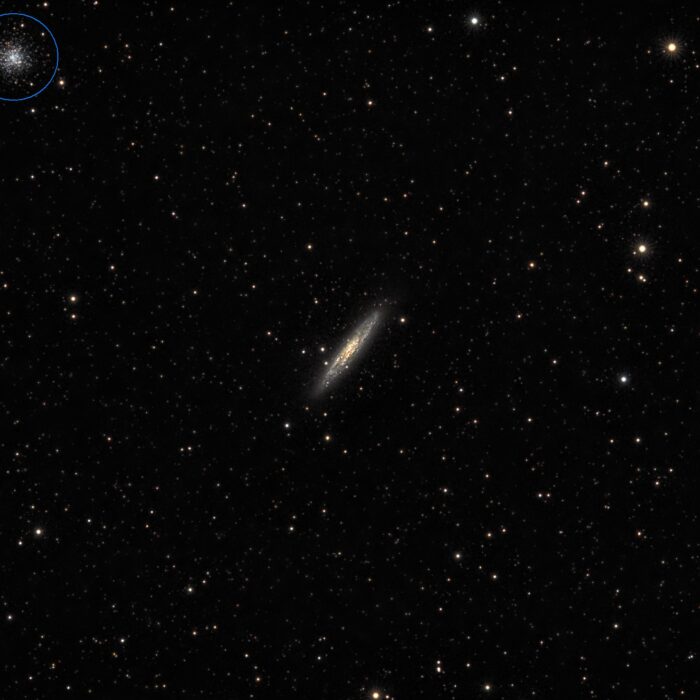
In the upper left is the star cluster NGC 288.
In the center is NGC 253 (C65).
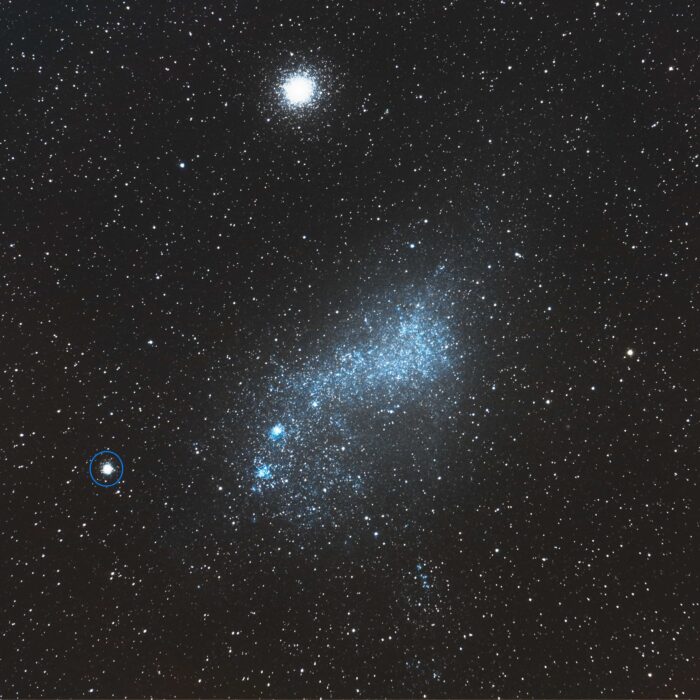
Martin Bernardi, CC BY-SA 4.0, via Wikimedia Commons
The cloud is the small Magellanic cloud NGC 292.
The globular cluster above is NGC 104 (47 Tucanae).
The globular cluster to the left is NGC 362 (C104).
In the cloud there is also NGC 346 (upper big blue spot) and NGC 371 (lower blue spot).
The star cluster NGC 371 is surrounded by the emission nebula N76A.
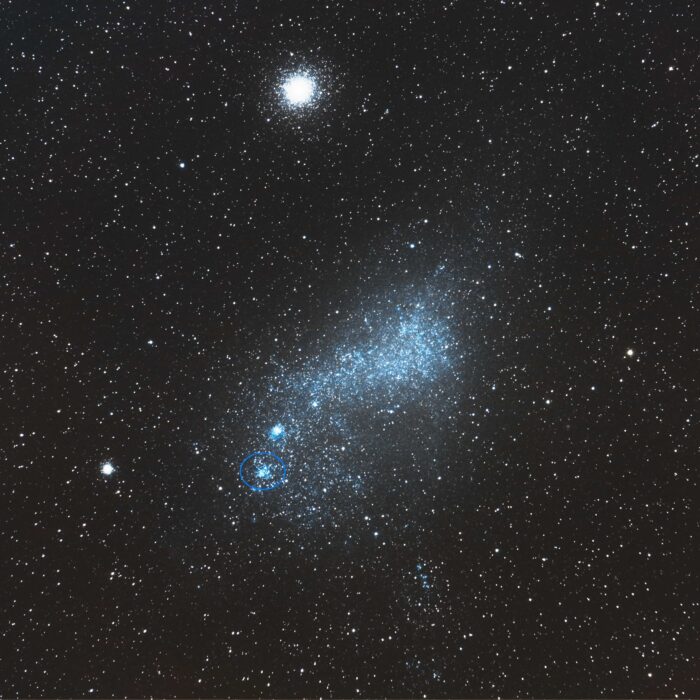
Martin Bernardi, CC BY-SA 4.0, via Wikimedia Commons
The cloud is the small Magellanic cloud NGC 292.
The globular cluster above is NGC 104 (47 Tucanae).
The globular cluster to the left is NGC 362 (C104).
In the cloud there is also NGC 346 (upper big blue spot) and NGC 371 (lower blue spot).
The star cluster NGC 371 is surrounded by the emission nebula N76A.
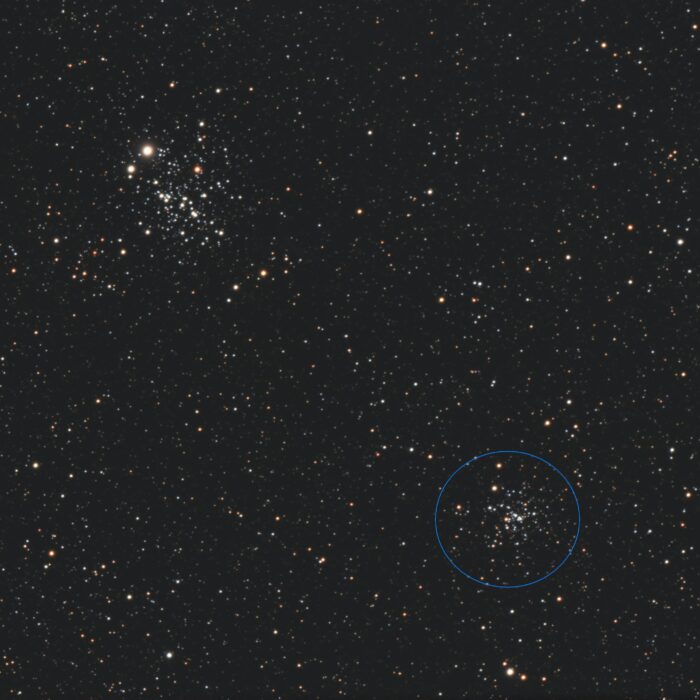
The star cluster on the upper left is C13 (NGC 457).
In the lower right is NGC 436.
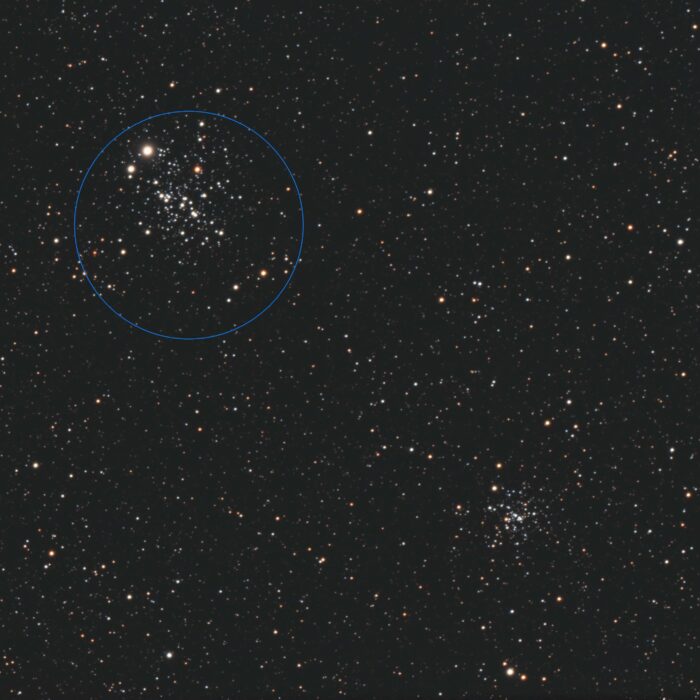
The star cluster on the upper left is C13 (NGC 457).
Bottom right is NGC 436.
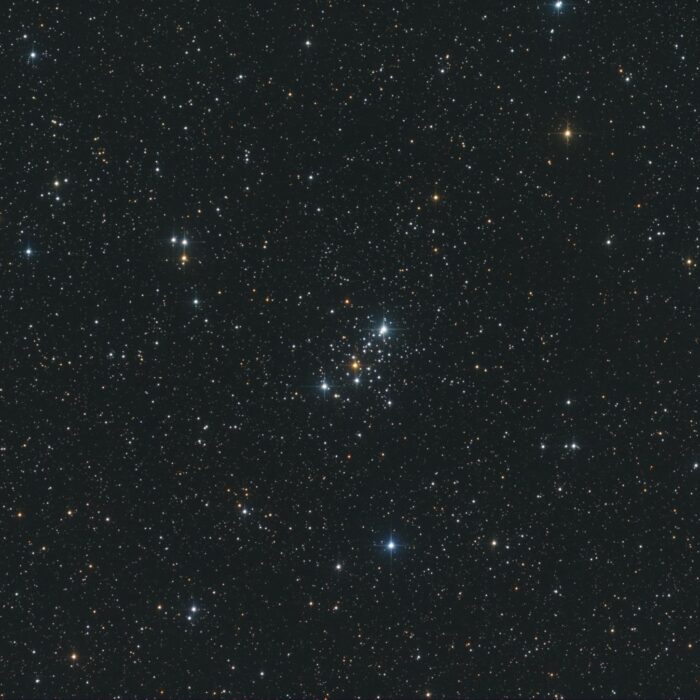
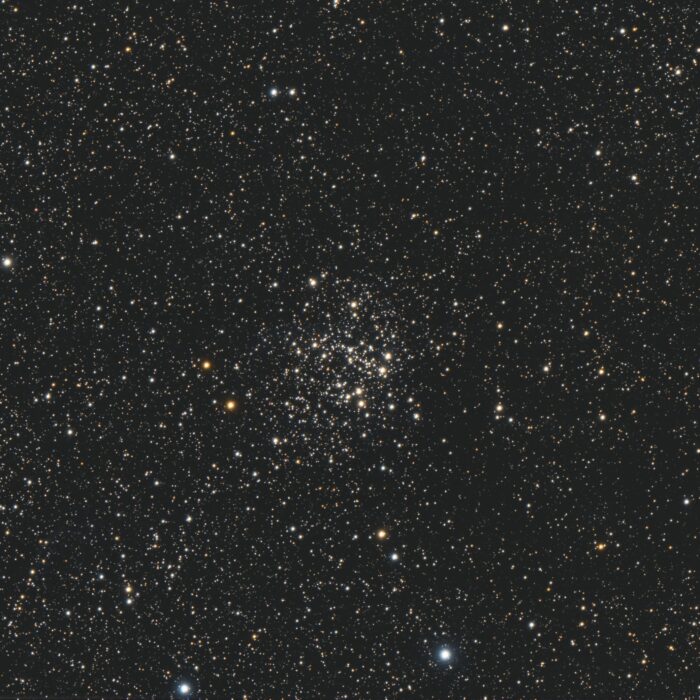
On the left the star cluster is NGC 659.
In the center the large Star cluster is NGC 663.
In the lower right is the Star cluster NGC 654 with the reflection nebula vdB 6.
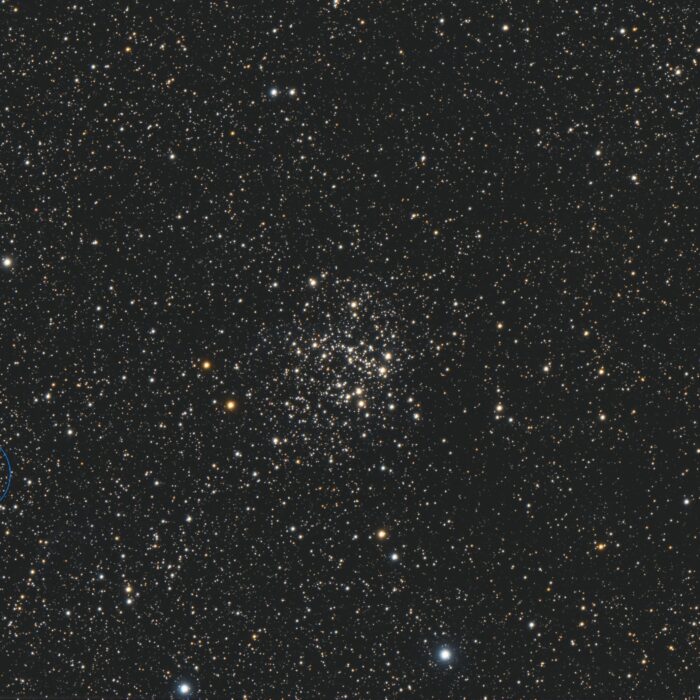
On the left the star cluster is NGC 659.
In the center the large star cluster is NGC 663.
In the lower right is the star cluster NGC 654 with the reflection nebula vdB 6.
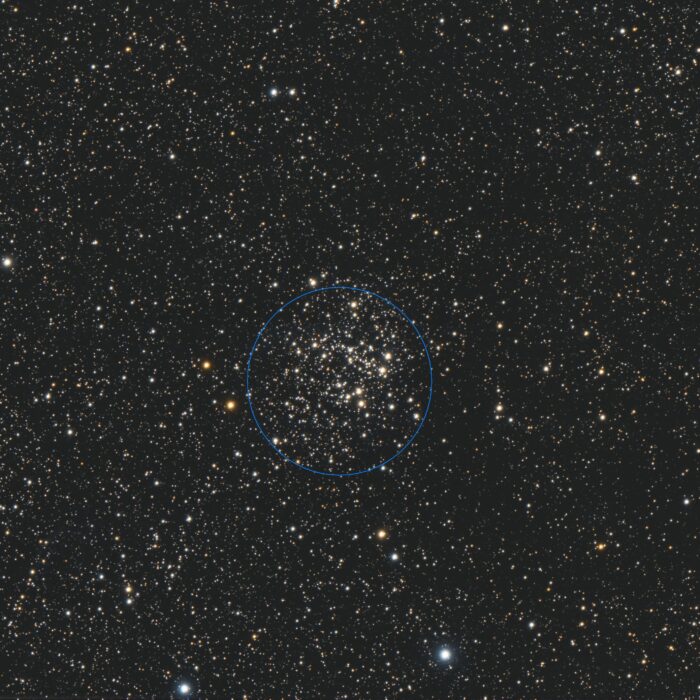
On the left the star cluster is NGC 659.
In the center the large star cluster is NGC 663.
In the lower right is the star cluster NGC 654 with the reflection nebula vdB 6.
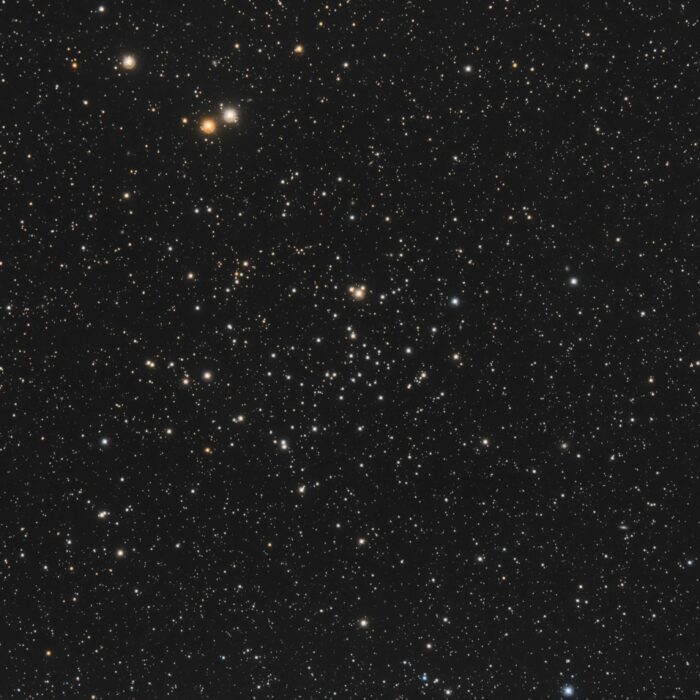

The right star cluster is NGC 869, the left one is NGC 884.
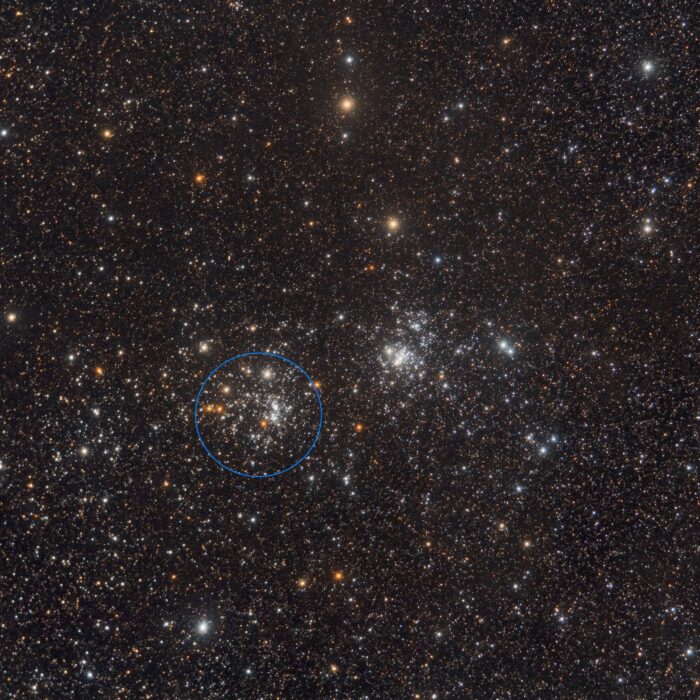
The right star cluster is NGC 869, the left one is NGC 884.
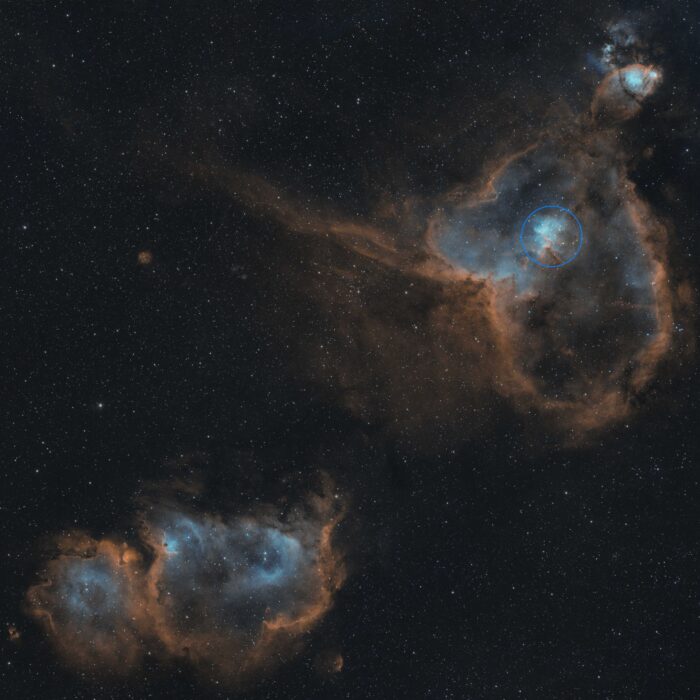
Nicocarver, CC BY-SA 4.0, via Wikimedia Commons
The mouth of the fish (small blue nebula) was first discovered and is named NGC 896.
The bright blue spot in the center of the Heart Nebula is Mel 15 (Collinder 26).
In the center of the Soul Nebula, the bright brown nebula is IC 1871.
The small nebula to the left of the Heart Nebula is Sh2-196. Between them, very faintly visible, close together are Sh2-192, Sh2-193 and Sh2-194.
The small nebula to the left of the Soul Nebula is Sh2-201.
The small nebula to the lower right of the Soul Nebula is Sh2-198.
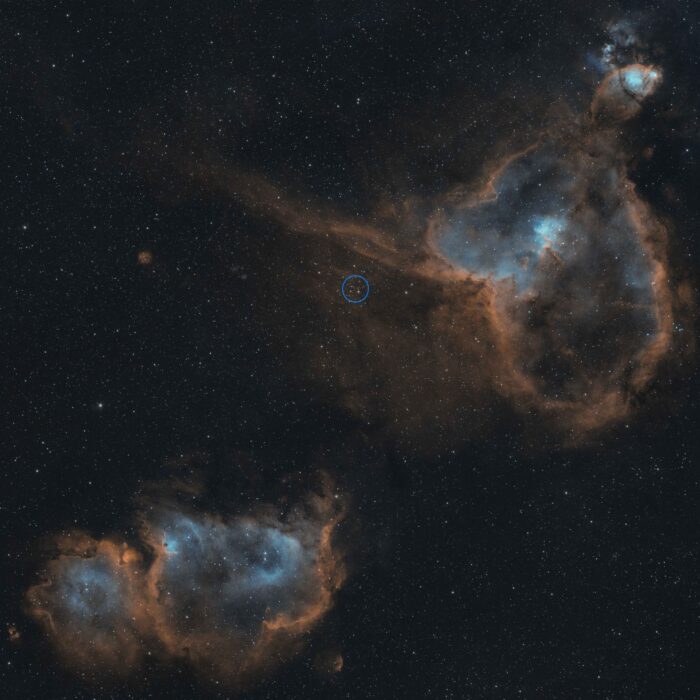
Nicocarver, CC BY-SA 4.0, via Wikimedia Commons
The mouth of the fish (small blue nebula) was first discovered and is named NGC 896.
The bright blue spot in the center of the Heart Nebula is Mel 15 (Collinder 26).
In the center of the Soul Nebula, the bright brown nebula is IC 1871.
The small nebula to the left of the Heart Nebula is Sh2-196. Between them, very faintly visible, close together are Sh2-192, Sh2-193 and Sh2-194.
The small nebula to the left of the Soul Nebula is Sh2-201.
The small nebula to the lower right of the Soul Nebula is Sh2-198.
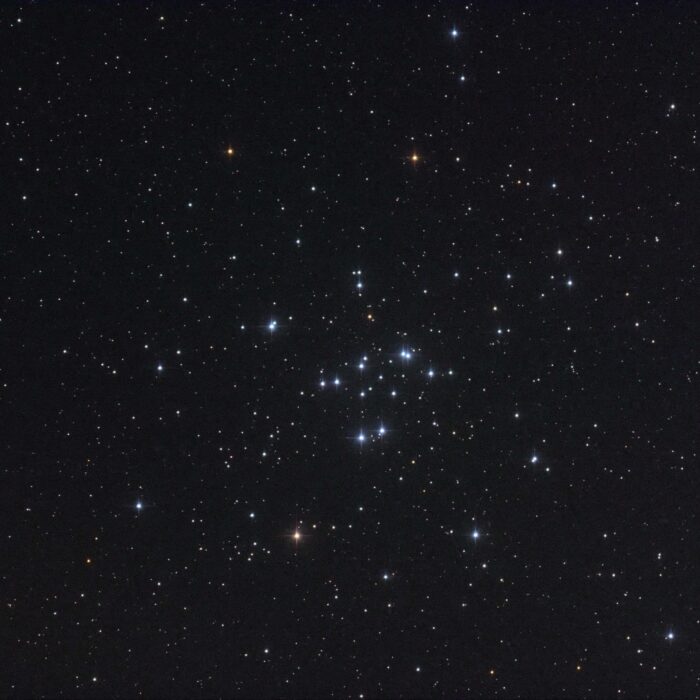
Starhopper, CC BY-SA 4.0, via Wikimedia Commons
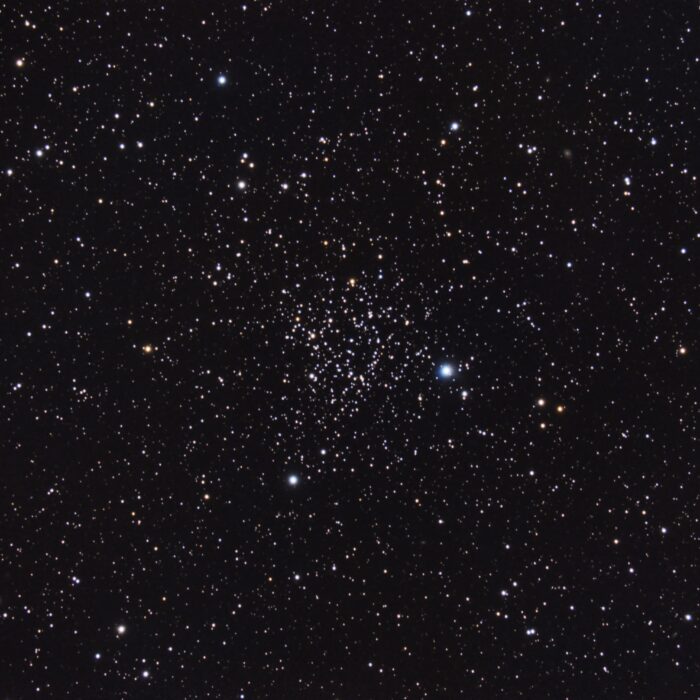
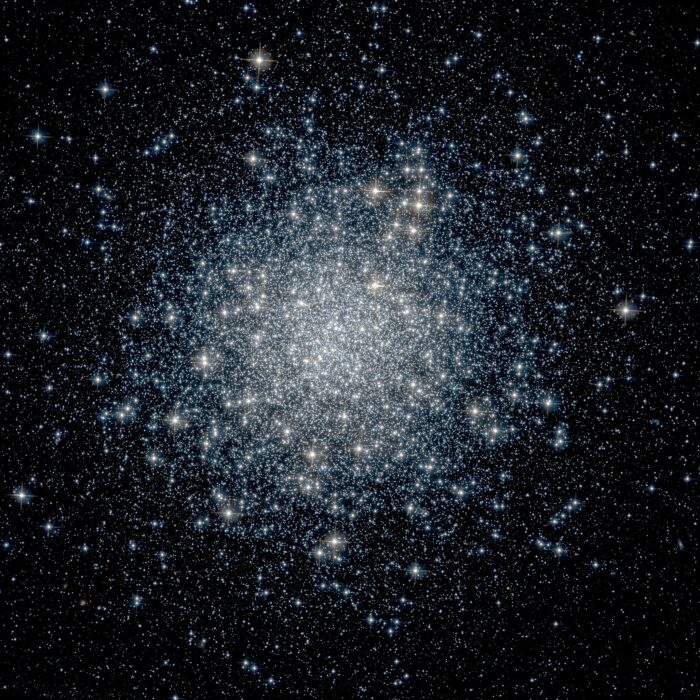
Lithopsian, CC BY-SA 4.0, via Wikimedia Commons
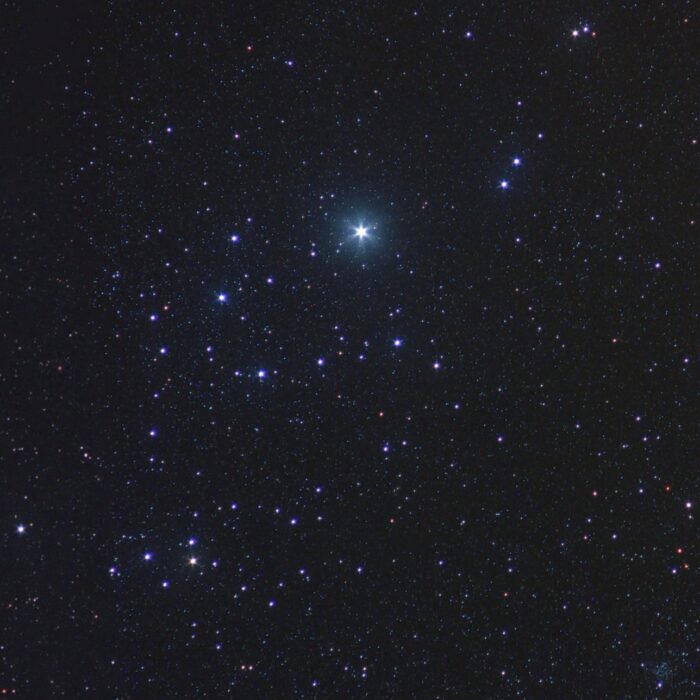
Martin Gembec (http://astrofotky.cz/~MaG), CC BY-SA 4.0, via Wikimedia Commons
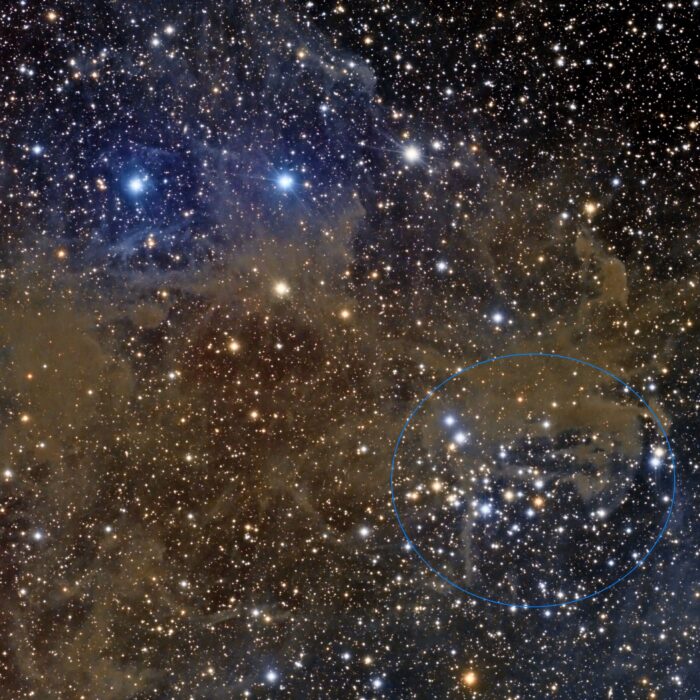
Above, the left blue nebula is vdB 18.
Bottom right star cluster is NGC 1342 (Mel 21).
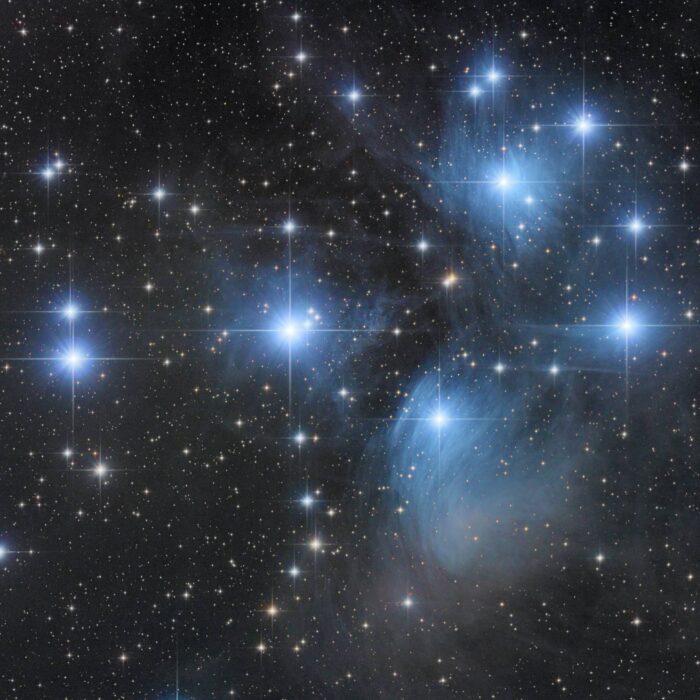
Starhopper, CC BY-SA 4.0, via Wikimedia Commons
The asterism is M45 (Pleiades).
The reflection nebula around the rightmost star (Electra) is called vdB 20, the one around the upper star (Maia) vdB 21, around the lower star (Merope) vdB 22 and the nebula around the star in the middle (Alcyone) vdB 23.
Near Merope there is a very small nebula known as Barnard's Merope Nebula (IC 349).
The complete nebular region around Merope is NGC 1435 (Merope Nebula).
The nebula around the upper star Maia is known as NGC 1432 (Maia Nebula).
The faint nebula above the middle star (Alcyone) is IC 1990.
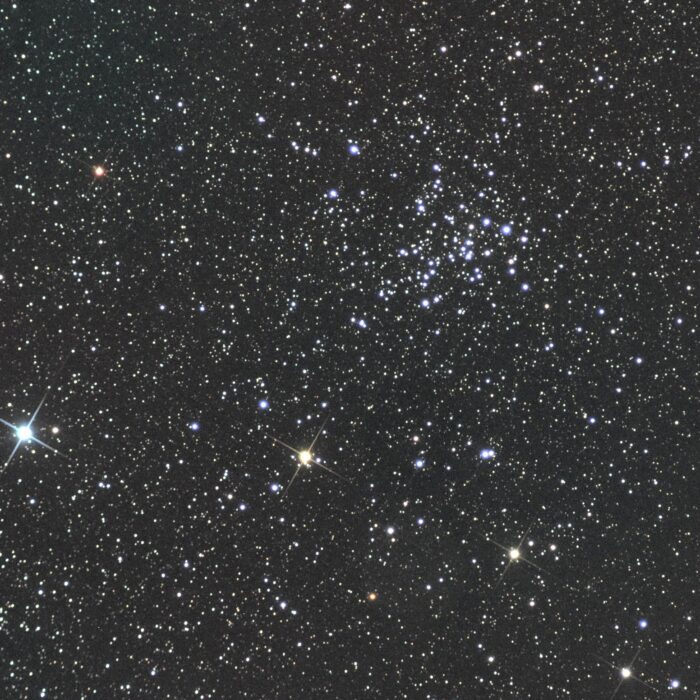
Egres73, CC BY-SA 4.0, via Wikimedia Commons
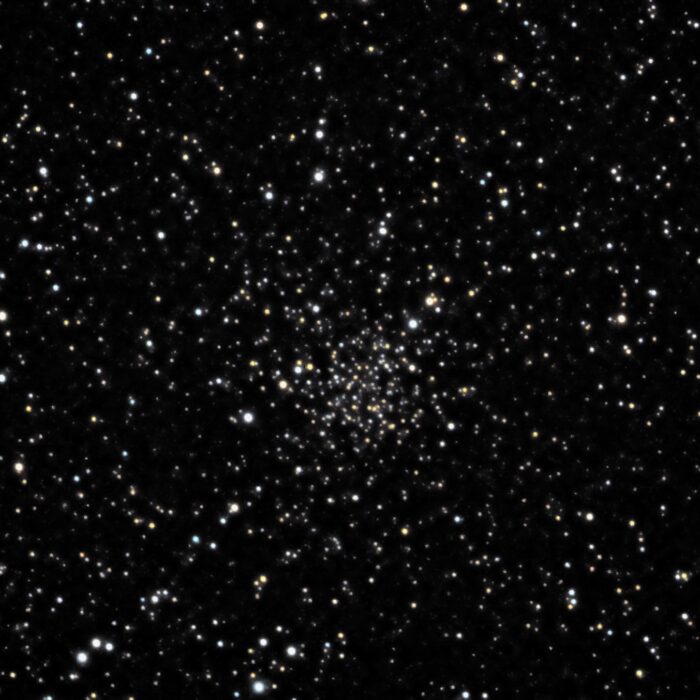
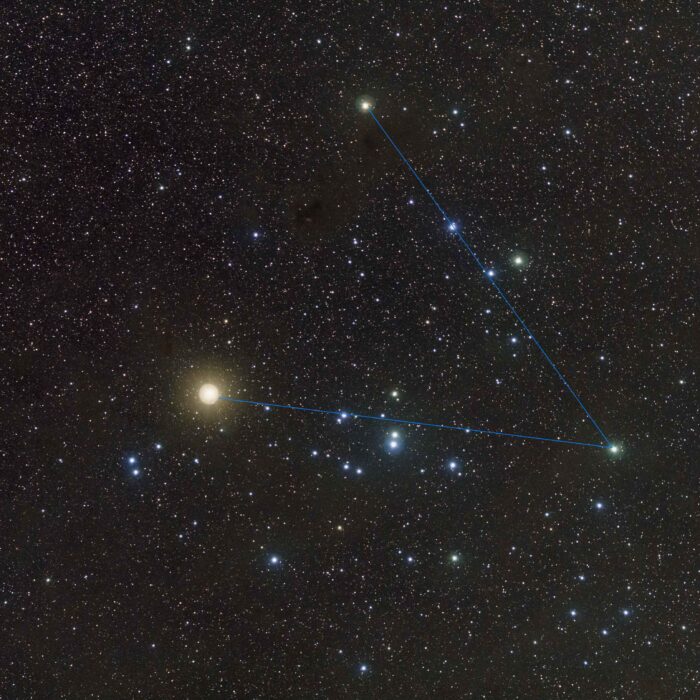
The bright star is Aldebran.
Top left is the star cluster NGC 1647 (Mel 26).
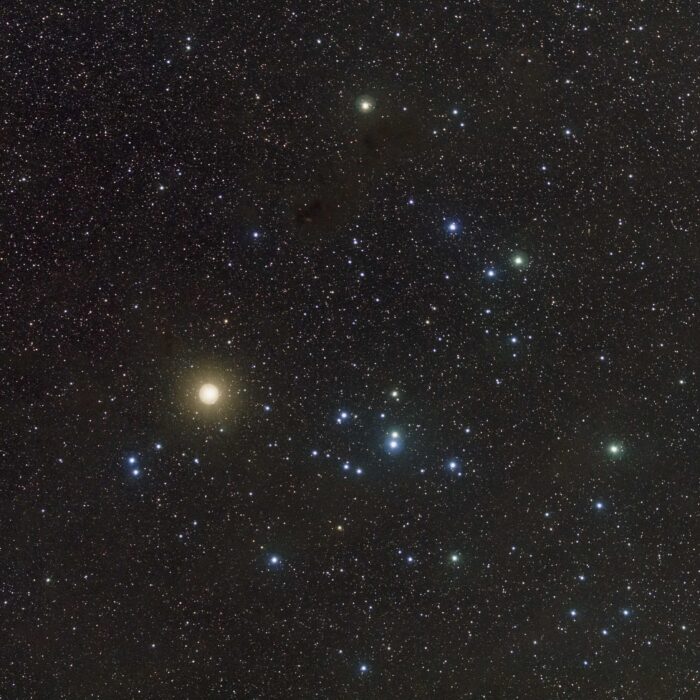
The bright star is Aldebran.
At upper left is star cluster NGC 1647 (Mel 26).
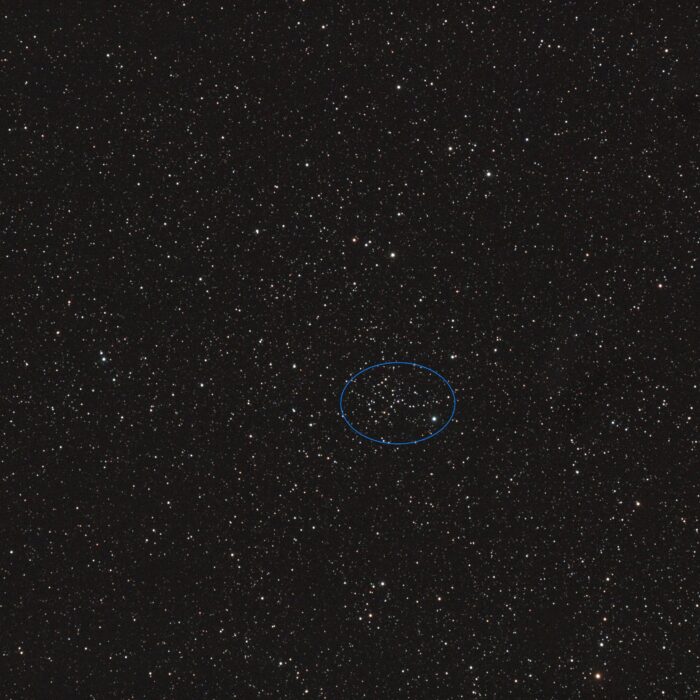
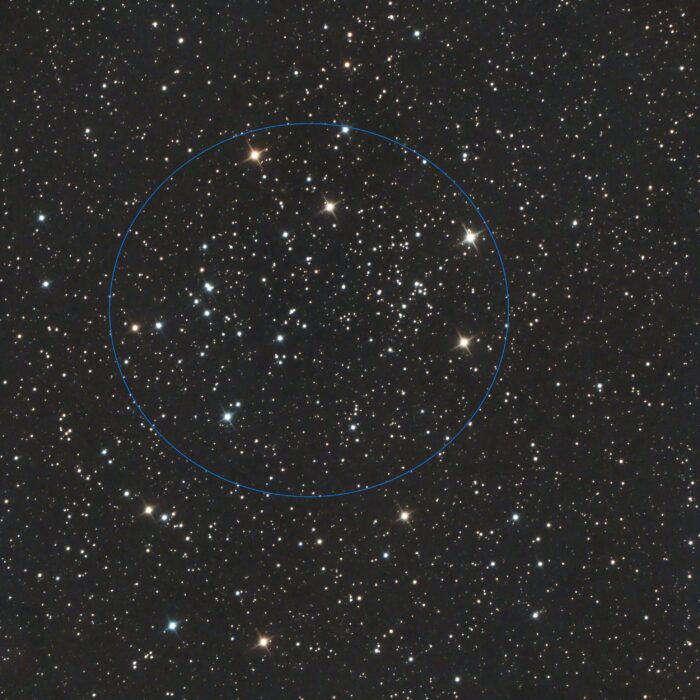
NGC 1746 is an asterism formed by the bright large stars.
In the center of NGC 1746 are the two overlapping star clusters NGC 1750 (center left) and NGC 1758 (center right).
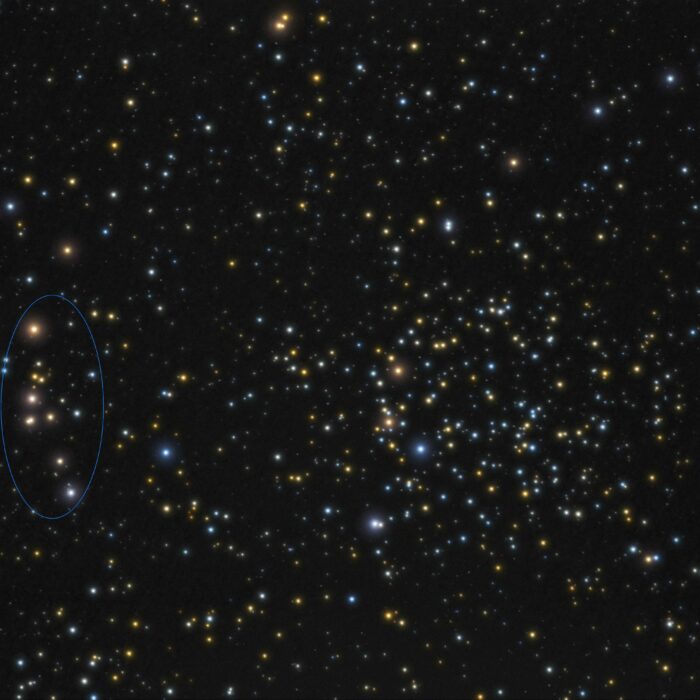
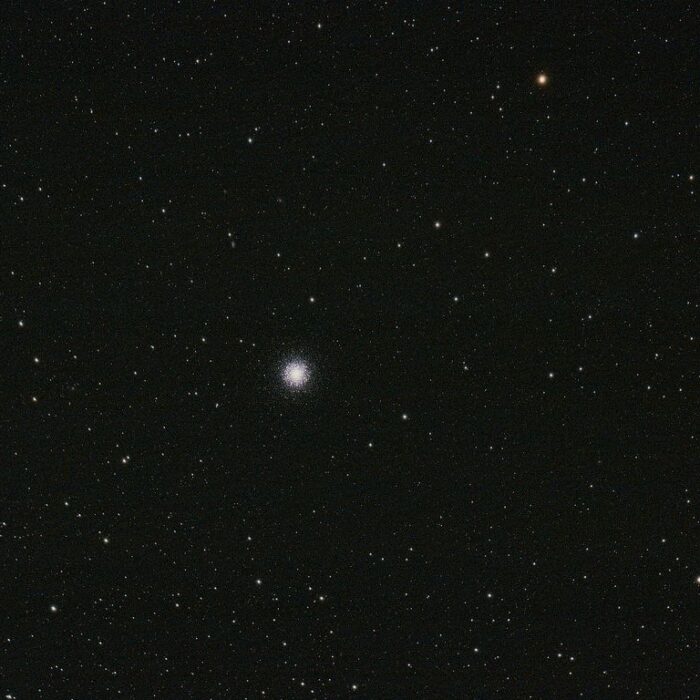
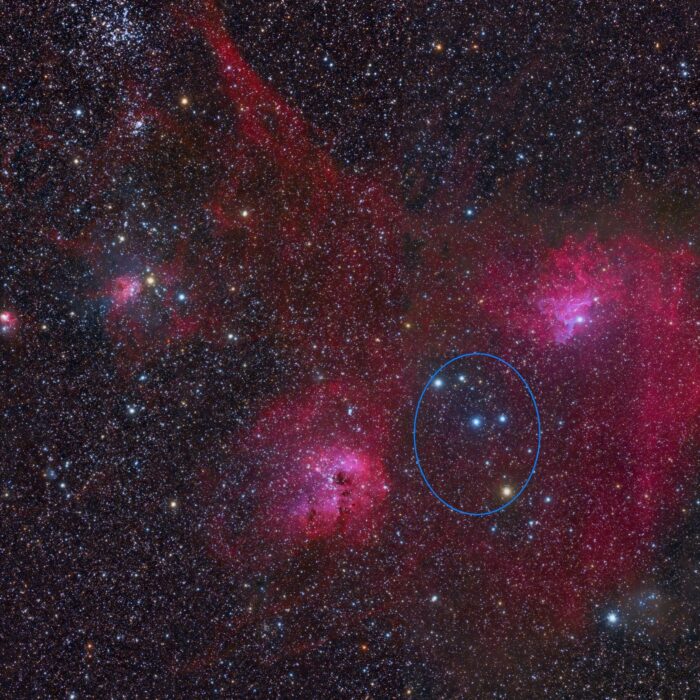
On the right the bright nebular section is IC 405 with the reflection nebula vdB 34.
Below is IC 410 with the embedded open cluster NGC 1893.
At the lower left is very faintly visible vdB 39.
Left center the larger nebula is IC 417 and left beside it the small nebula is NGC 1931 (Fly Nebula). Together with the rest of the nebulae they form the large nebula area Sh2-230.
In the upper left corner you can still see M38.
Directly below the small star cluster is NGC 1907.
Between IC 405 and IC 410 lies Melotte 31.
Melotte 31 consists of the six stars lying together (18 Aur - top right, 19 Aur - top left, 17 Aur - center right, IQ Aur - center left, 16 Aur - bottom) and the stars in between. Harrington also included the star 14 Auriga (at the bottom of the image) and called the structure a Lacrosse racket (Harrington 4).
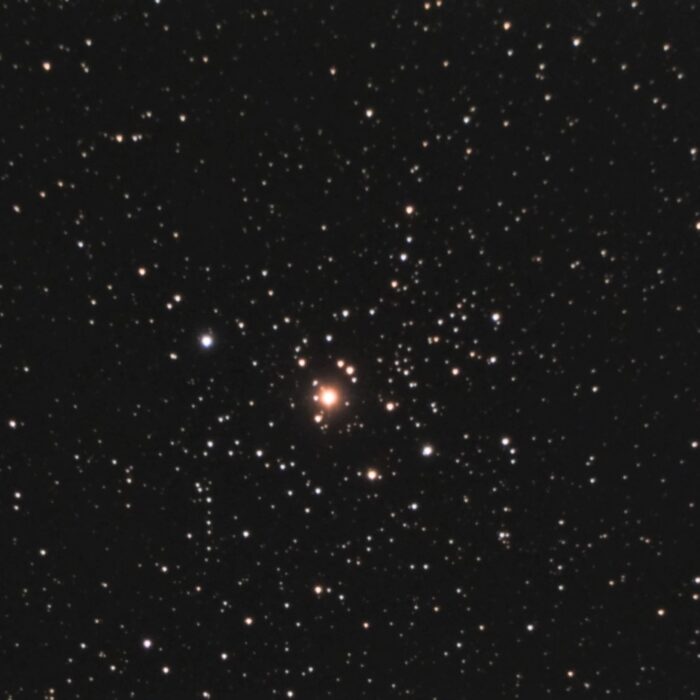
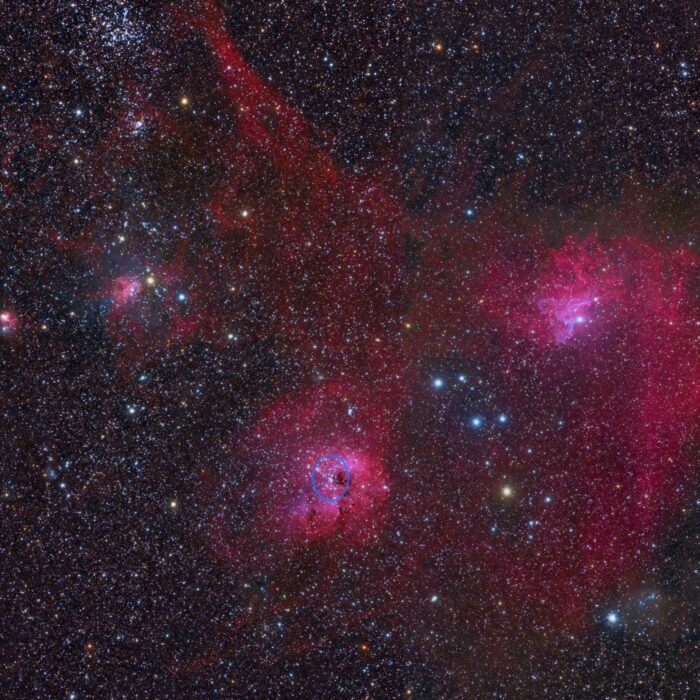
On the right the bright nebular section is IC 405 with the reflection nebula vdB 34.
Below is IC 410 with the embedded open star cluster NGC 1893.
At the lower left is very faintly visible vdB 39.
Left center the larger nebula is IC 417 and left beside it the small nebula is NGC 1931 (Fly Nebula). Together with the rest of the nebulae they form the large nebula area Sh2-230.
In the upper left corner you can still see M38.
Directly below the small star cluster is NGC 1907.
Between IC 405 and IC 410 lies Melotte 31.
Melotte 31 consists of the six adjacent stars (18 Aur - top right, 19 Aur - top left, 17 Aur - center right, IQ Aur - center left, 16 Aur - bottom) and the stars in between. Harrington also included the star 14 Auriga (at the bottom of the image) and called the structure a Lacrosse racket (Harrington 4).
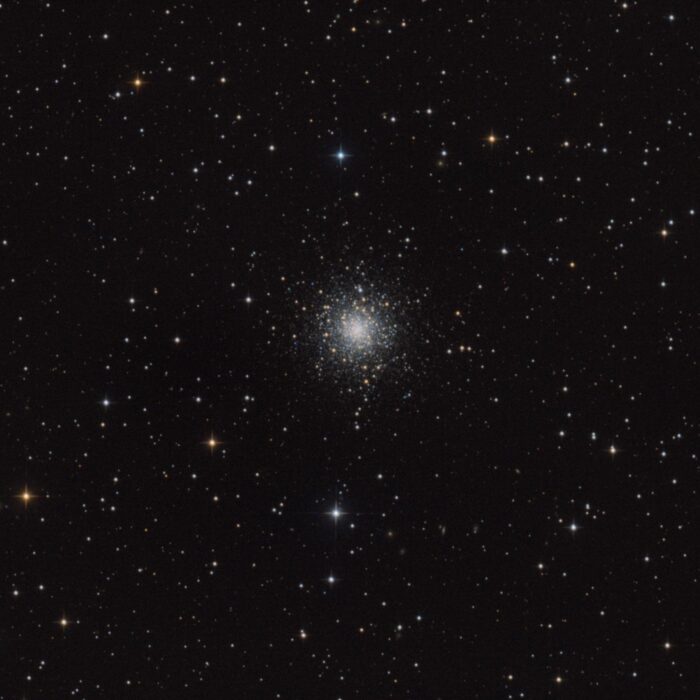
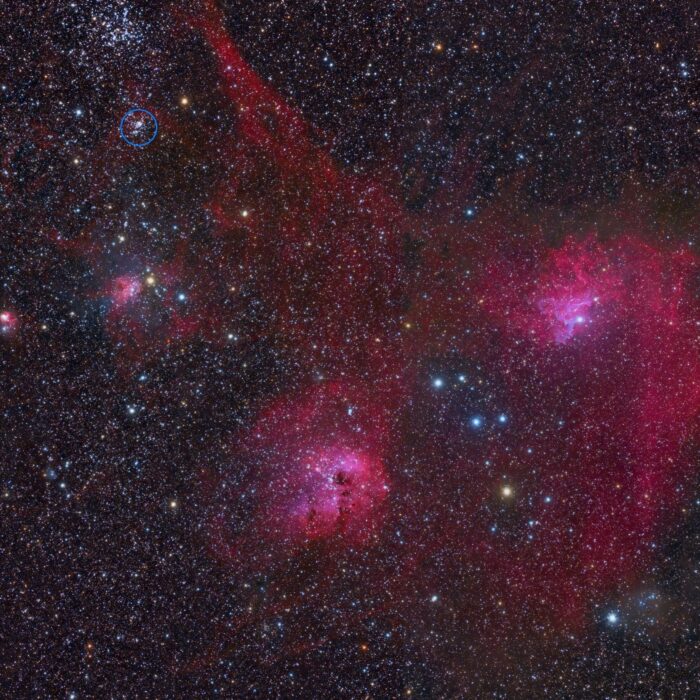
On the right the bright nebular section is IC 405 with the reflection nebula vdB 34.
Below is IC 410 with the embedded open star cluster NGC 1893.
At the lower left is very faintly visible vdB 39.
Left center the larger nebula is IC 417 and left beside it the small nebula is NGC 1931 (Fly Nebula). Together with the rest of the nebulae they form the large nebula area Sh2-230.
In the upper left corner you can still see M38.
Directly below the small star cluster is NGC 1907.
Between IC 405 and IC 410 lies Melotte 31.
Melotte 31 consists of the six adjacent stars (18 Aur - top right, 19 Aur - top left, 17 Aur - center right, IQ Aur - center left, 16 Aur - bottom) and the stars in between. Harrington also included the star 14 Auriga (at the bottom of the image) and called the structure a Lacrosse racket (Harrington 4).
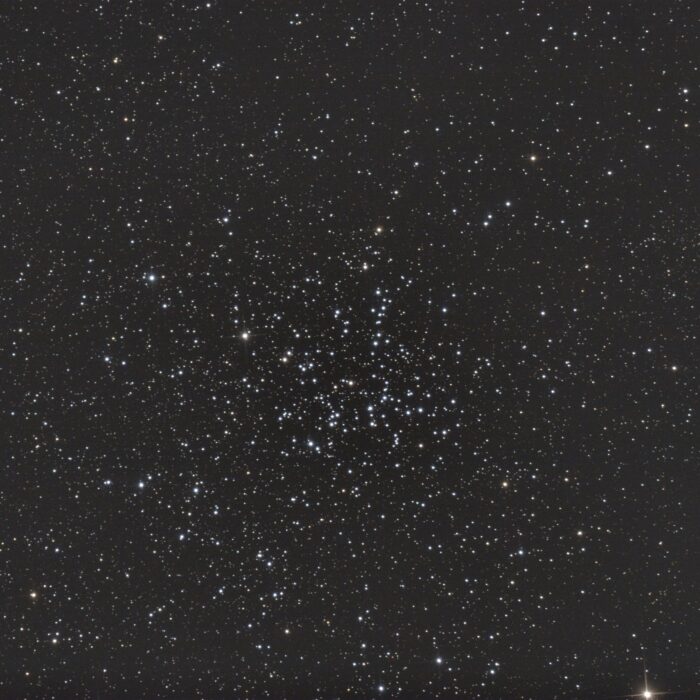
Starhopper, CC BY-SA 4.0, via Wikimedia Commons
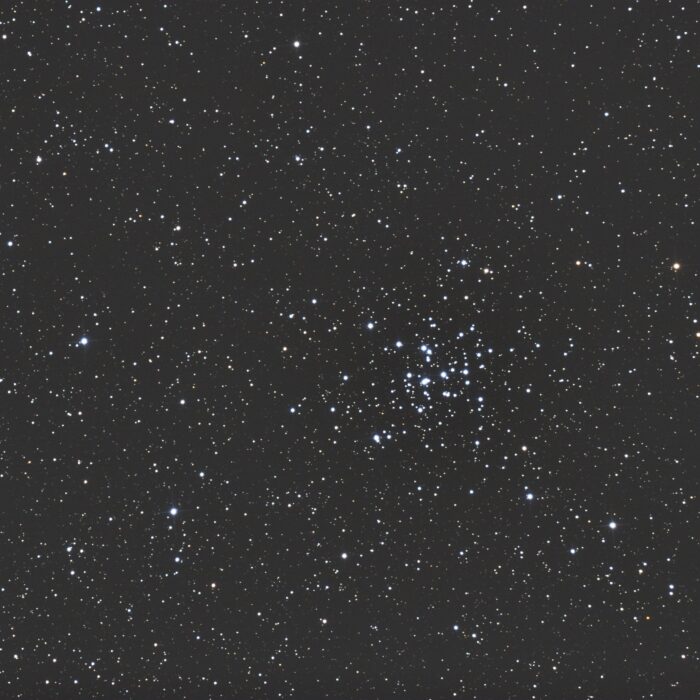
Starhopper, CC BY-SA 4.0, via Wikimedia Commons
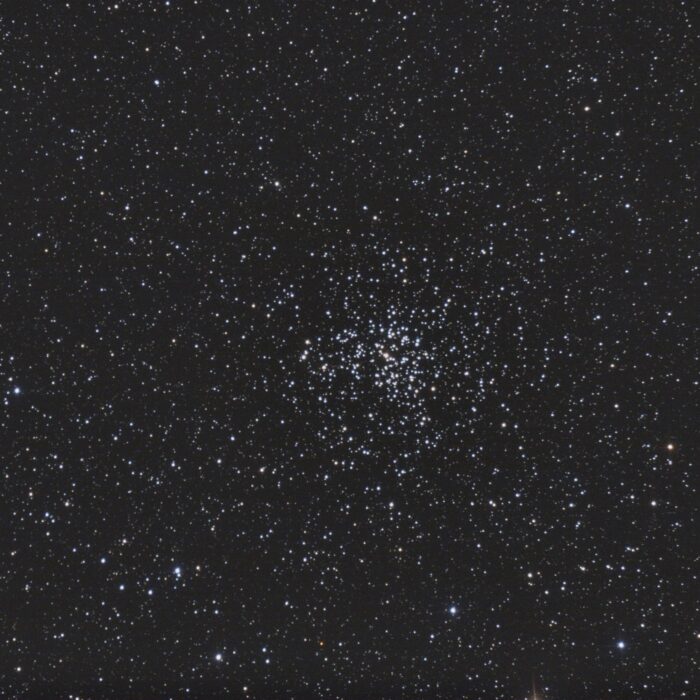
Starhopper, CC BY-SA 4.0, via Wikimedia Commons
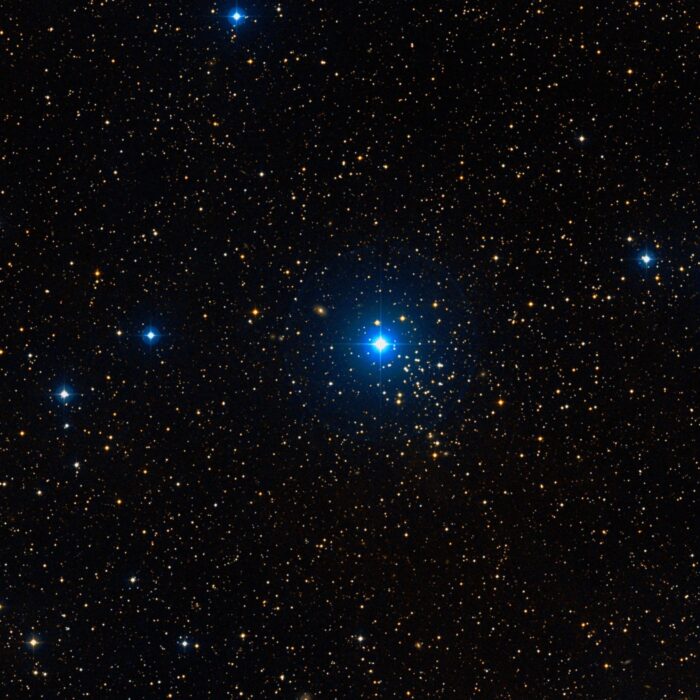
Copyright by WikiSky.org, WikiSky's snapshot tool
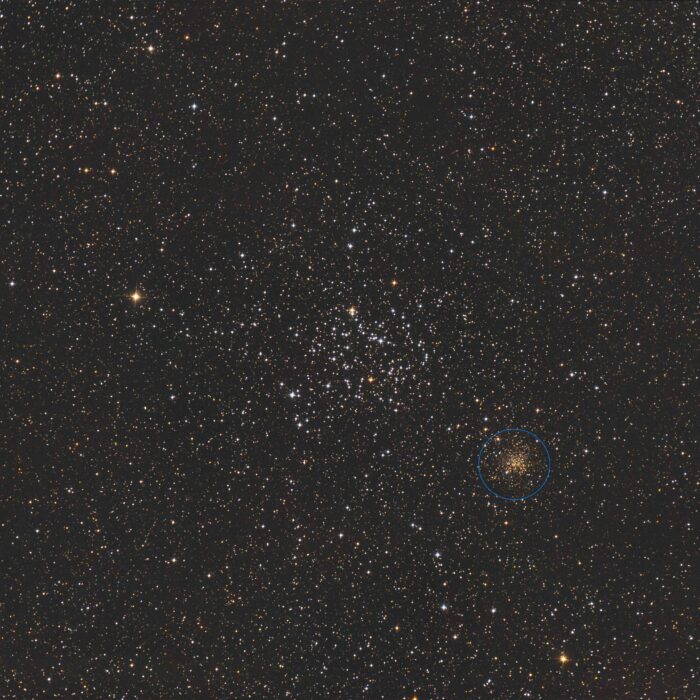
Starhopper, CC BY-SA 4.0, via Wikimedia Commons
In the center the open cluster is M35.
The small star cluster on the right below is NGC 2158.
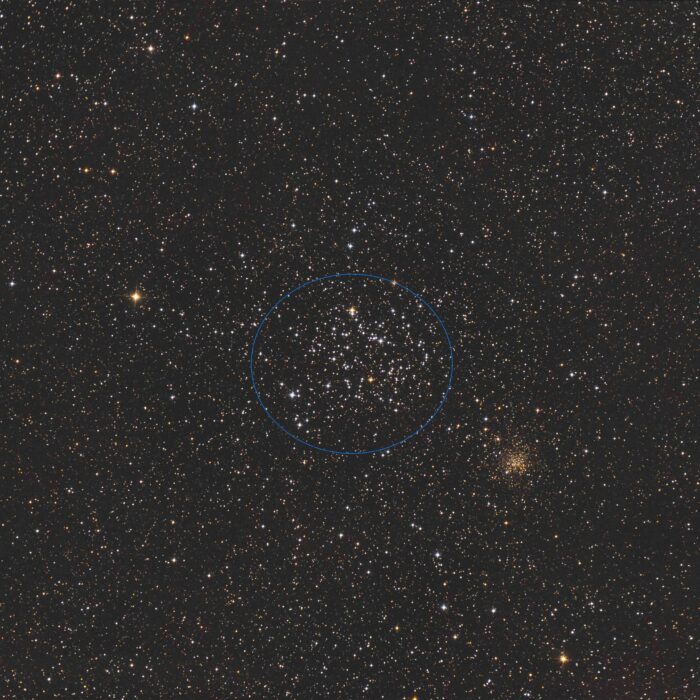
Starhopper, CC BY-SA 4.0, via Wikimedia Commons
In the center of the open cluster is M35.
The small star cluster right below is NGC 2158.
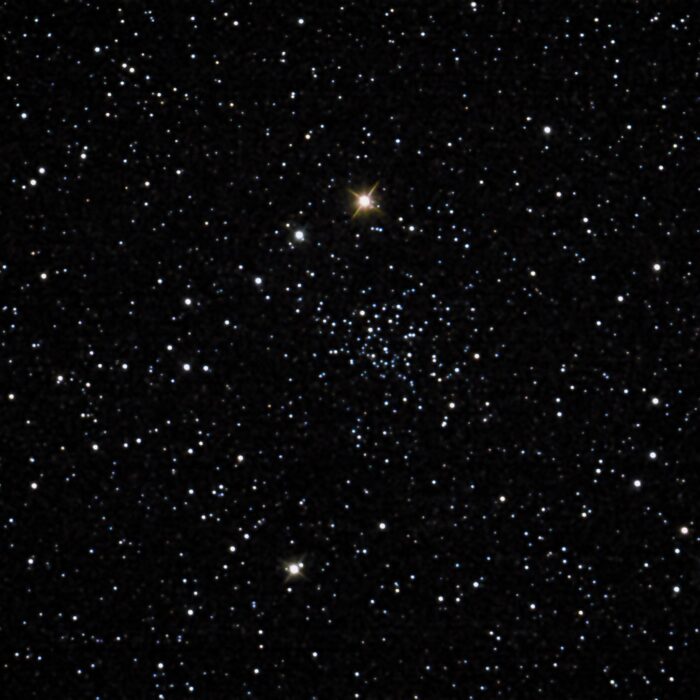
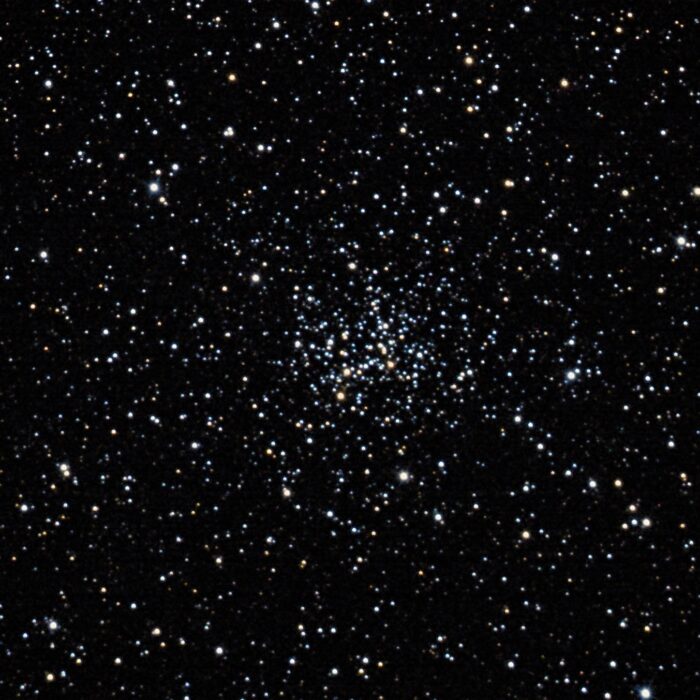
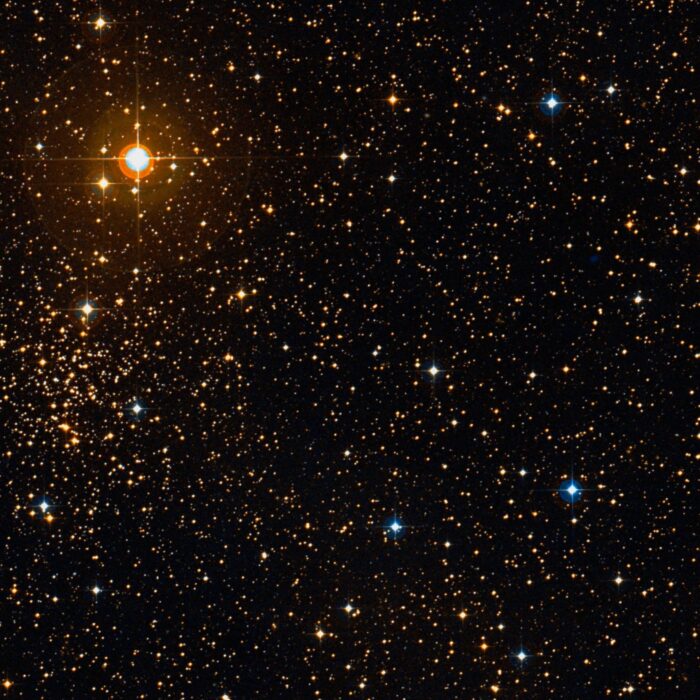
Copyright by WikiSky.org, WikiSky's snapshot tool
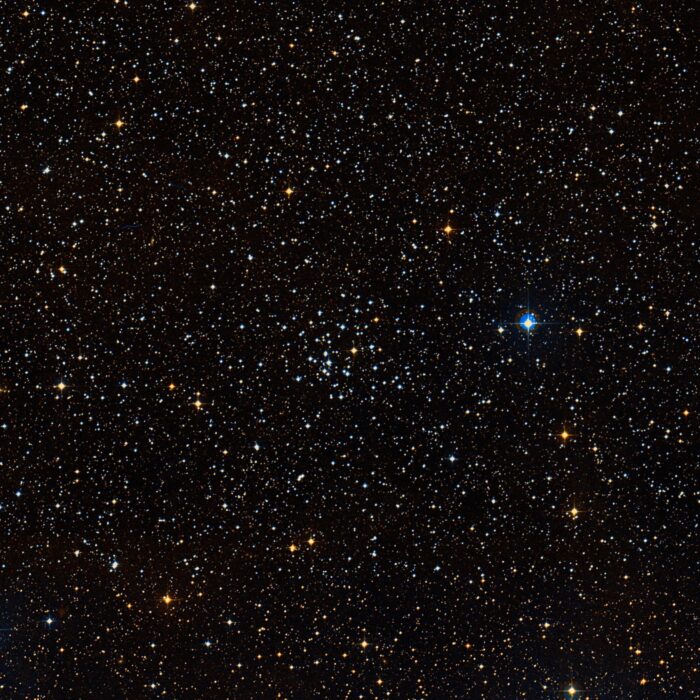
Copyright by WikiSky.org, WikiSky's snapshot tool
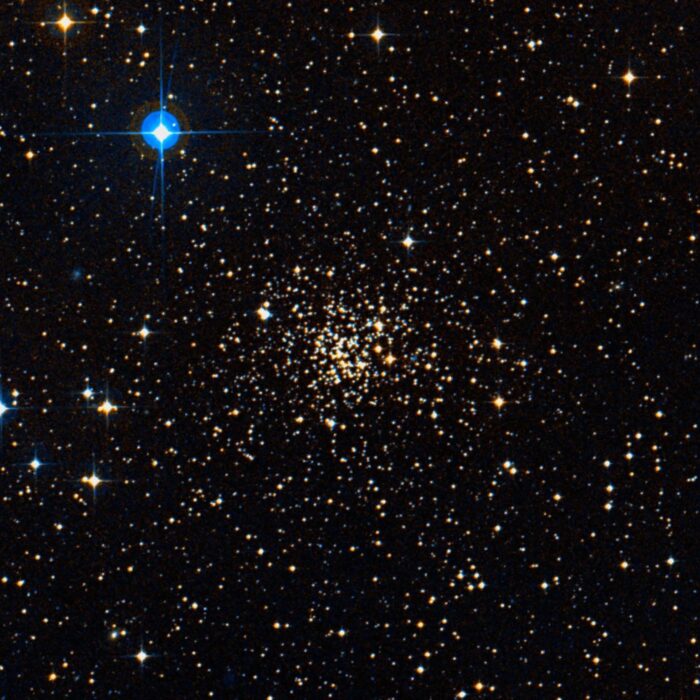
Copyright by WikiSky.org, WikiSky's snapshot tool
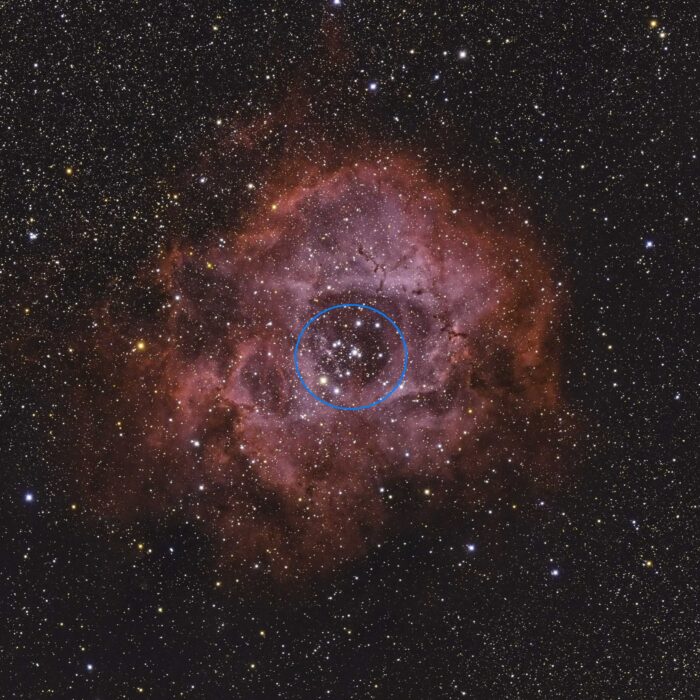
The star cluster in the center of the Rosette Nebula (C49, Sh2-275) is NGC 2244.
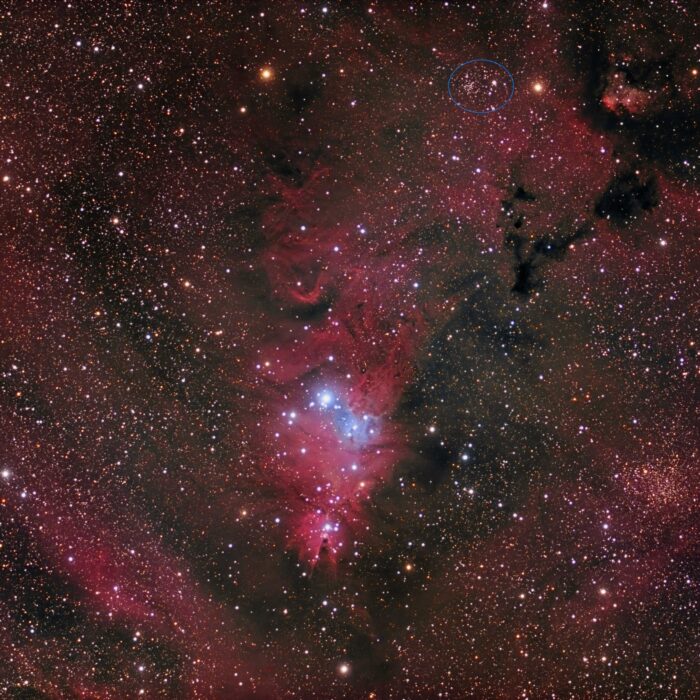
NGC 2264 consists of a variety of objects: The Cone Nebula is the small dark cone centered at the bottom of the image, and above it extends the Christmas Tree Star cluster whose stars form a triangle with the apex facing the Cone Nebula.
The Christmas Tree Star cluster lies within the emission nebula Sh2-273.
At the top center is NGC 2259, the star cluster to the right of NGC 2264 is TR 5.
The bright spot in the trunk of the Christmas tree star cluster is the star system S Monocerotis.
The area around the trunk of the Christmas tree star cluster is often called the Snowflake Cluster because there are many stars converging as spokes to form a point, which looks like a snowflake.
To the right of the tree trunk is an area of nebula above the blue nebula, which is called the Fox Fur Nebula because it looks like a stole of fox fur.
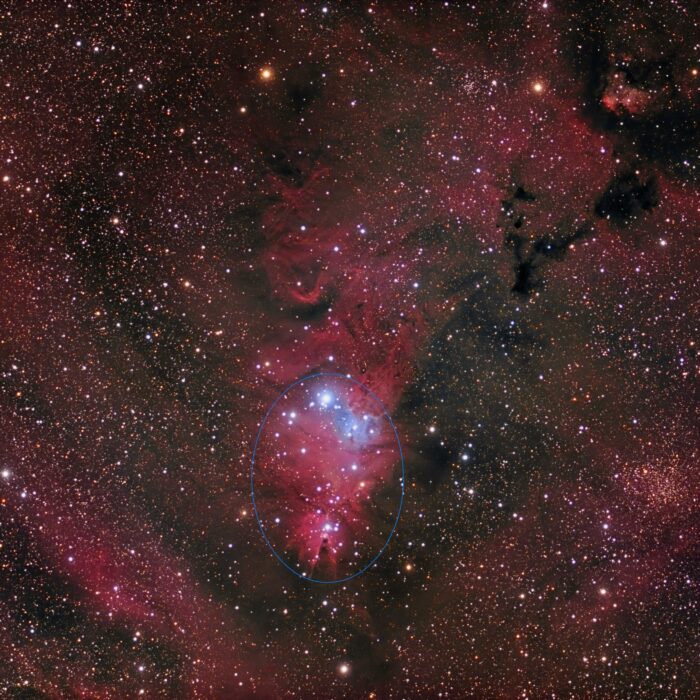
NGC 2264 consists of a variety of objects: The Cone Nebula is the small dark cone centered at the bottom of the image, and above it extends the Christmas Tree Star cluster whose stars form a triangle with the apex facing the Cone Nebula.
The Christmas Tree Star cluster lies within the emission nebula Sh2-273.
At the top center is NGC 2259, the star cluster to the right of NGC 2264 is TR 5.
The bright spot in the trunk of the Christmas tree star cluster is the star system S Monocerotis.
The area around the trunk of the Christmas tree star cluster is often called the Snowflake Cluster because there are many stars converging as spokes to form a point, which looks like a snowflake.
To the right of the tree trunk is an area of nebula above the blue nebula, which is called the Fox Fur Nebula because it looks like a stole of fox fur.
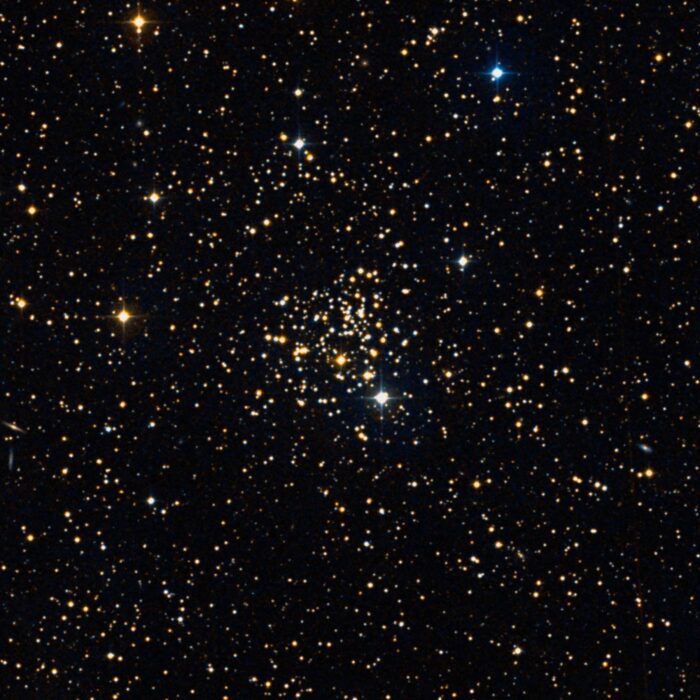
Copyright by WikiSky.org, WikiSky's snapshot tool
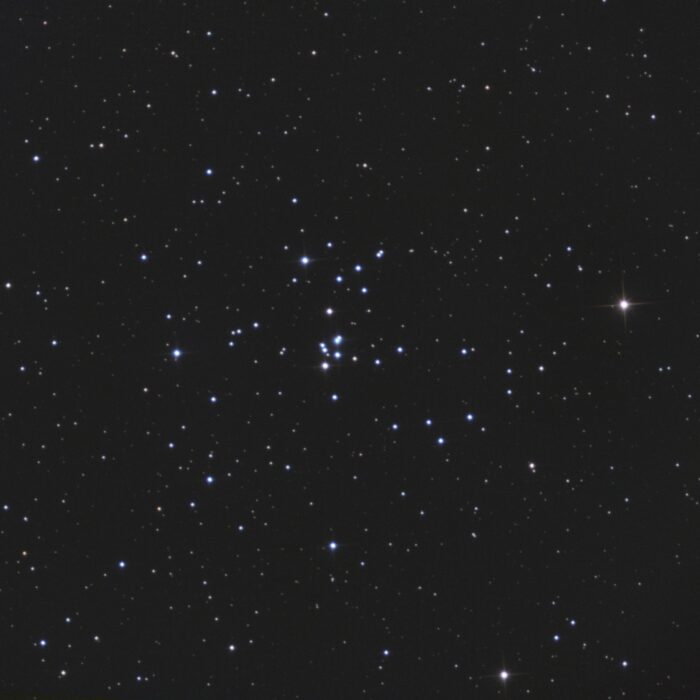
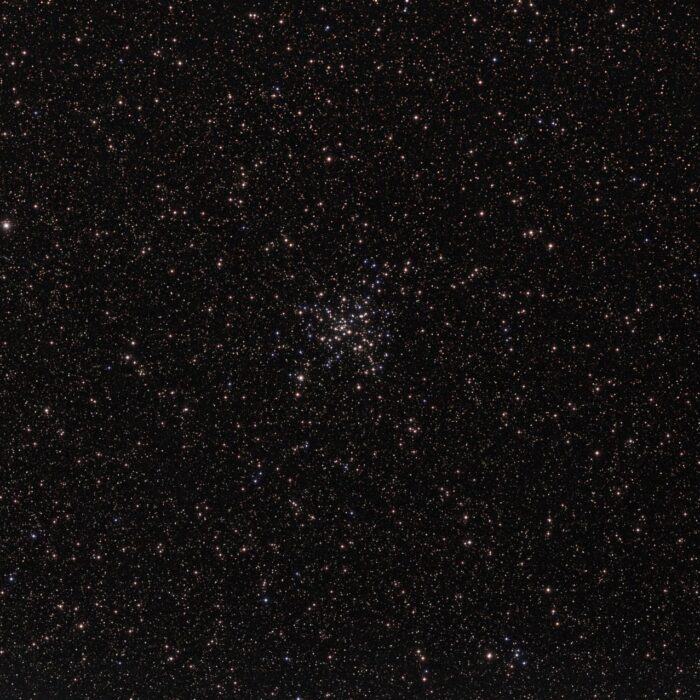
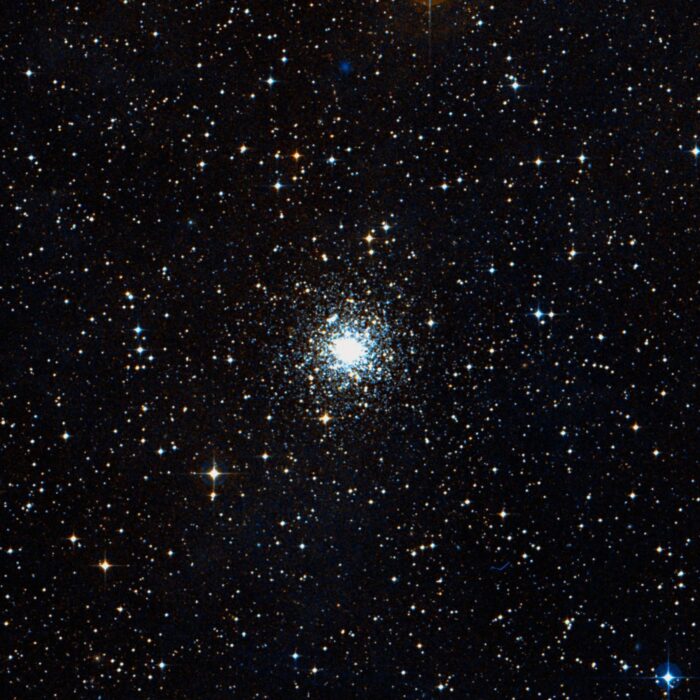
Copyright by WikiSky.org, WikiSky's snapshot tool
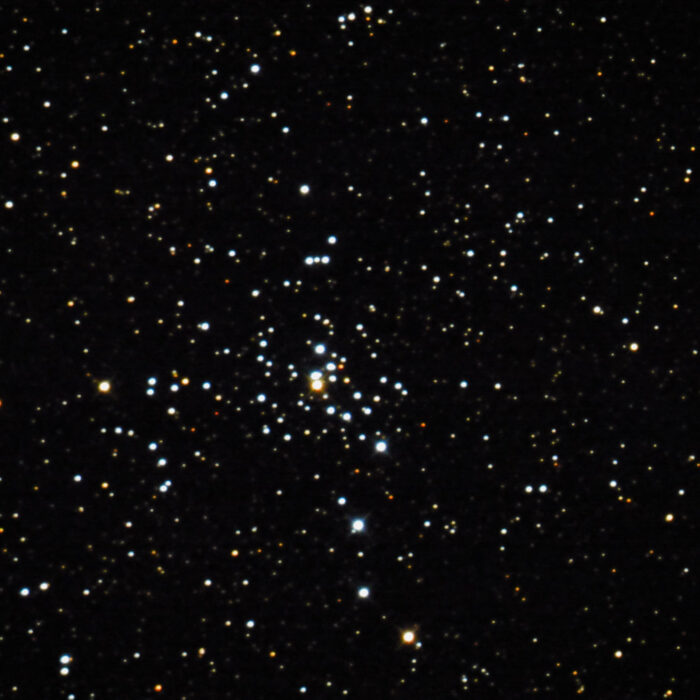
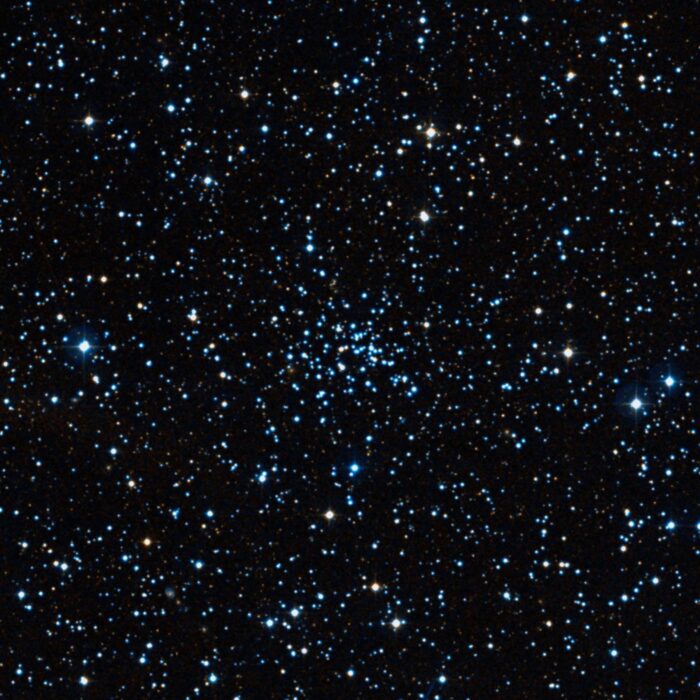
Copyright by WikiSky.org, WikiSky's snapshot tool
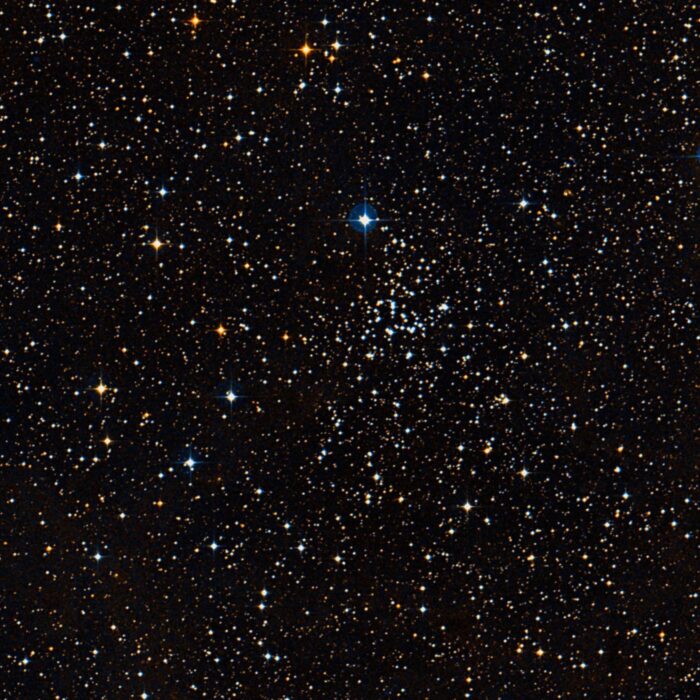
Copyright by WikiSky.org, WikiSky's snapshot tool
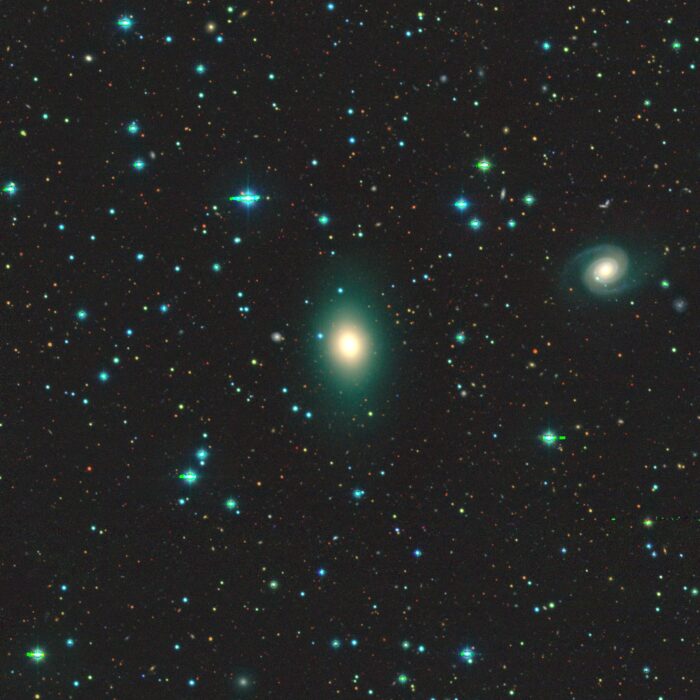
Copyright by Legacy Surveys / D. Lang (Perimeter Institute), CC BY 4.0
The galaxy to the right is IC 2174.
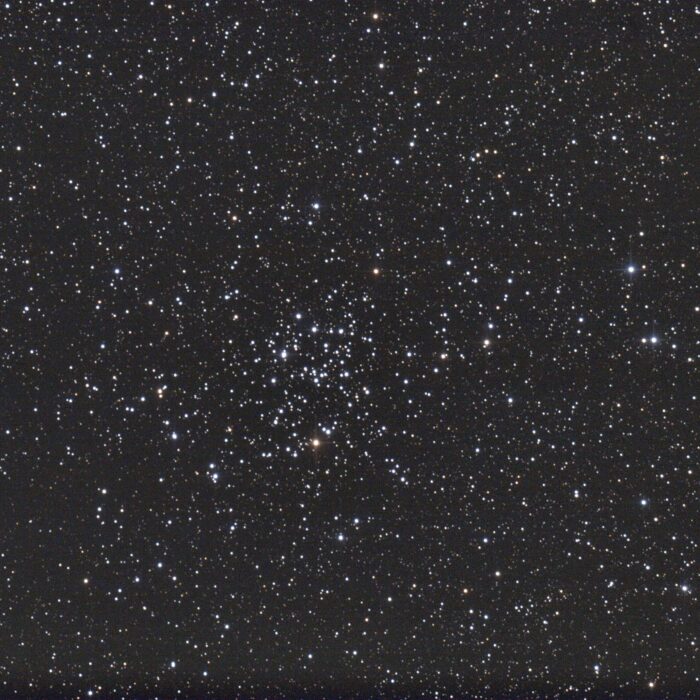
Starhopper, CC BY-SA 4.0, via Wikimedia Commons
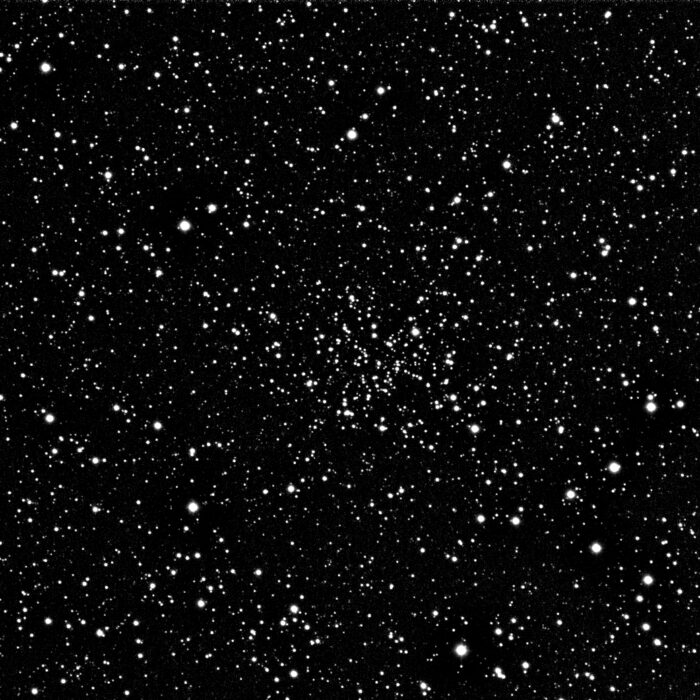
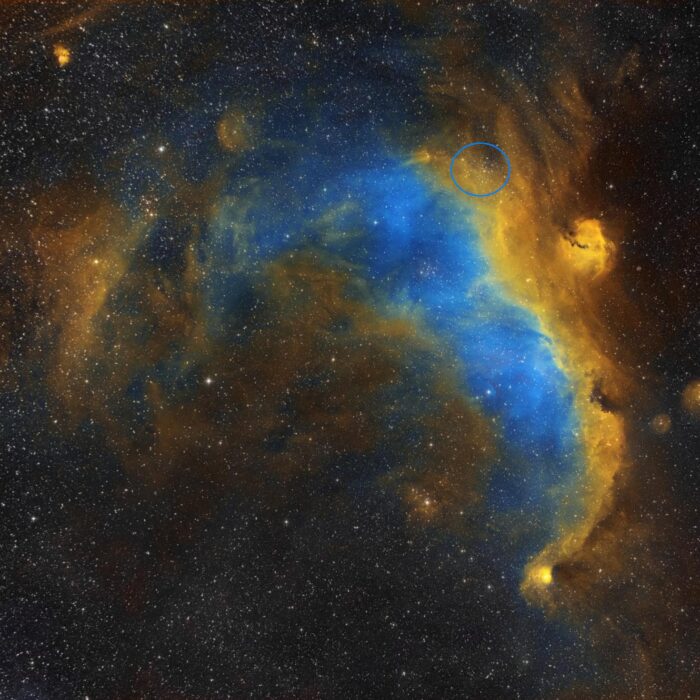
Even though IC 2177 is called the Gull Nebula, IC 2177 is not the complete nebula, but only the head, with the bright star HD 53367 in the center.
The wings are the nebula Sh2-296.
Just to the right of the head is very small planetary nebula PK 223-2.1.
Below it are the two nebulae Sh2-293 (the larger one) and Sh2-295 (the smaller one).
To the left of the two small nebulae, in the dark indentation in the wing, is the reflection nebula NGC 2327. Directly below it the cluster of stars with nebula is vdB 92.
To the left of it in the blue area near the bright stars is vdB 95.
Down at the wing tip, the bright yellow nebula, is Sh2-297.
At the upper wing (upper edge of the yellow nebula), is the star cluster NGC 2335.
The star cluster NGC 2343 is to the left of the head in the blue area.
Even further to the left, before the bright yellow area starts, is the star cluster NGC 2353. The bright yellow nebula at the upper left is Sh2-294.
The yellow area to the left of the lower wing is the carbon star W Canis Majoris.
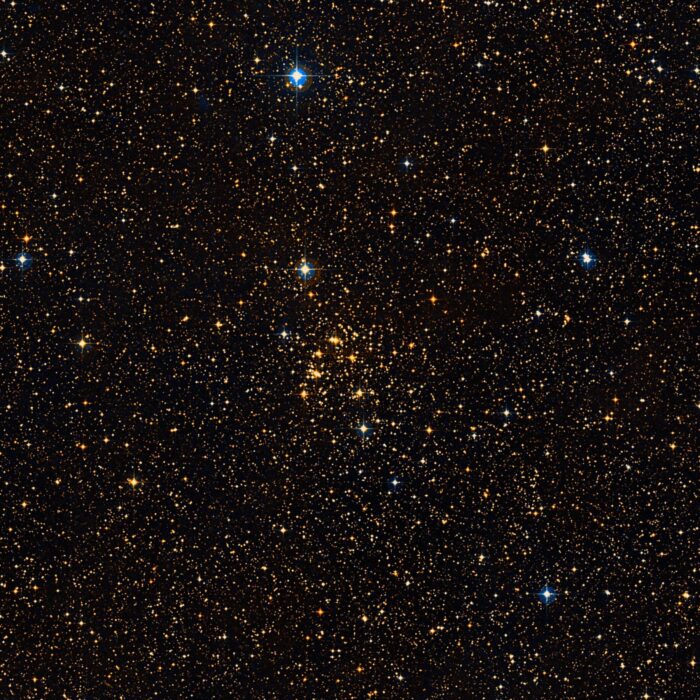
Copyright by WikiSky.org, WikiSky's snapshot tool
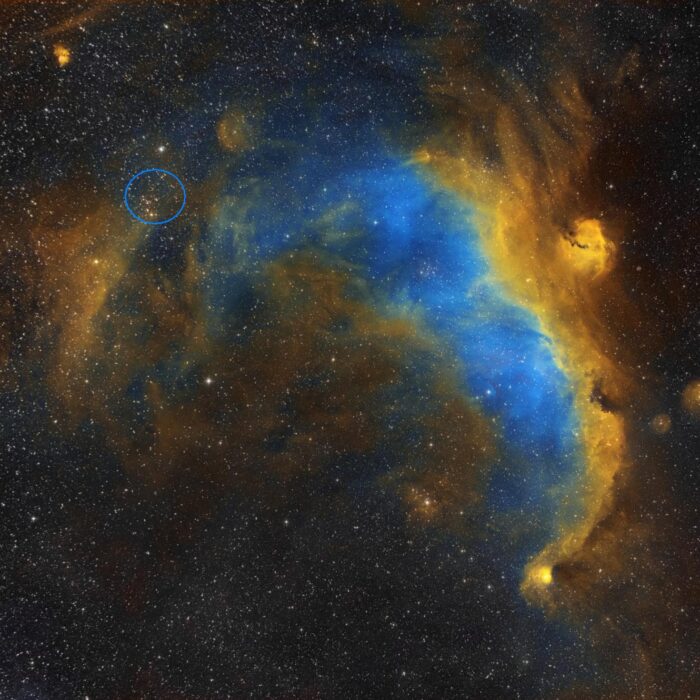
Even though IC 2177 is called the Gull Nebula, IC 2177 is not the complete nebula, but only the head, with the bright star HD 53367 in the center.
The wings are the nebula Sh2-296.
Just to the right of the head is very small planetary nebula PK 223-2.1.
Below it are the two nebulae Sh2-293 (the larger one) and Sh2-295 (the smaller one).
To the left of the two small nebulae, in the dark indentation in the wing, is the reflection nebula NGC 2327. Directly below it the cluster of stars with nebula is vdB 92.
To the left of it in the blue area near the bright stars is vdB 95.
Down at the wing tip, the bright yellow nebula, is Sh2-297.
At the upper wing (upper edge of the yellow nebula), is the star cluster NGC 2335.
The star cluster NGC 2343 is to the left of the head in the blue area.
Even further to the left, before the bright yellow area starts, is the star cluster NGC 2353. The bright yellow nebula at the upper left is Sh2-294.
The yellow area to the left of the lower wing is the carbon star W Canis Majoris.
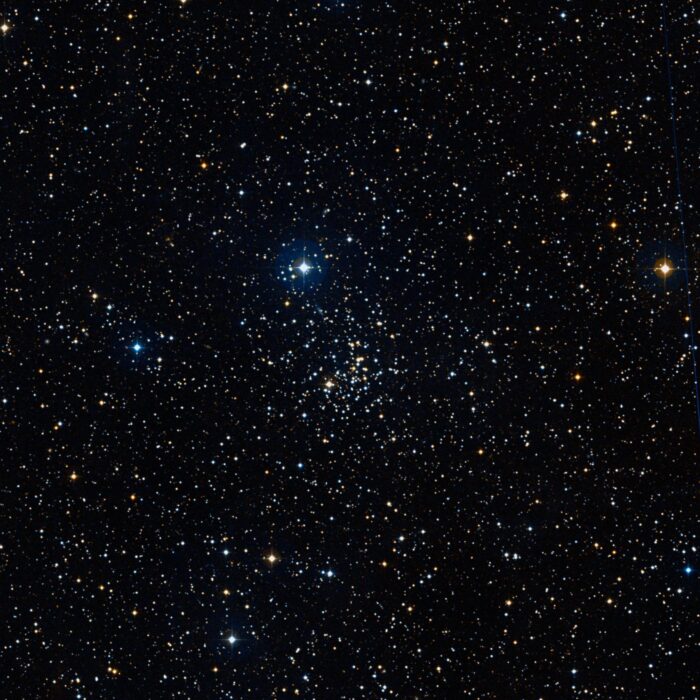
Copyright by WikiSky.org, WikiSky's snapshot tool
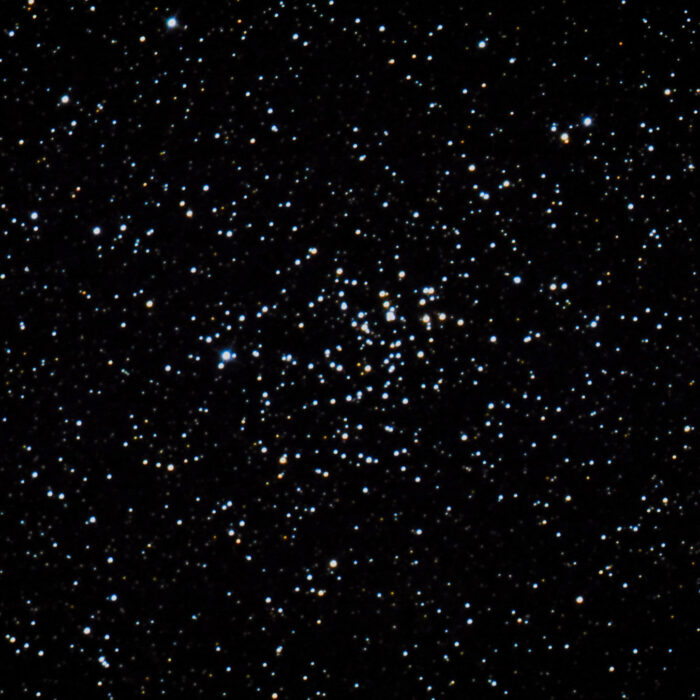
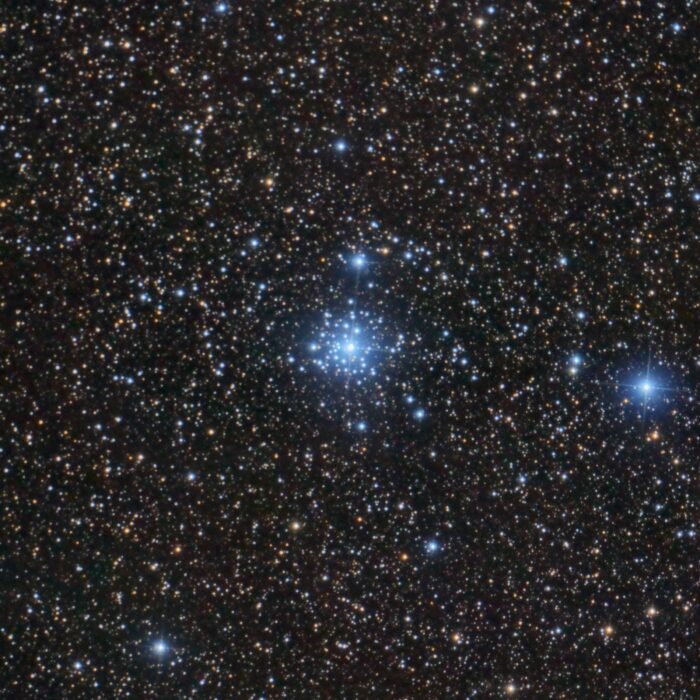
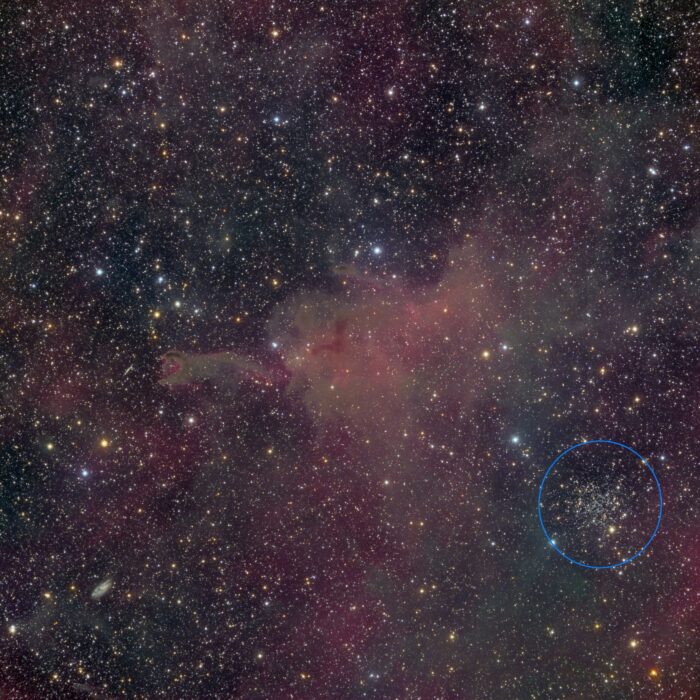
On the lower left, the spiral galaxy NGC 2427 can be seen.
On the right the large star cluster is Mel 66 (the oldest known open cluster).
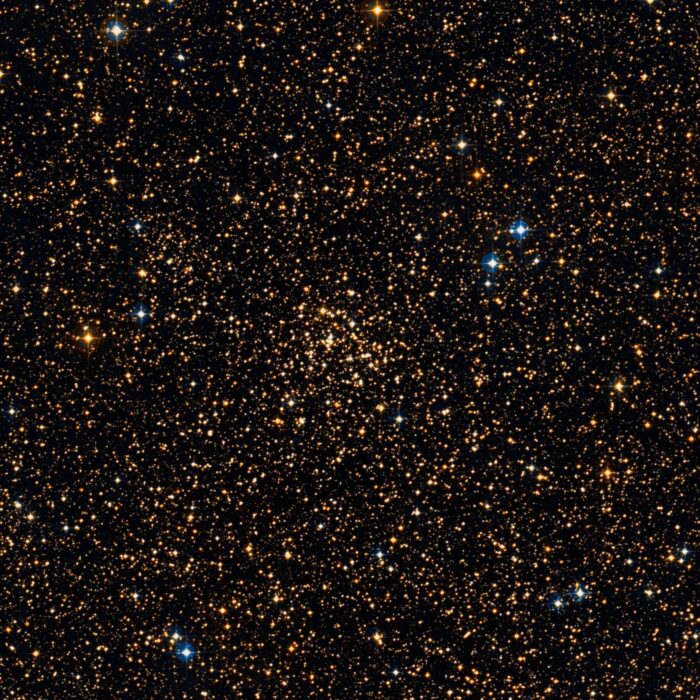
Copyright by WikiSky.org, WikiSky's snapshot tool

M46 is at the left edge of the image.
M47 is on the right.
The planetary nebula NGC 2438 (small blue nebula) is in the foreground and does not belong to M46. (According to recent investigations, it could be that the planetary nebula interferes with the star cluster after all and has the same distance. (https://arxiv.org/pdf/0710.2900.pdf)
Just above M46 is the planetary nebula Minkowski 1-18 (visible only with high image magnification).
Between M46 and M47 (slightly below) is the open cluster NGC 2425.
Above M47 is the open cluster NGC 2423.
In the lower right corner is the star cluster NGC 2414.

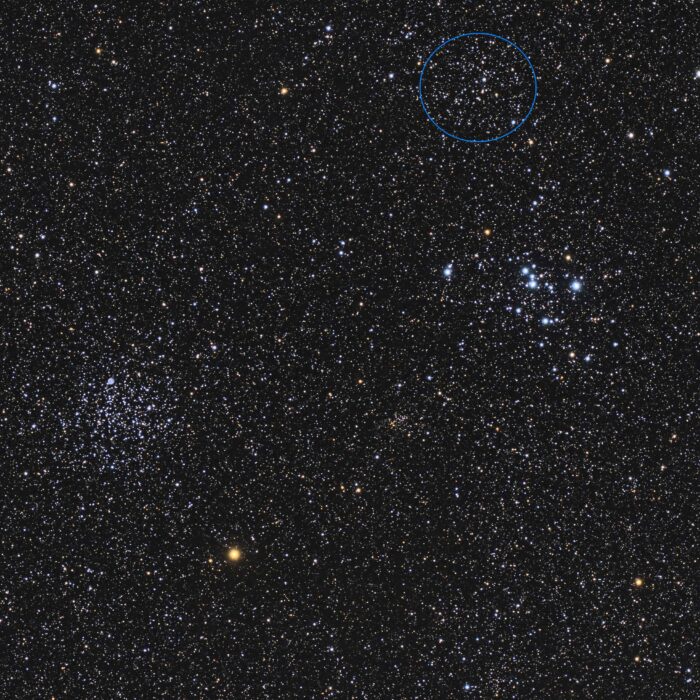
M46 is on the left edge of the image.
M47 is on the right.
The planetary nebula NGC 2438 (small blue nebula) is in the foreground and does not belong to M46. (According to recent studies, it could be that the planetary nebula does interargue with the star cluster and has the same distance. (https://arxiv.org/pdf/0710.2900.pdf)
Just above M46 is the planetary nebula Minkowski 1-18 (visible only with high image magnification).
Between M46 and M47 (slightly below) is the open cluster NGC 2425.
Above M47 is the open star cluster NGC 2423.
In the lower right corner is the star cluster NGC 2414.
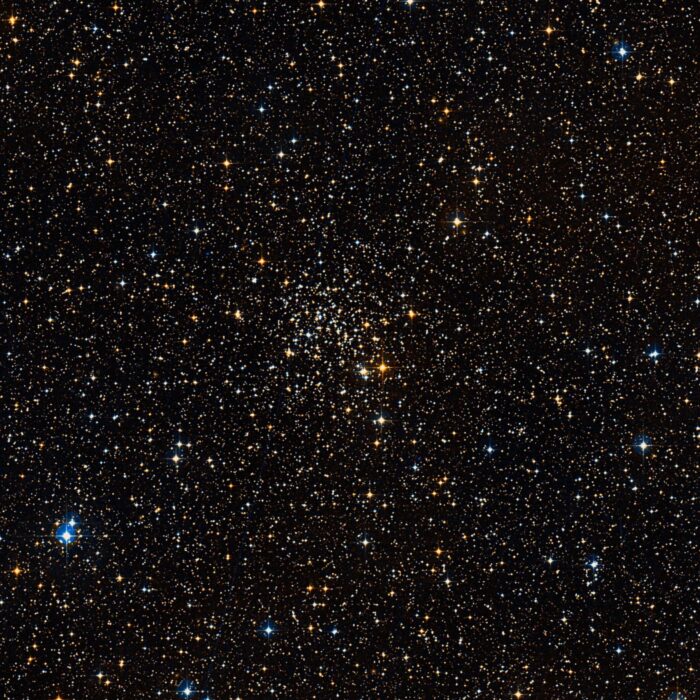
Copyright by WikiSky.org, WikiSky's snapshot tool
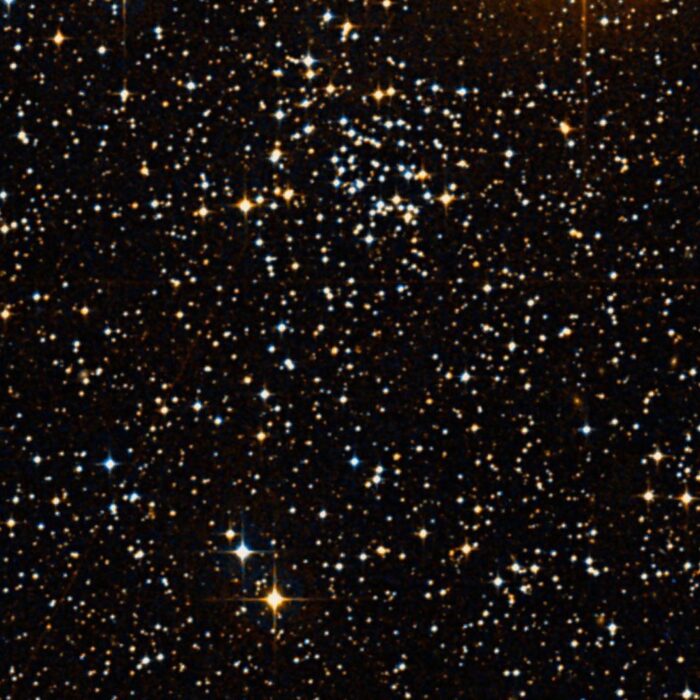
Copyright by WikiSky.org, WikiSky's snapshot tool
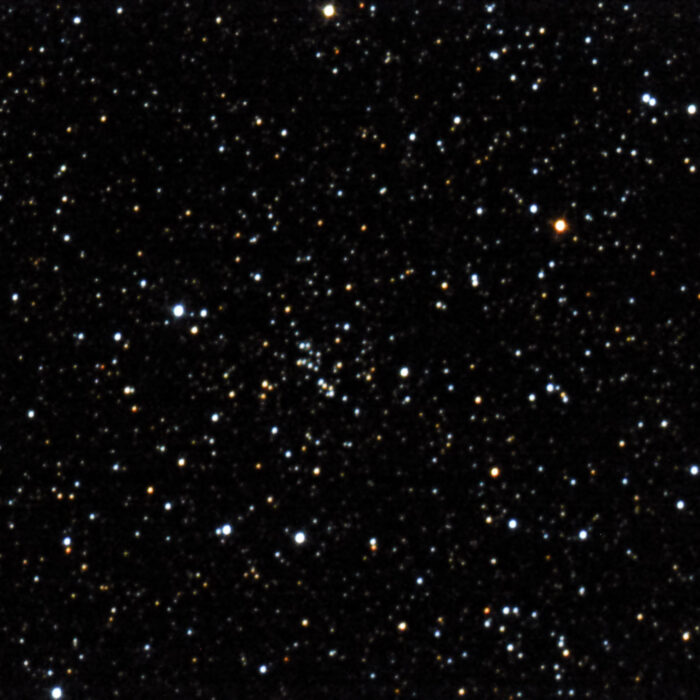
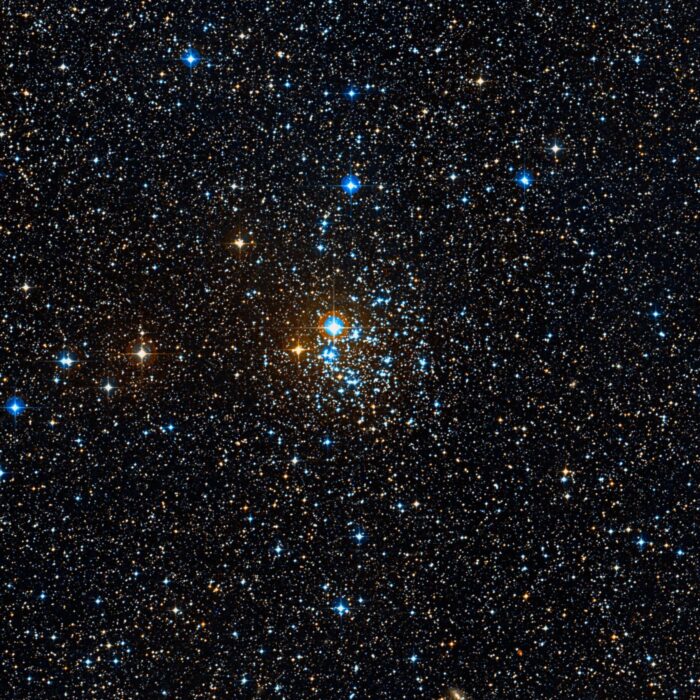
Copyright by WikiSky.org, WikiSky's snapshot tool
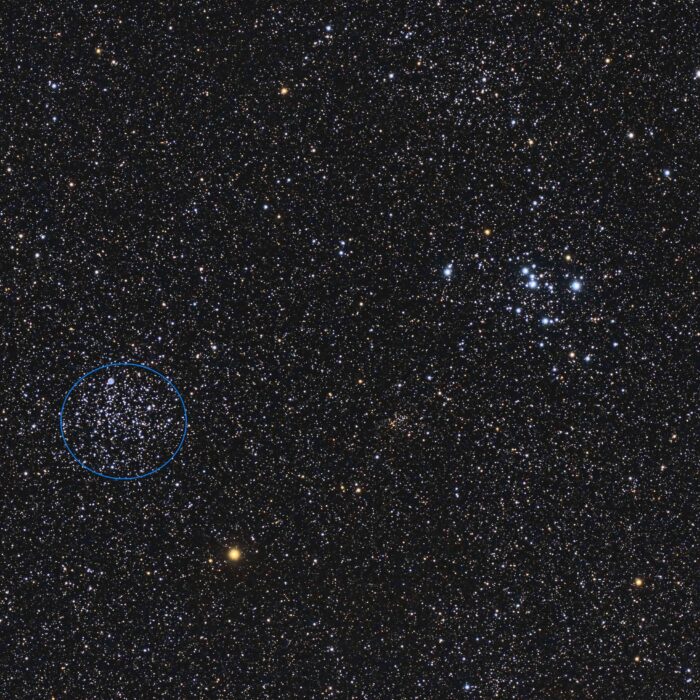
M46 is at the left edge of the image.
M47 is on the right.
The planetary nebula NGC 2438 (small blue nebula) is in the foreground and does not belong to M46. (According to recent investigations, it could be that the planetary nebula interferes with the star cluster after all and has the same distance. (https://arxiv.org/pdf/0710.2900.pdf)
Just above M46 is the planetary nebula Minkowski 1-18 (visible only with high image magnification).
Between M46 and M47 (slightly below) is the open cluster NGC 2425.
Above M47 is the open cluster NGC 2423.
In the lower right corner is the star cluster NGC 2414.
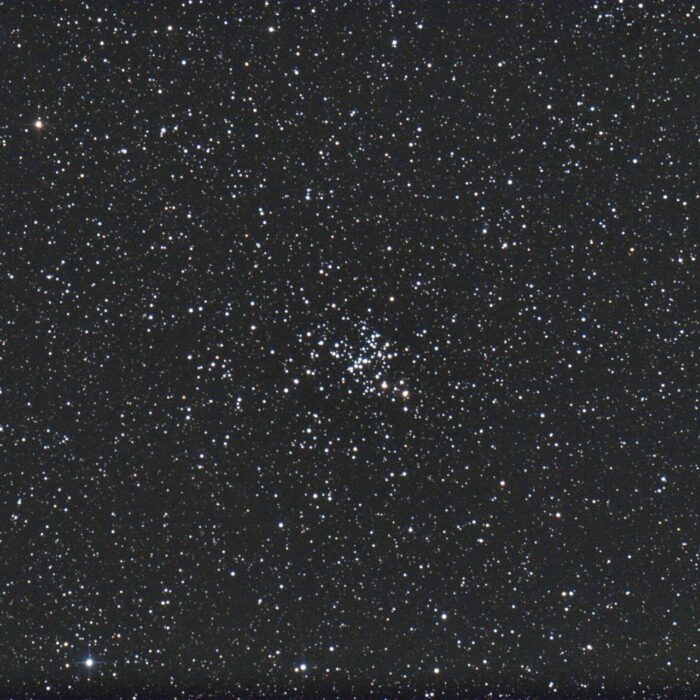
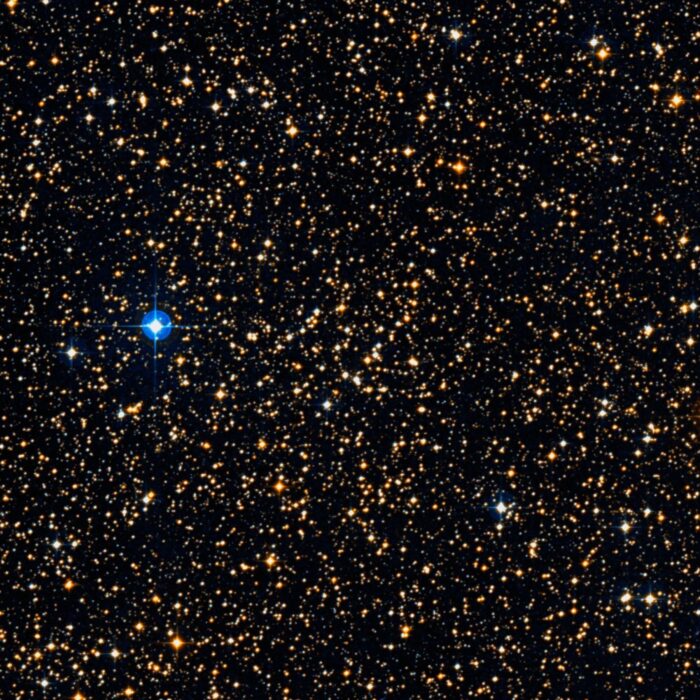
Copyright by WikiSky.org, WikiSky's snapshot tool
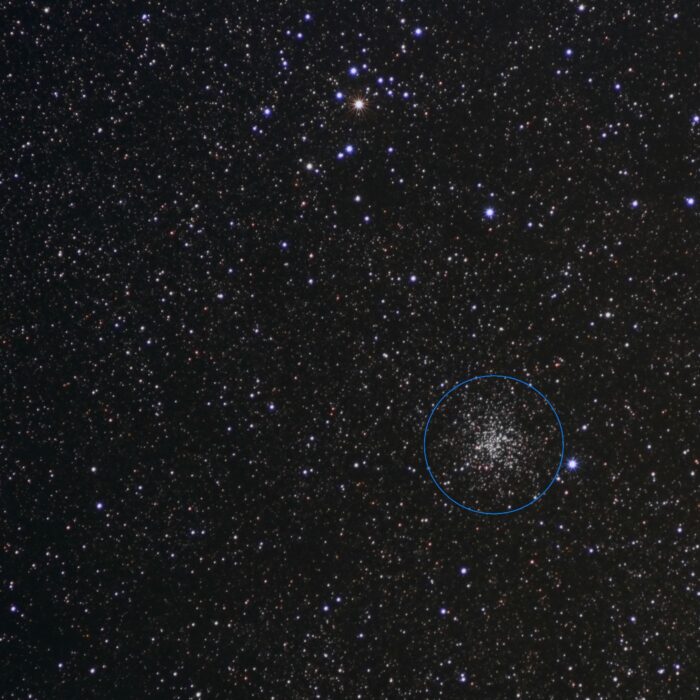
Above is the open cluster NGC 2451 below is the star cluster C71 (NGC 2477).
The bright star to the right of NGC 2477 is HD 64503.
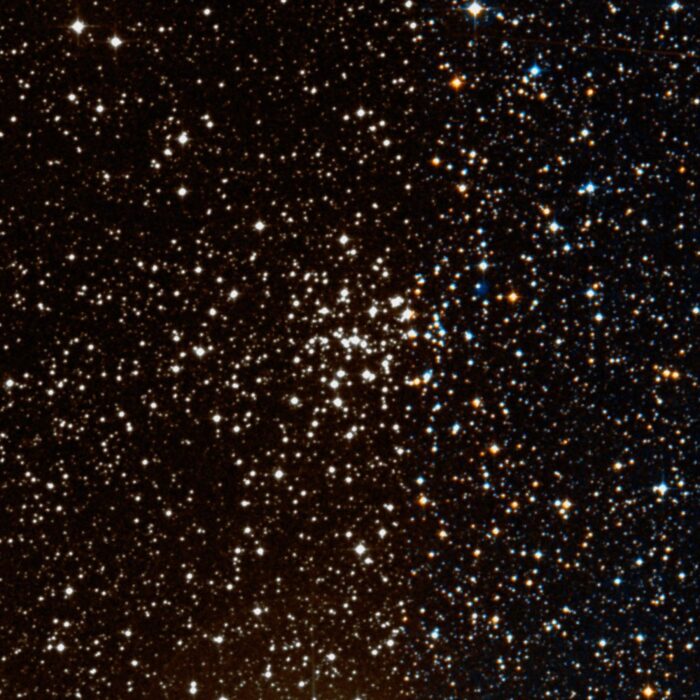
Copyright by WikiSky.org, WikiSky's snapshot tool
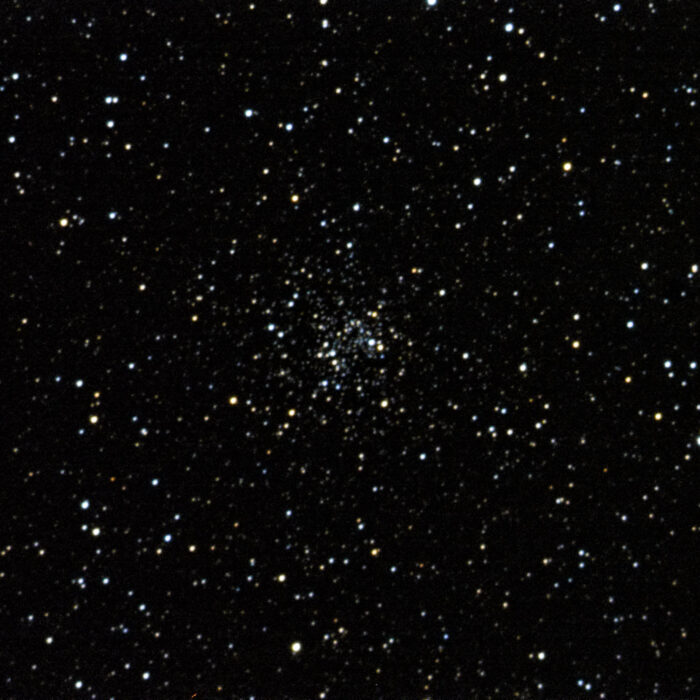
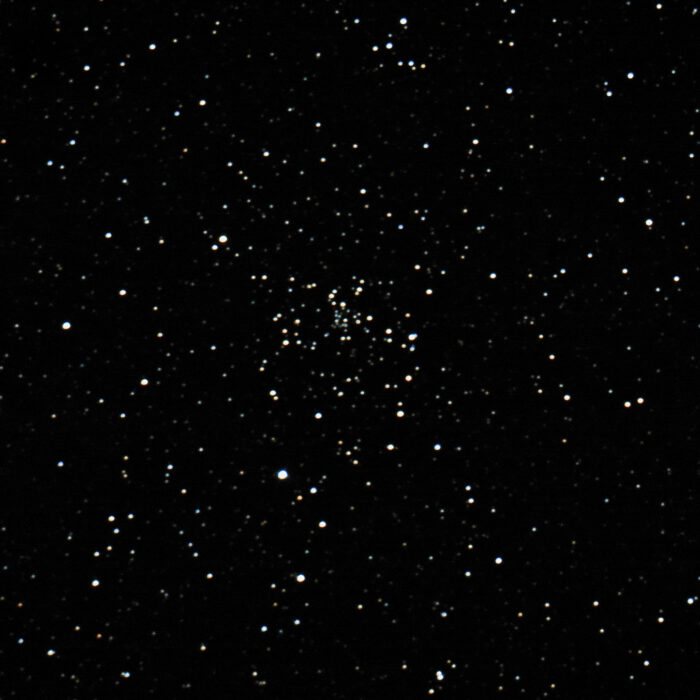
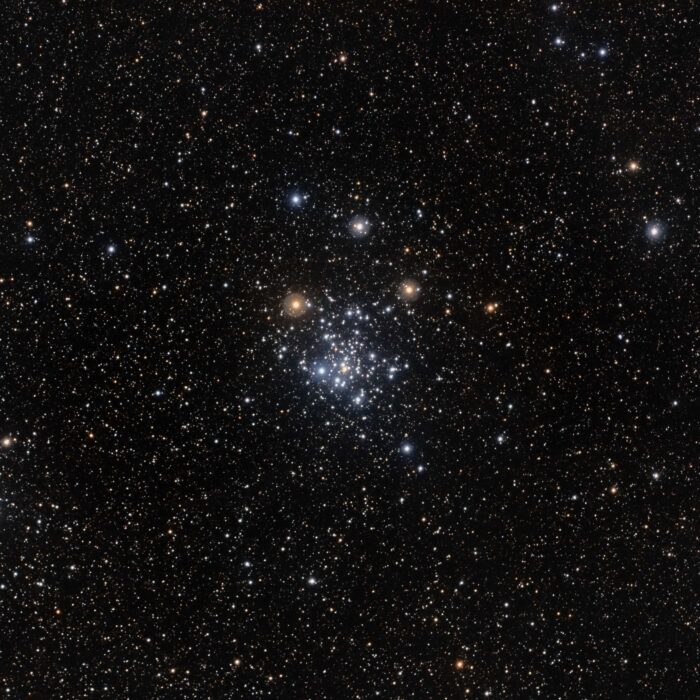
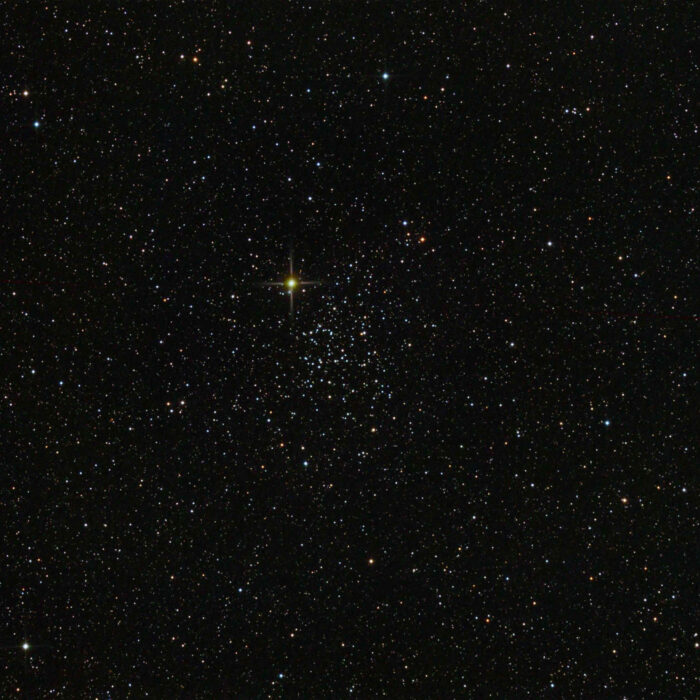
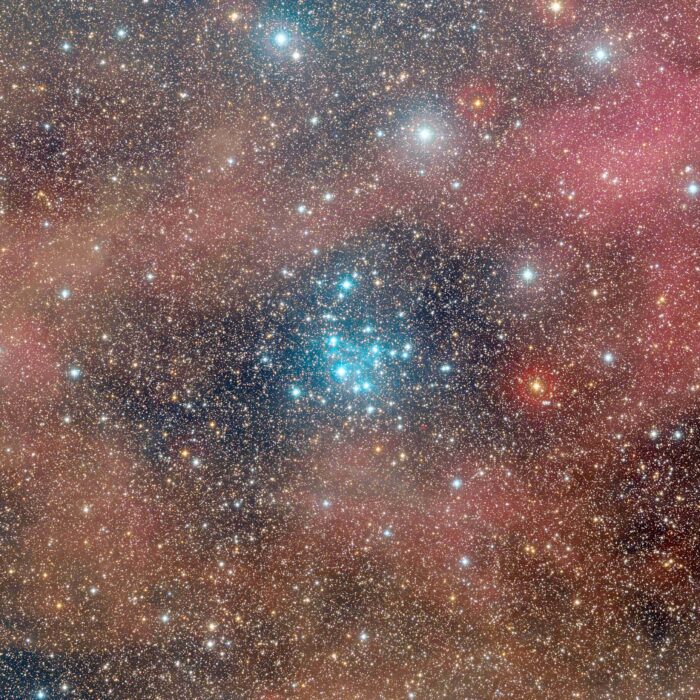
Giuseppe Donatiello from Oria (Brindisi), Italy, CC0, via Wikimedia Commons
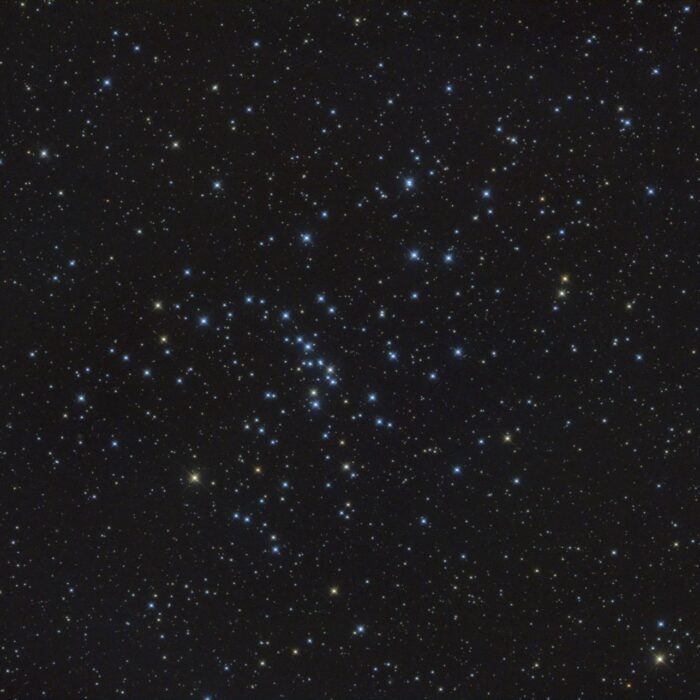
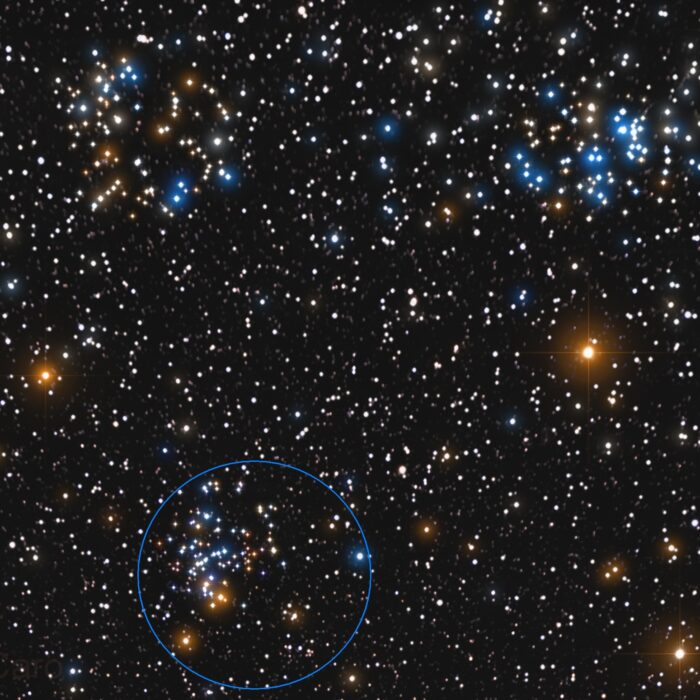
At the bottom edge is NGC 2567.
At the upper right edge is NGC 2571.
To the left of it is NGC 2580.
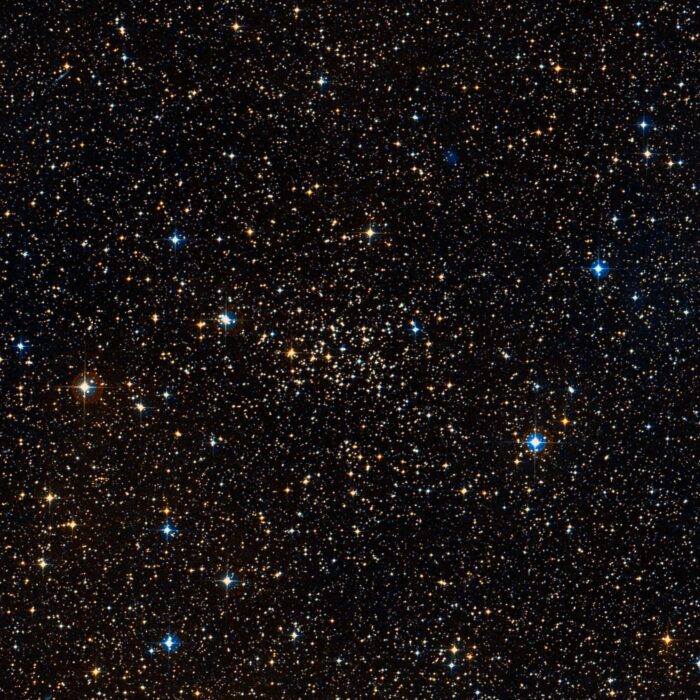
Copyright by WikiSky.org, WikiSky's snapshot tool
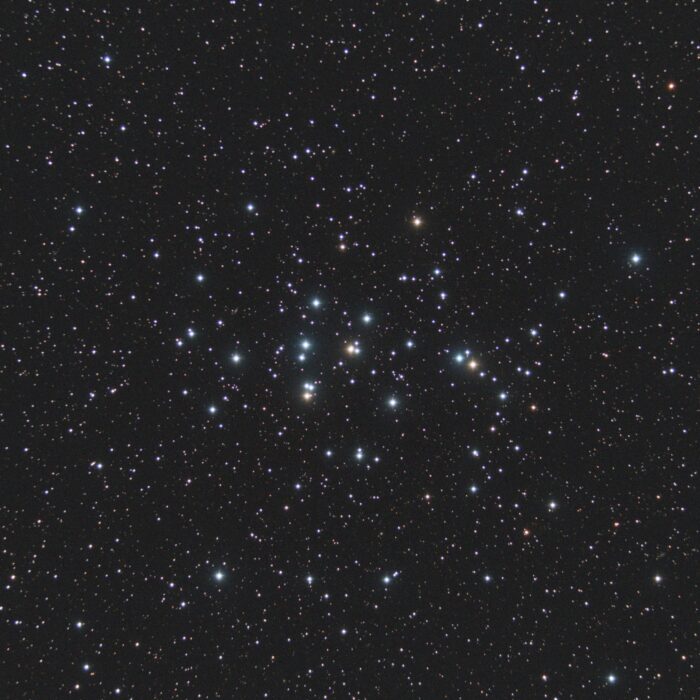
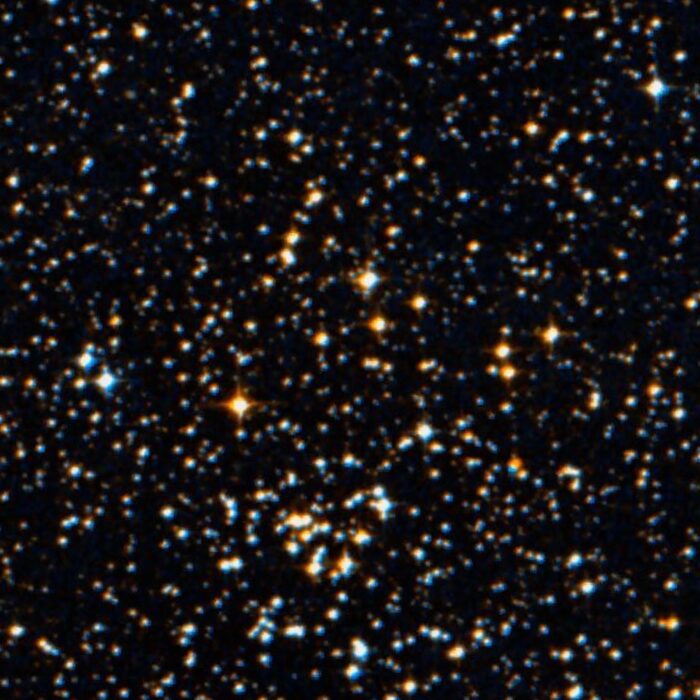
Copyright by WikiSky.org, WikiSky's snapshot tool
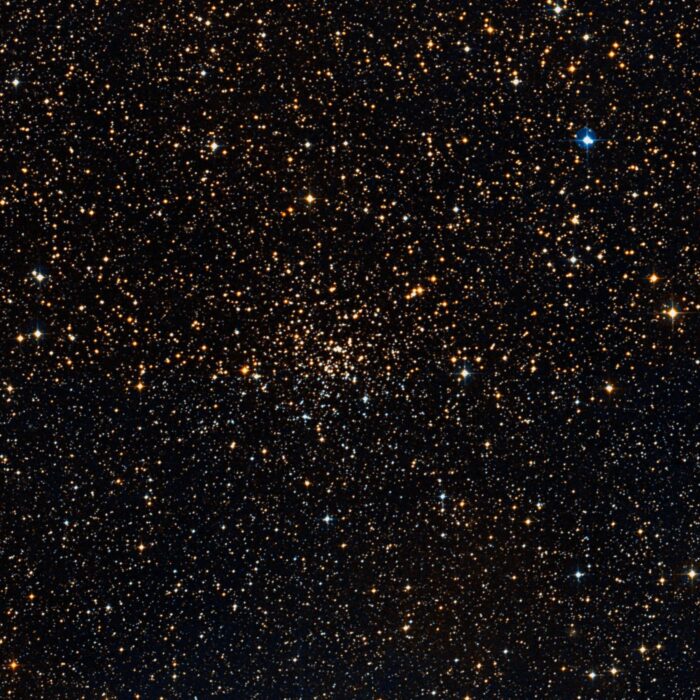
Copyright by WikiSky.org, WikiSky's snapshot tool
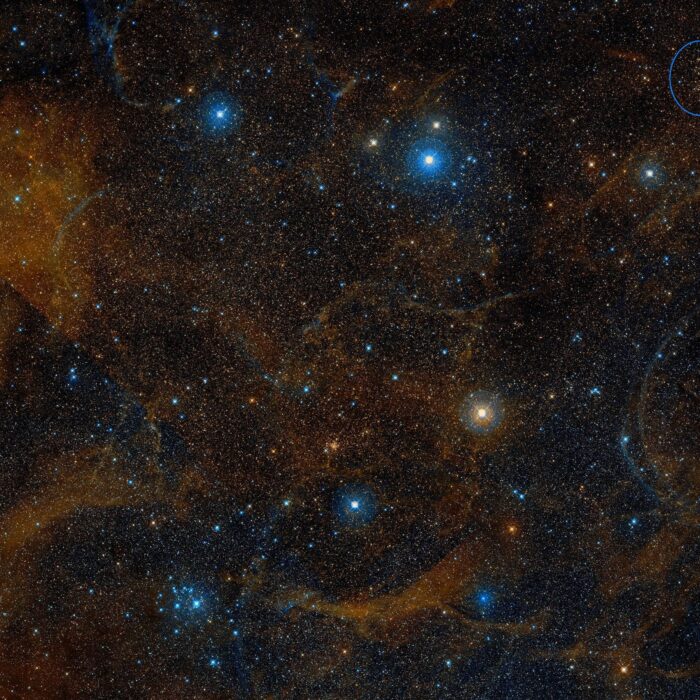
Copyright by WikiSky.org, WikiSky's snapshot tool
The bright star cluster at the bottom of the rim is IC 2395.
To the left is the star cluster NGC 2670.
To the right above IC 2395 the yellow star cluster is NGC 2660.
In the upper right corner is the star cluster NGC 2659.
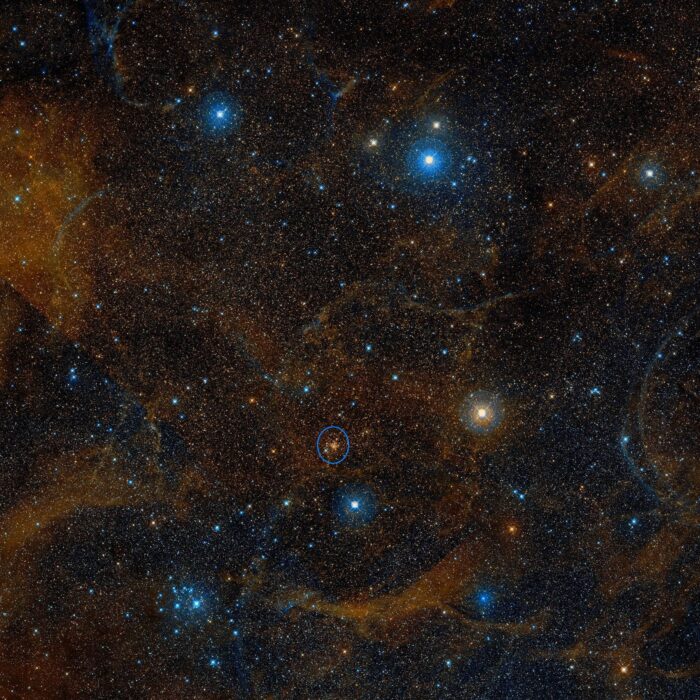
Copyright by WikiSky.org, WikiSky's snapshot tool
The bright star cluster at the bottom of the rim is IC 2395.
To the left of it is the star cluster NGC 2670.
To the right above IC 2395 the yellow star cluster is NGC 2660.
In the upper right corner is the star cluster NGC 2659.
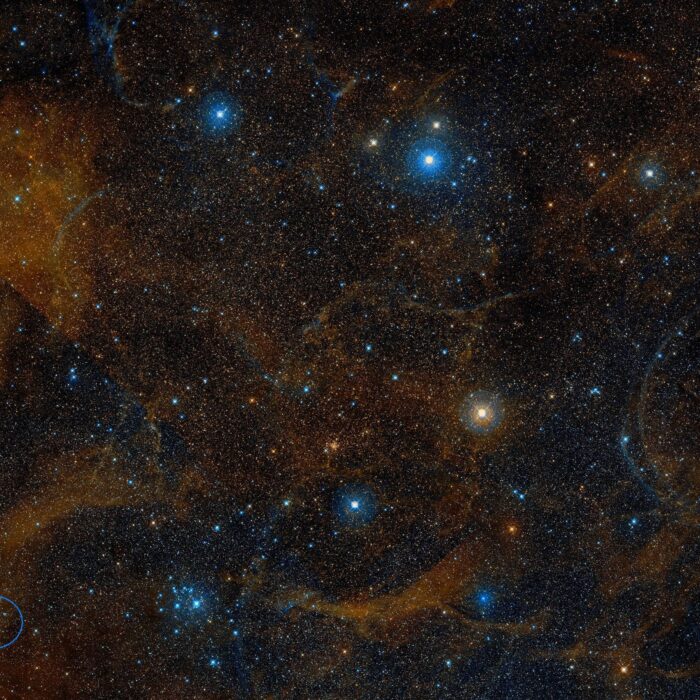
Copyright by WikiSky.org, WikiSky's snapshot tool
The bright star cluster at the bottom of the rim is IC 2395.
To the left of it is the star cluster NGC 2670.
To the right above IC 2395 the yellow star cluster is NGC 2660.
In the upper right corner is Star cluster NGC 2659.
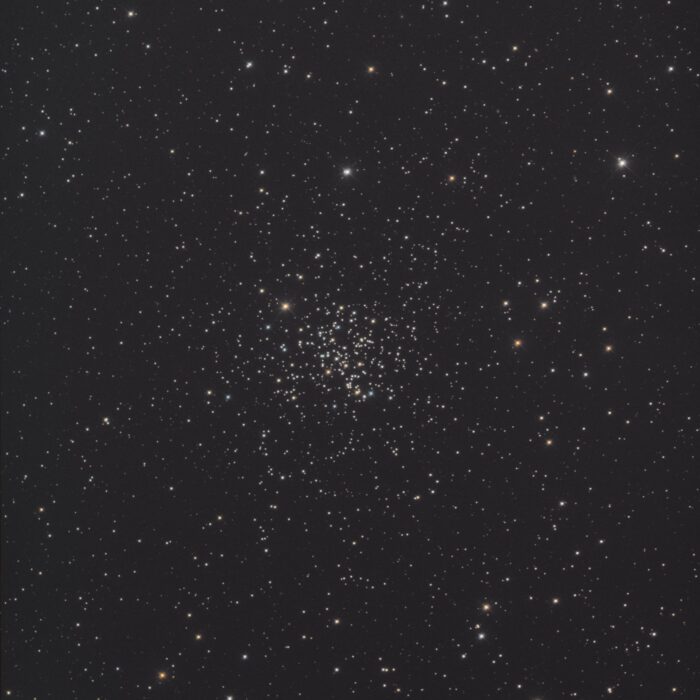
Starhopper, CC BY-SA 4.0, via Wikimedia Commons
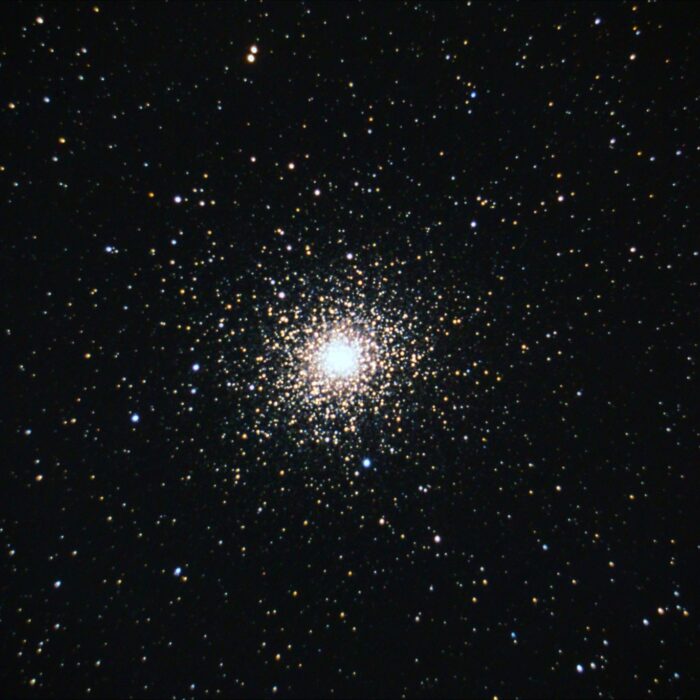
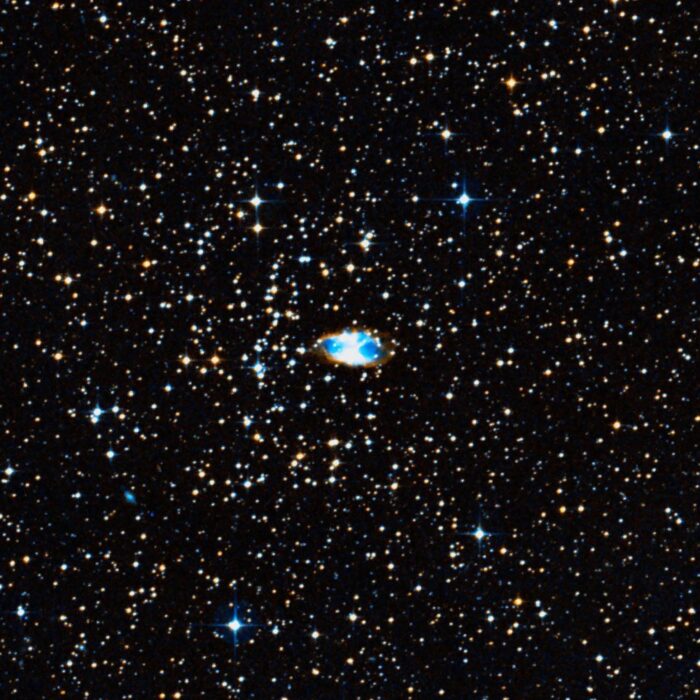
Copyright by WikiSky.org, WikiSky's snapshot tool
In the open cluster NGC 2818A is the planetary nebula NGC 2818.
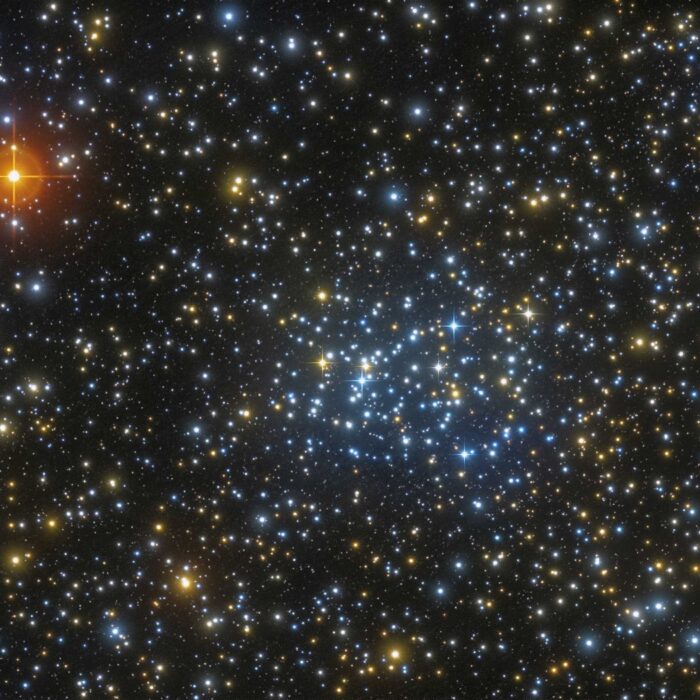
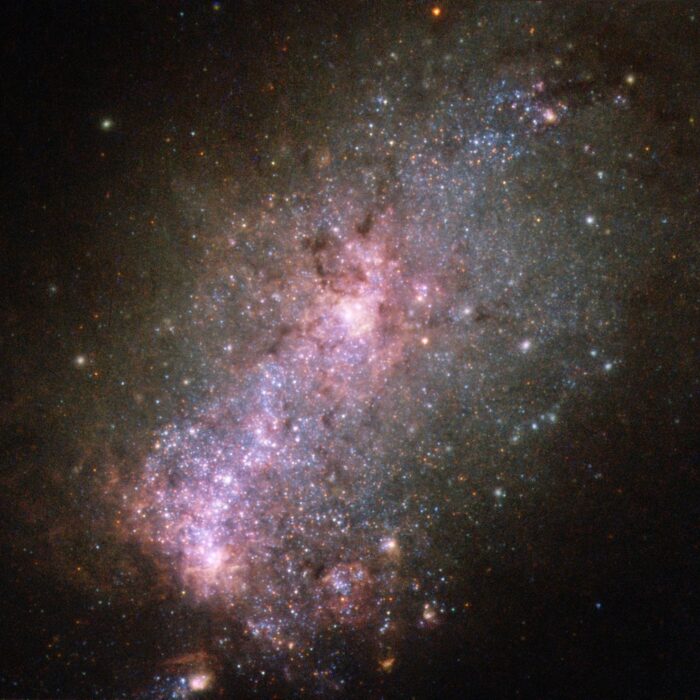
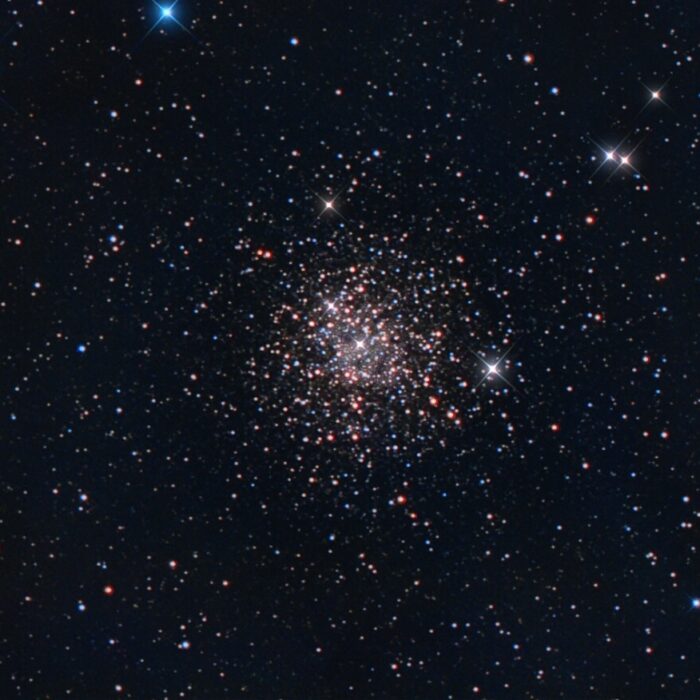
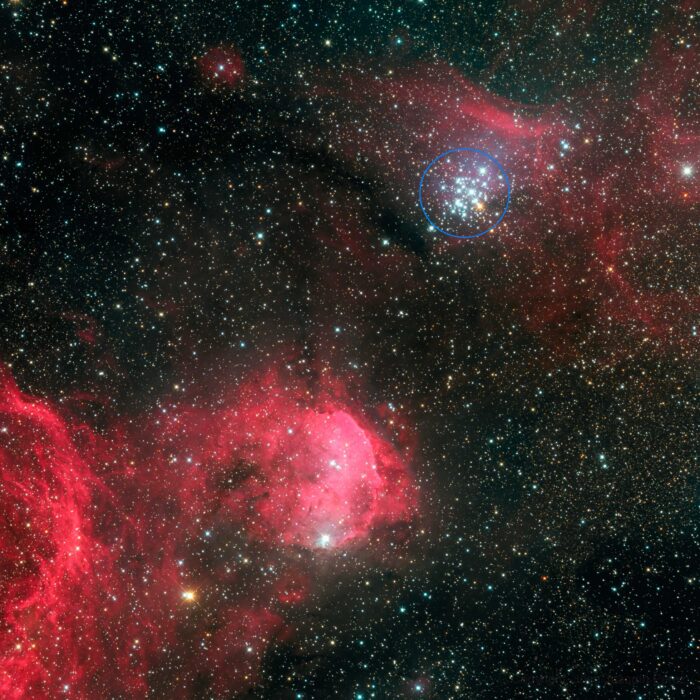
The bright nebula below with embedded Star cluster is NGC 3324 with the southern part IC 2599, collectively called the Gabriela Mistral Nebula.
The Star cluster obliquely above to the right is NGC 3293.
The nebula surrounding the star cluster is RCW 51 (Gum 30).
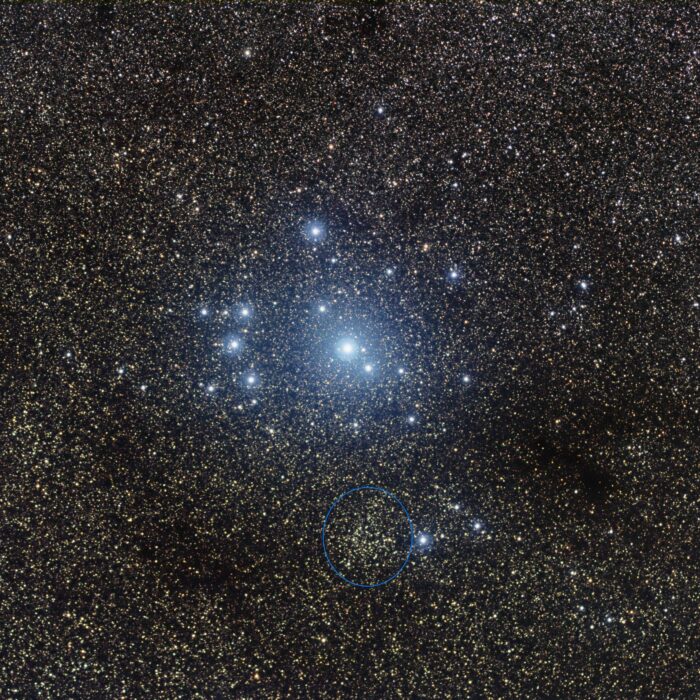
The bright star cluster is IC 2602 (C102).
To the left of the lower bright star is the star cluster Mel 101.

The bright star cluster is IC 2602 (C102).
To the left of the lower bright star is the star cluster Mel 101.
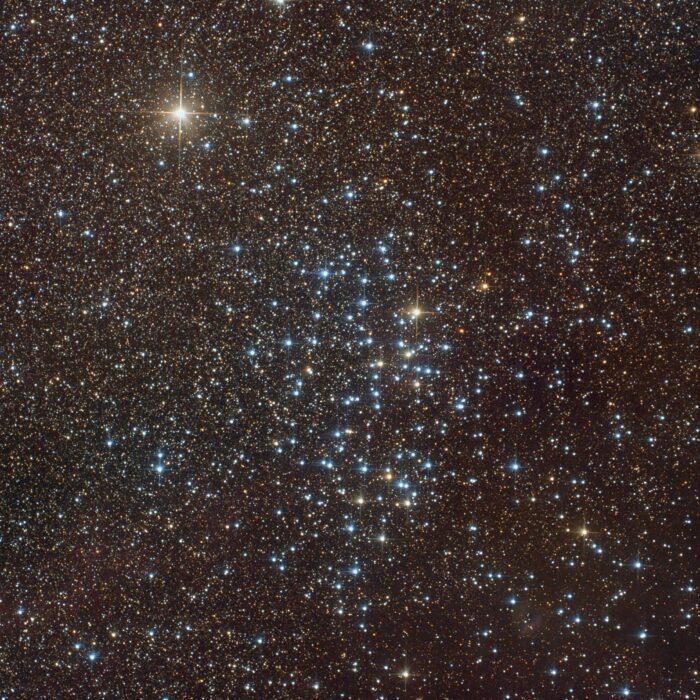
A section of NGC 3532 was the target for first light from the Hubble Space Telescope.
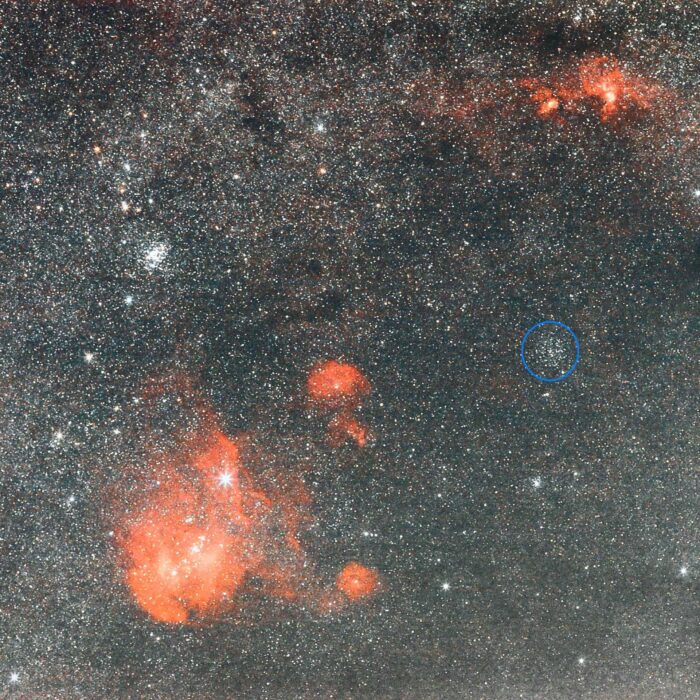
The upper part of the large nebula is IC 2944 (Running Chicken Nebula) with the embedded star cluster.
Diagonally left below is the emission nebula IC 2948.
The very bright star is Lambda Centauri.
Top right of IC 2944 is Gum 39 (Ced 116).
Directly below is IC 2872.
Bottom right is Gum 41 (RCW 61).
In the upper right are the nebulae NGC 3603 and NGC 3576.
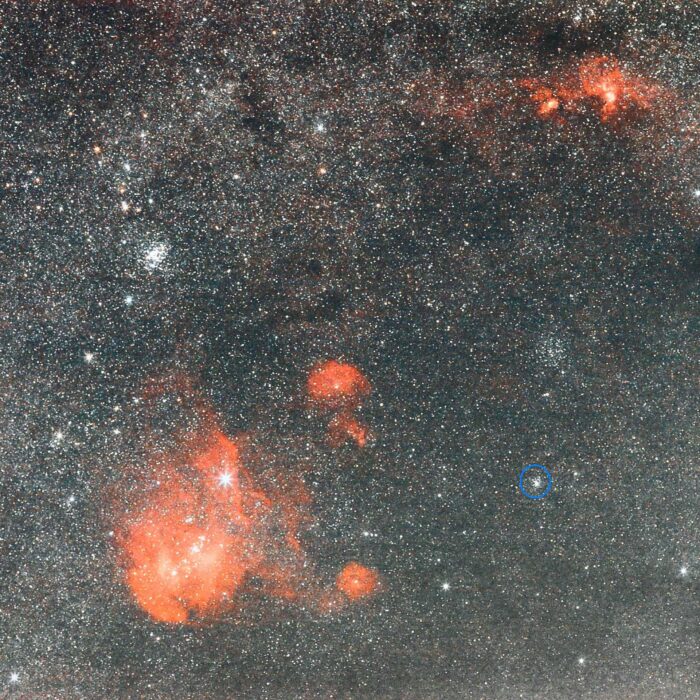
The upper part of the large nebula is IC 2944 (Running Chicken Nebula) with the embedded star cluster .
Diagonally left below is surely emission nebula IC 2948.
The very bright star is Lambda Centauri.
Top right of IC 2944 is Gum 39 (Ced 116).
Directly below is IC 2872.
Bottom right is Gum 41 (RCW 61).
In the upper right are the nebulae NGC 3603 and NGC 3576.
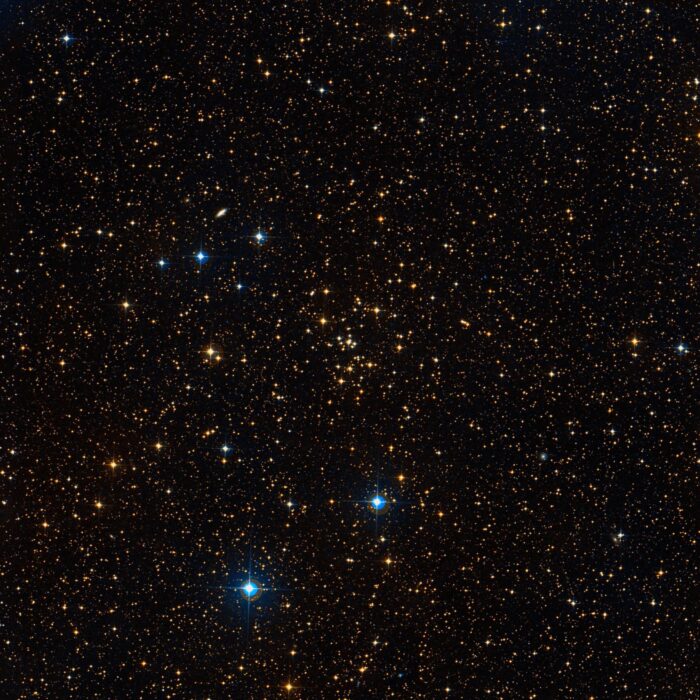
Copyright by WikiSky.org, WikiSky's snapshot tool
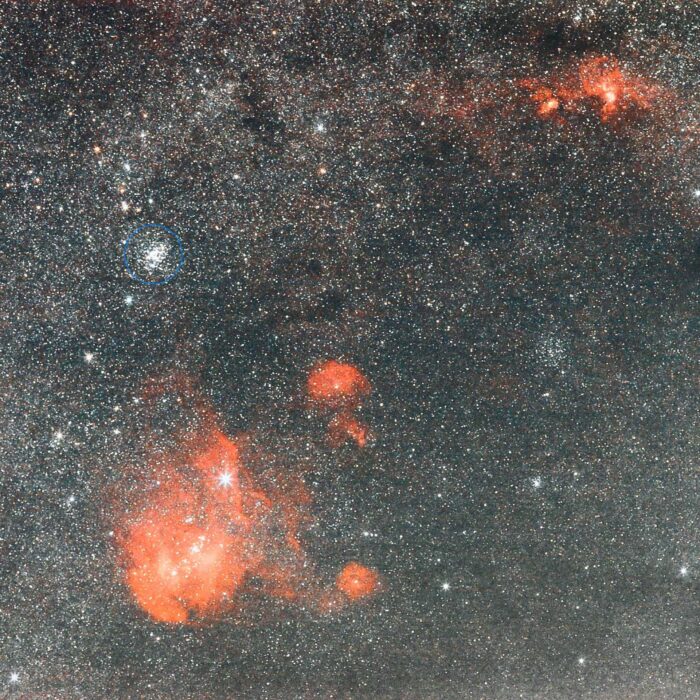
The upper part of the large nebula is IC 2944 (Running Chicken Nebula) with the embedded star cluster.
Diagonally left below is the emission nebula IC 2948.
The very bright star is Lambda Centauri.
Top right of IC 2944 is Gum 39 (Ced 116).
Directly below is IC 2872.
Bottom right is Gum 41 (RCW 61).
In the upper right are the nebulae NGC 3603 and NGC 3576.
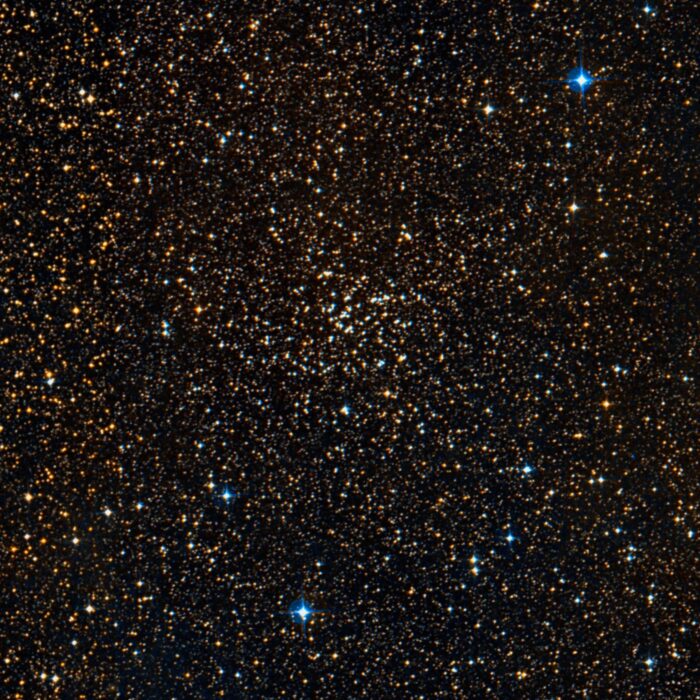
Copyright by WikiSky.org, WikiSky's snapshot tool
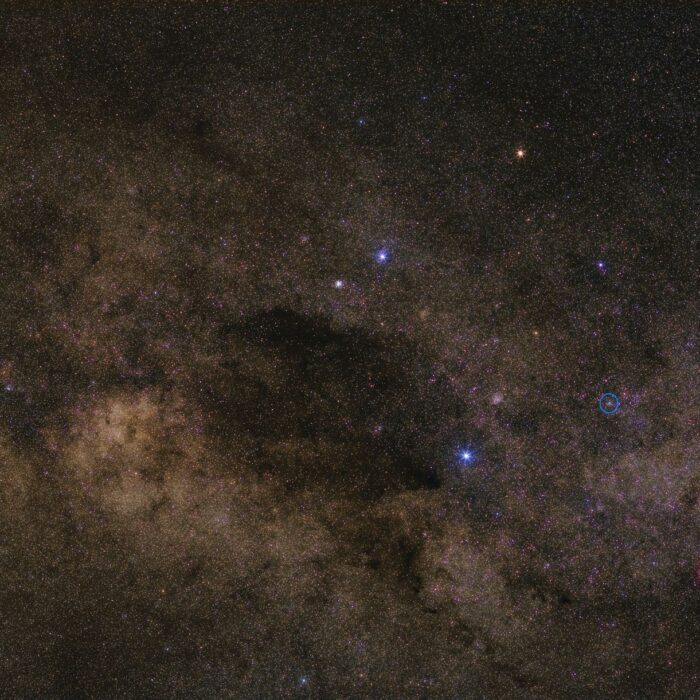
Right at the dark cloud is the Southern Cross.
At the lower right the emission nebulae IC 2948 and IC 2872 are visible and above them the bright point is the star cluster NGC 3766.
Directly left of the left star is the star cluster NGC 4852 and below this the bright point is the star cluster NGC 4755 (C94).
In the middle of the coal sack is the star cluster NGC 4609 (C98).
Above the lowest star is the star cluster NGC 4349.
Between the lowermost star and the emission nebulae is the star cluster NGC 4052 and above it is the star cluster NGC 4103.
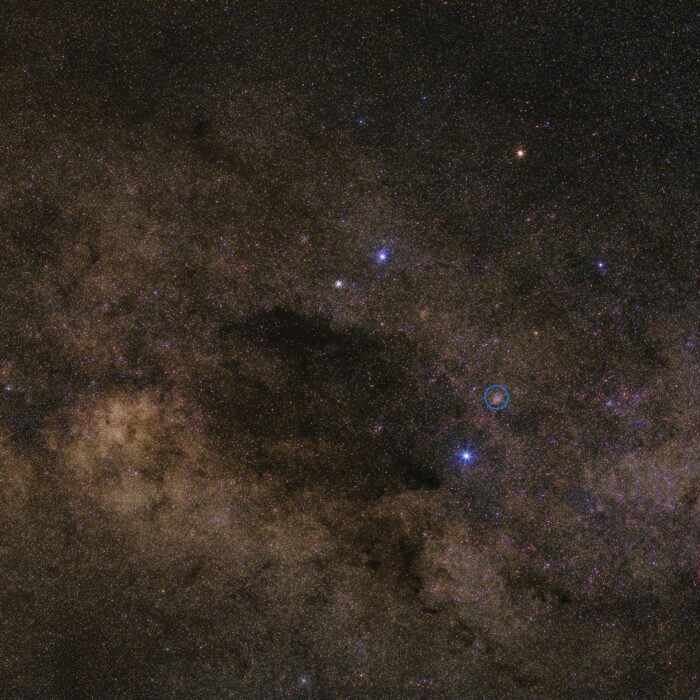
Right at the dark cloud is Crux.
To the lower right are the emission nebulae IC 2948 and IC 2872 and above them the bright spot is the star cluster NGC 3766.
Directly left of the left star is the star cluster NGC 4852 and below this the bright point is the star cluster NGC 4755 (C94).
In the middle of the coal sack is the star cluster NGC 4609 (C98).
Above the lowest star is the star cluster NGC 4349.
Between the lowest star and the emission nebulae is the star cluster NGC 4052 and above it is the star cluster NGC 4103.
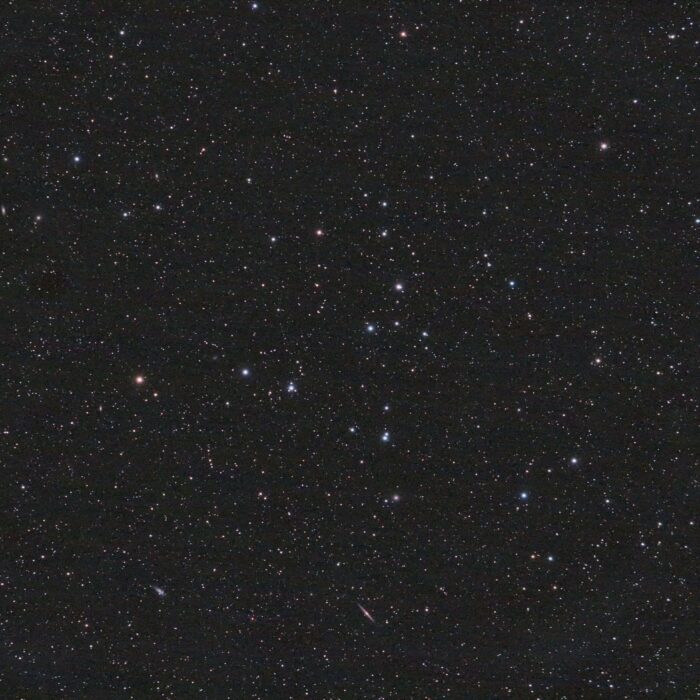
Below the large star cluster you can see the galaxy NGC 4565.
Diagonally to the left below the star cluster NGC 4559 can be seen.
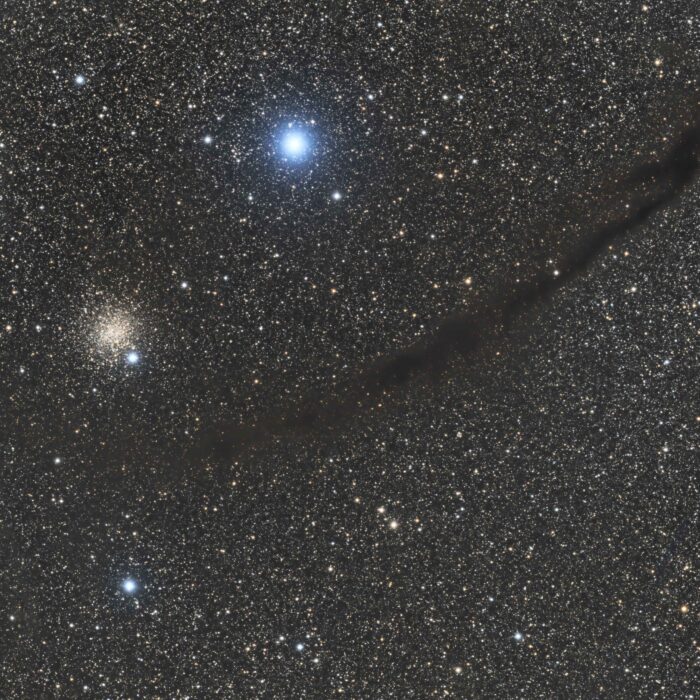
The bright star is Gamma Muscae.
The dark cloud is the Dark Doodad Nebula.
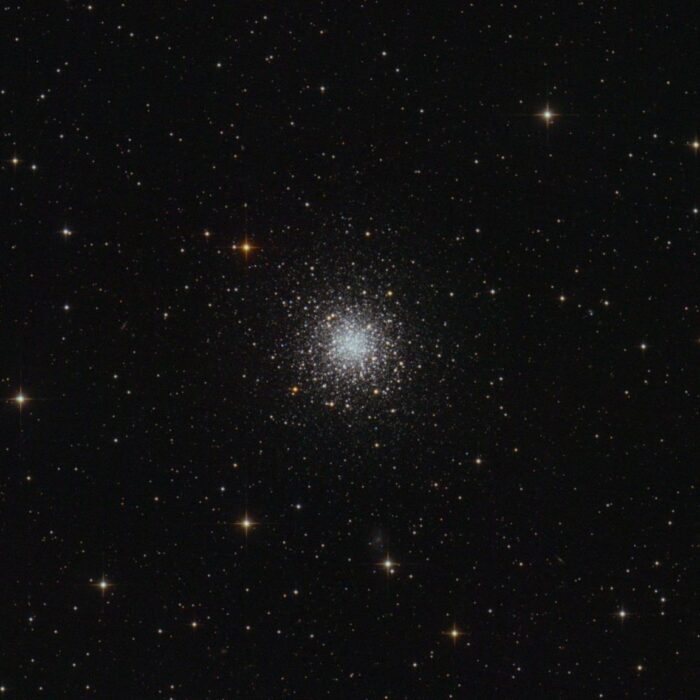
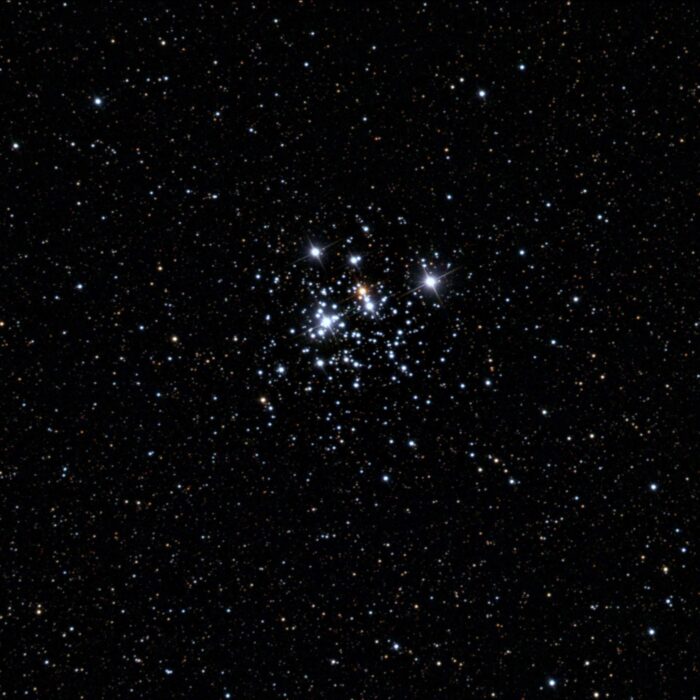
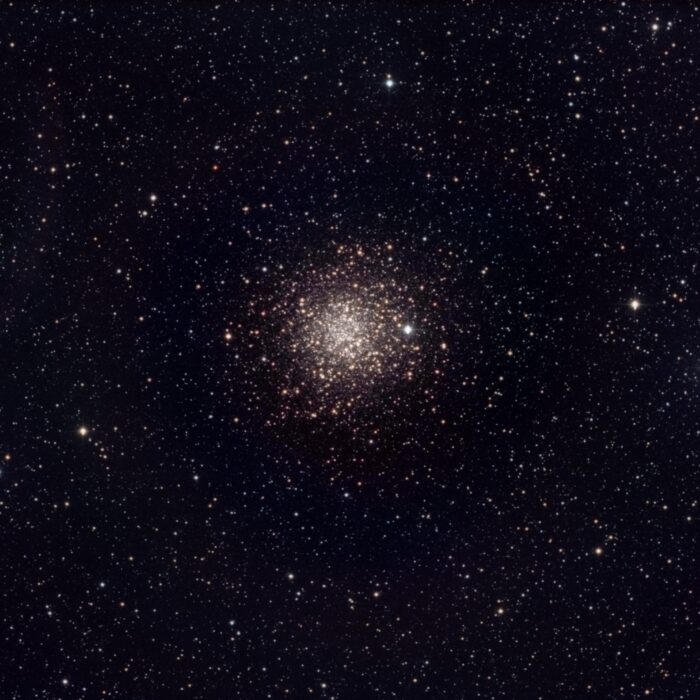
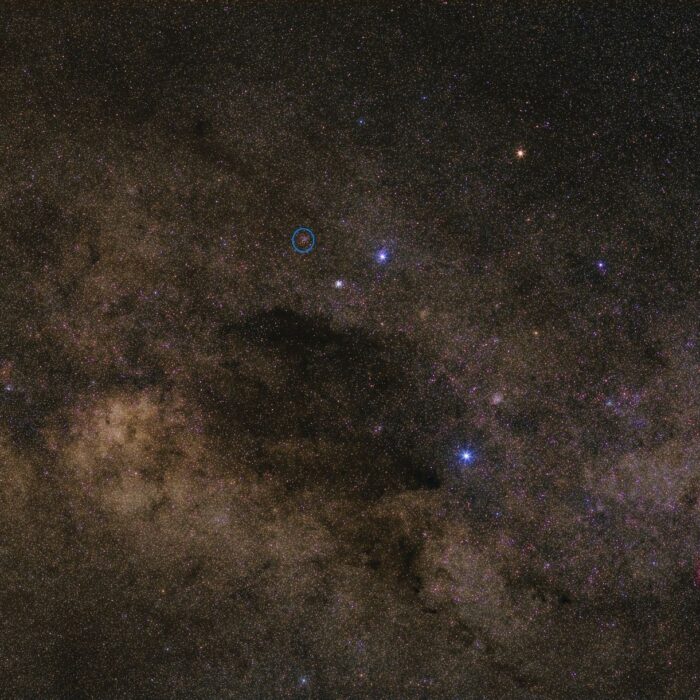
Right at the dark cloud is Crux.
At the lower right the emission nebulae IC 2948 and IC 2872 are visible and above them the bright point is the star cluster NGC 3766.
Directly left of the left star is the star cluster NGC 4852 and below this the bright point is the star cluster NGC 4755 (C94).
In the middle of the coal sack is the star cluster NGC 4609 (C98).
Above the lowest star is the star cluster NGC 4349.
Between the lowest star and the emission nebulae is the star cluster NGC 4052 and above it is the star cluster NGC 4103.
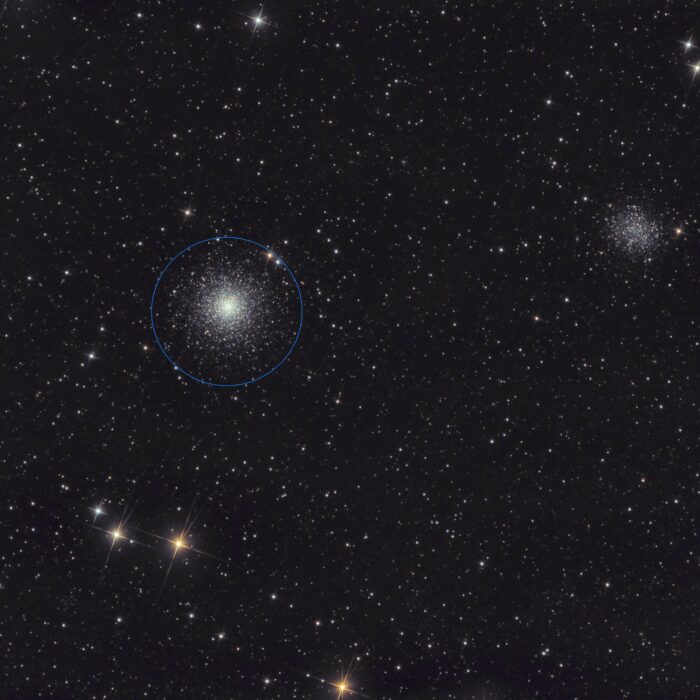
On the right of the star cluster is NGC 5053.
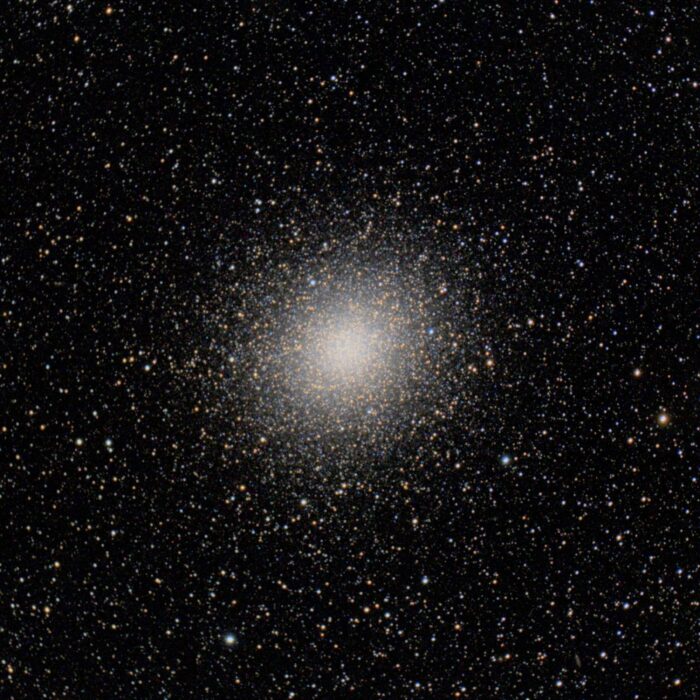
Jose Mtanous, CC BY-SA 3.0, via Wikimedia Commons
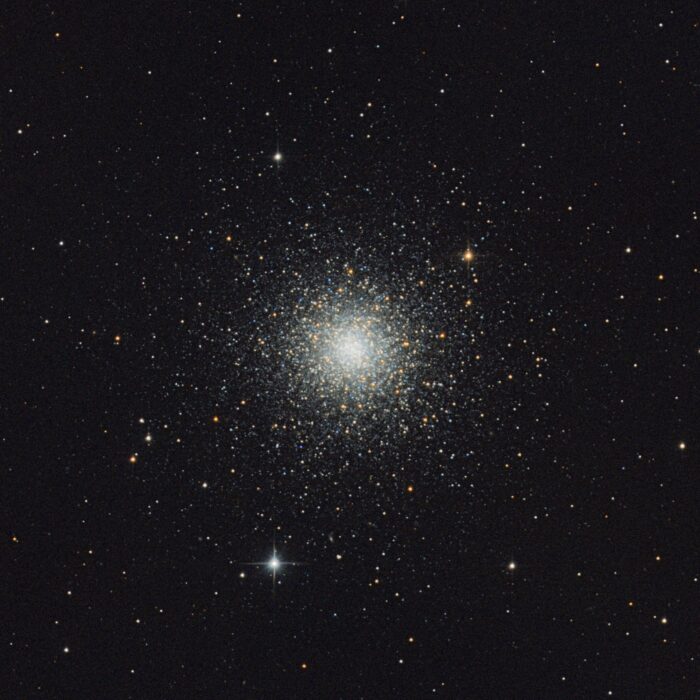
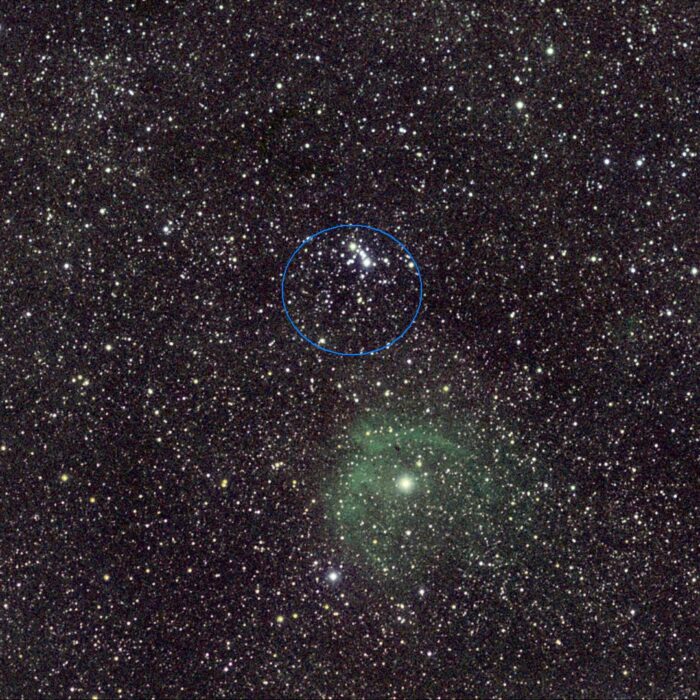
In the center is NGC 5281.
To the left of it is NGC 5269.
The nebula at the bottom is Gum 48d.
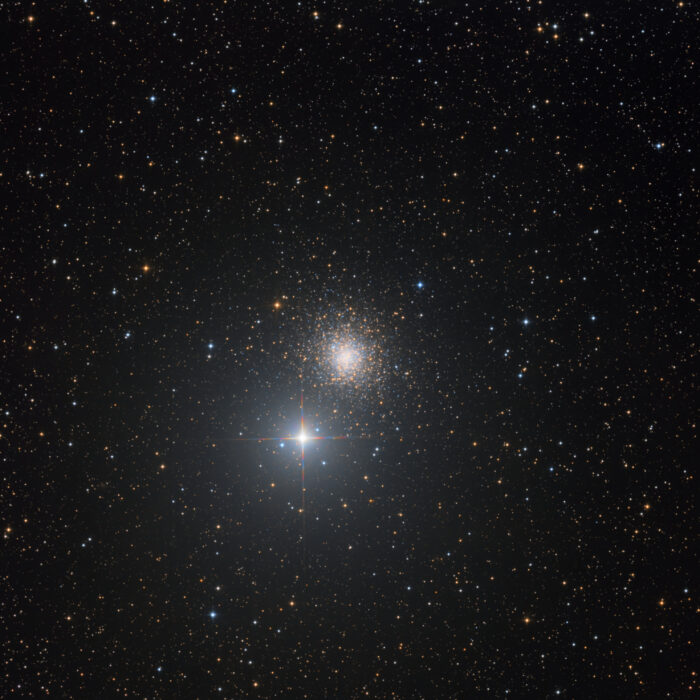
The bright star next to it is HD 119834.
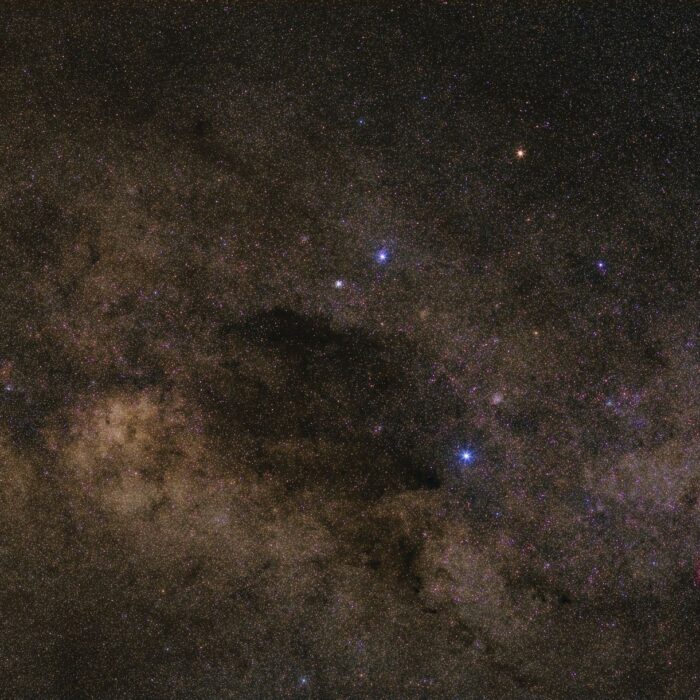
Right at the dark cloud is Crux.
At the lower right the emission nebulae IC 2948 and IC 2872 can be seen and above them the bright point is the Star cluster NGC 3766.
Directly left of the left star is the star cluster NGC 4852 and below this the bright point is the star cluster NGC 4755 (C94).
In the middle of the coal sack is the star cluster NGC 4609 (C98).
Above the lowest star is the star cluster NGC 4349.
Between the lowest star and the emission nebulae is the star cluster NGC 4052 and above it is the star cluster NGC 4103.
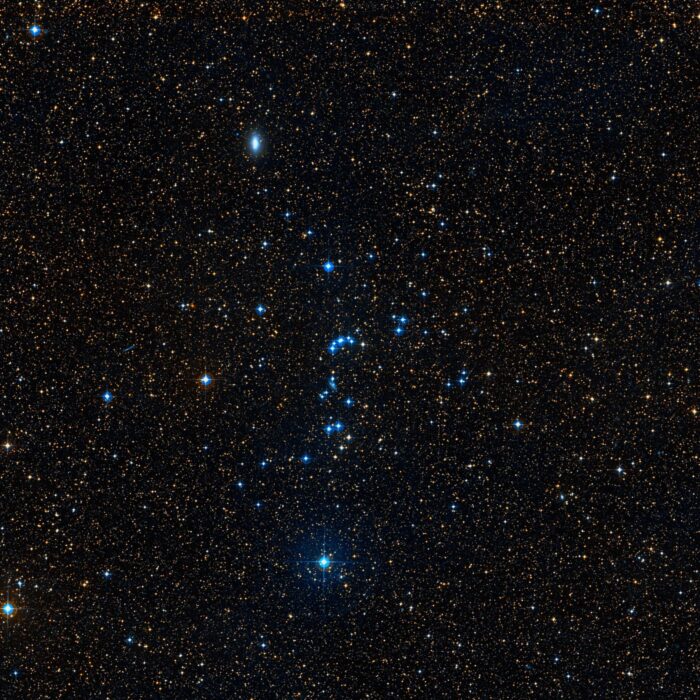
Copyright by WikiSky.org, WikiSky's snapshot tool
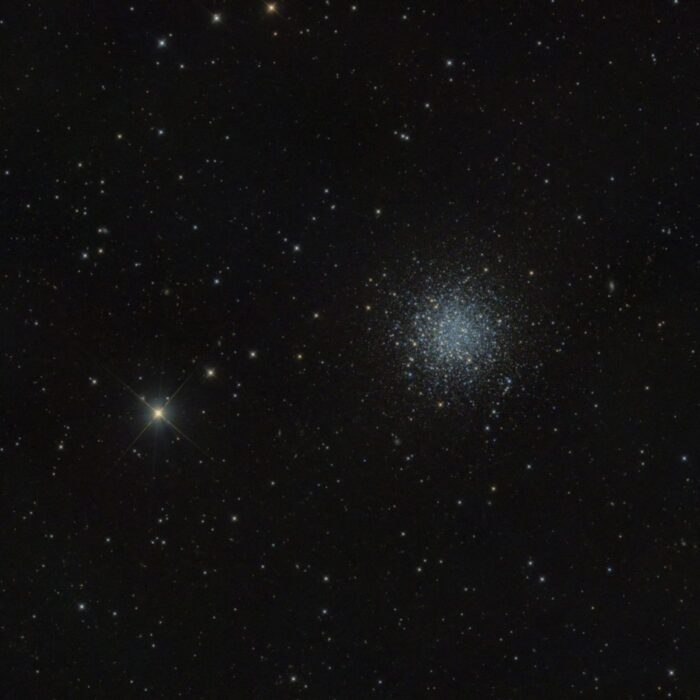
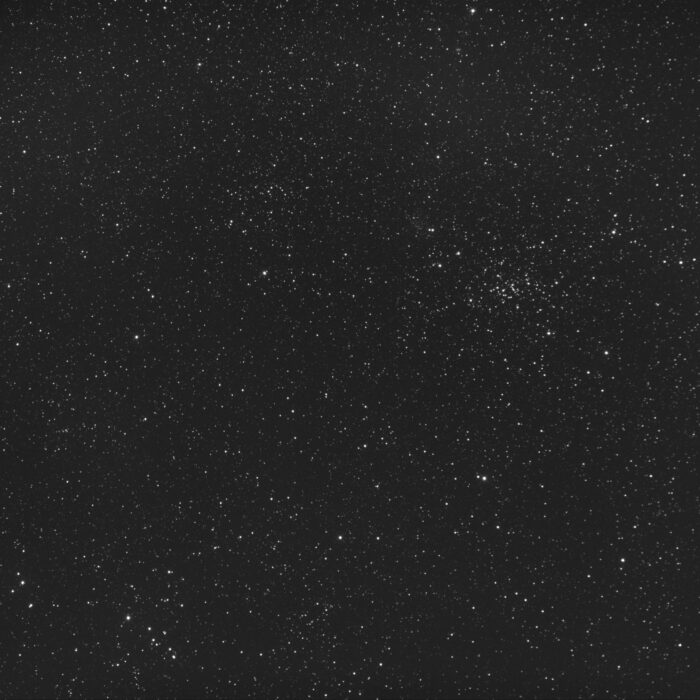
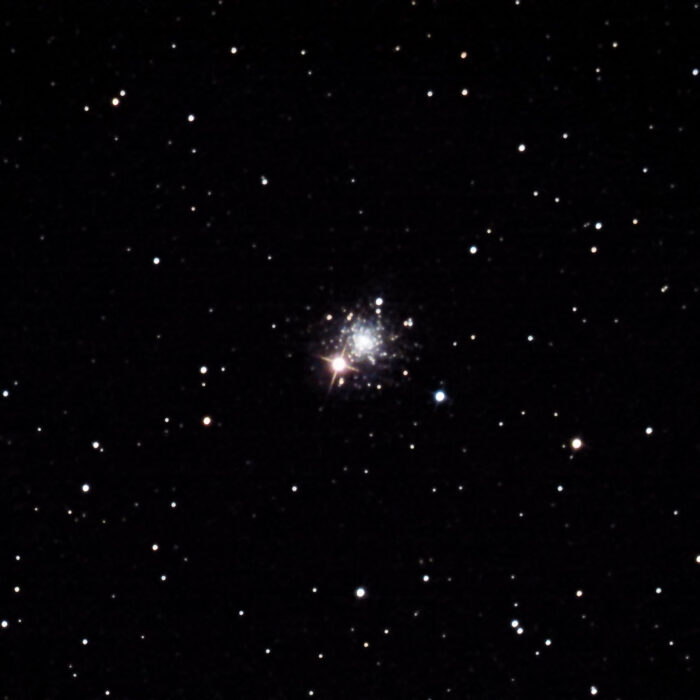
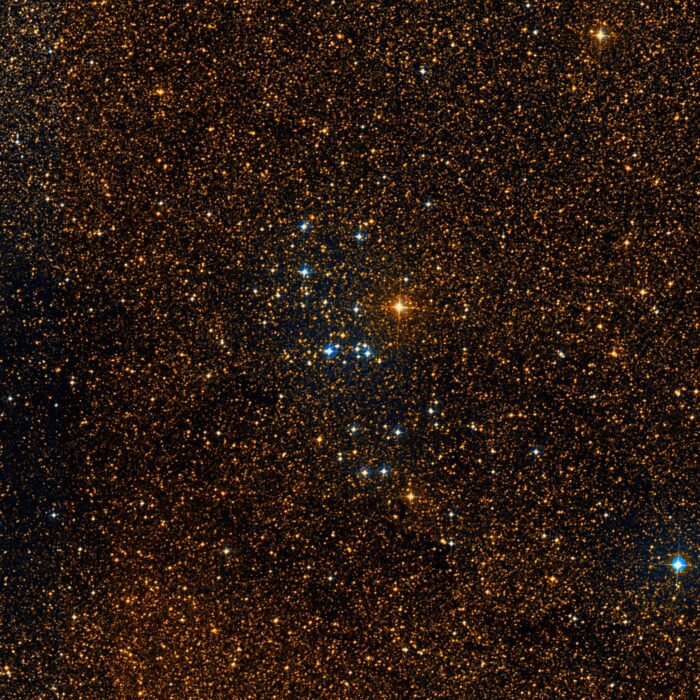
Copyright by WikiSky.org, WikiSky's snapshot tool
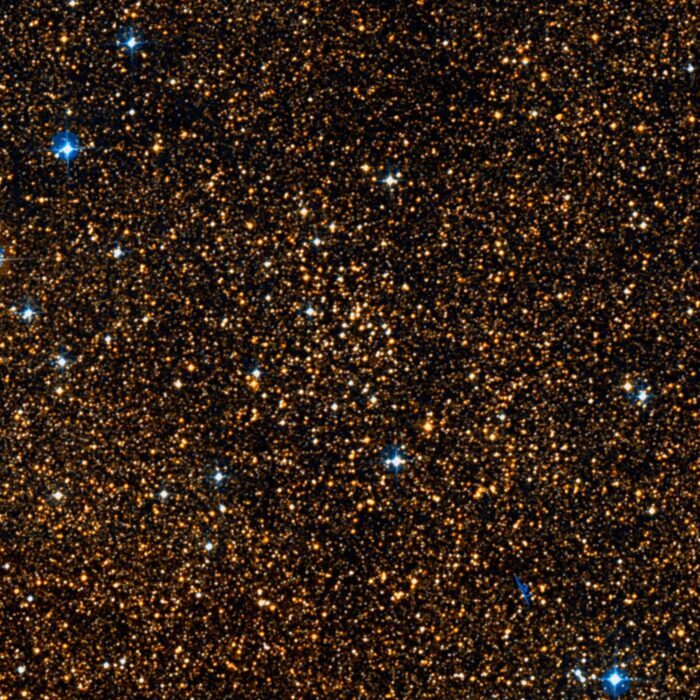
Copyright by WikiSky.org, WikiSky's snapshot tool
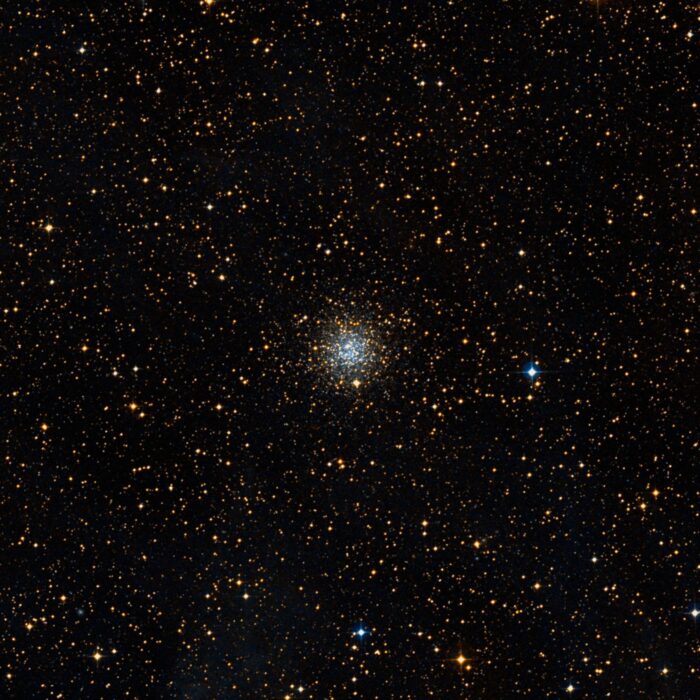
Copyright by WikiSky.org, WikiSky's snapshot tool
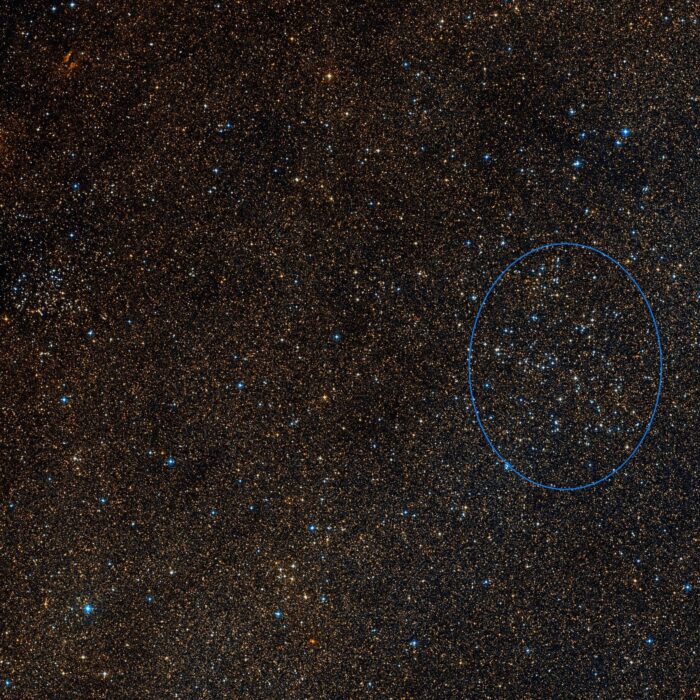
Copyright by WikiSky.org, WikiSky's snapshot tool
The large star cluster on the right is NGC 5822.
To the left is the star cluster NGC 5823.
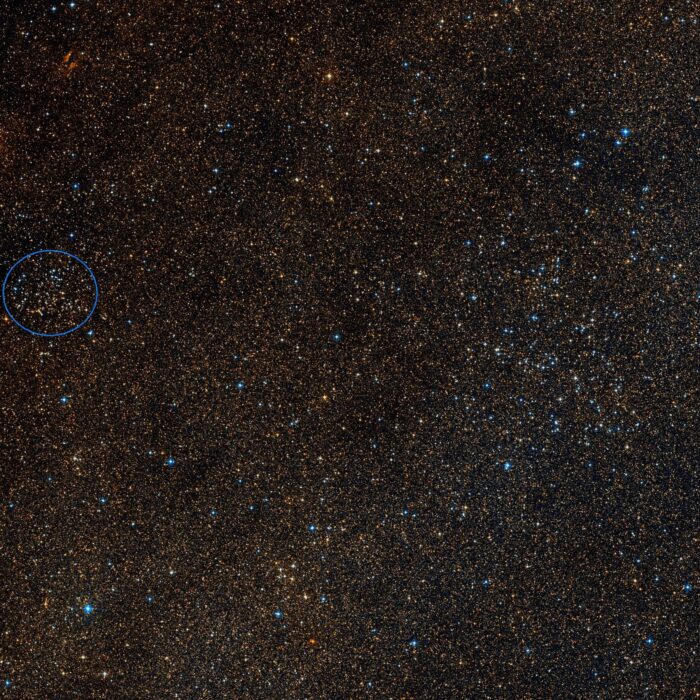
Copyright by WikiSky.org, WikiSky's snapshot tool
The large star cluster on the right is NGC 5822.
On the left is the star cluster NGC 5823.
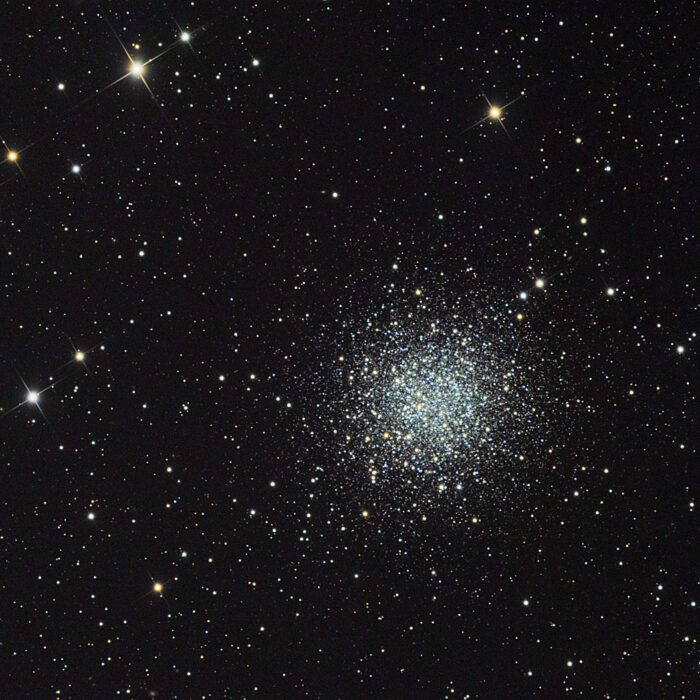
San Esteban, CC BY-SA 3.0, via Wikimedia Commons
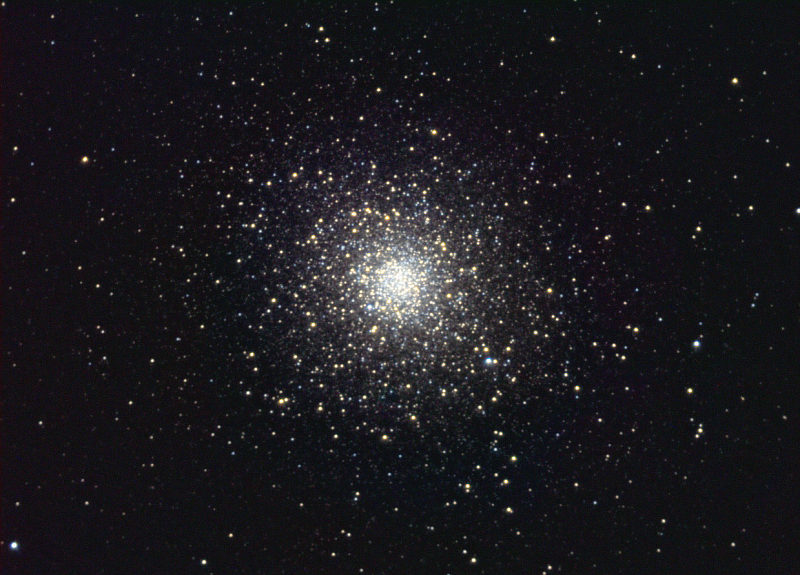
Ole Nielsen, CC BY-SA 2.5, via Wikimedia Commons
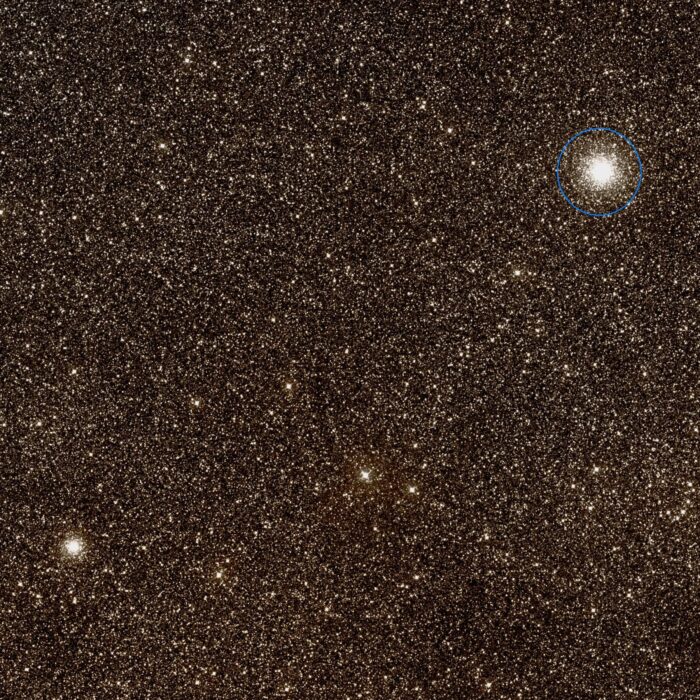
Copyright by WikiSky.org, WikiSky's snapshot tool
In the upper right is NGC 5927.
Bottom left is NGC 5946.

Copyright by WikiSky.org, WikiSky's snapshot tool
In the upper right is NGC 5927.
Bottom left is NGC 5946.
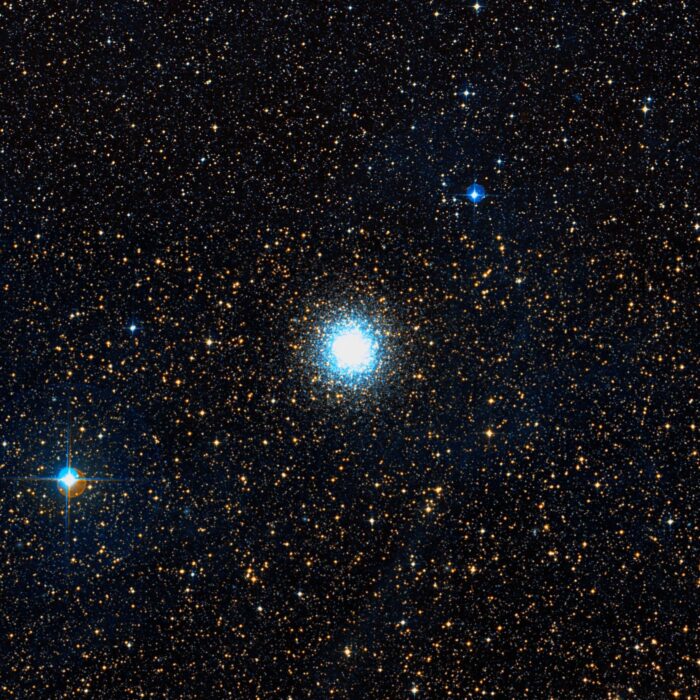
Copyright by WikiSky.org, WikiSky's snapshot tool
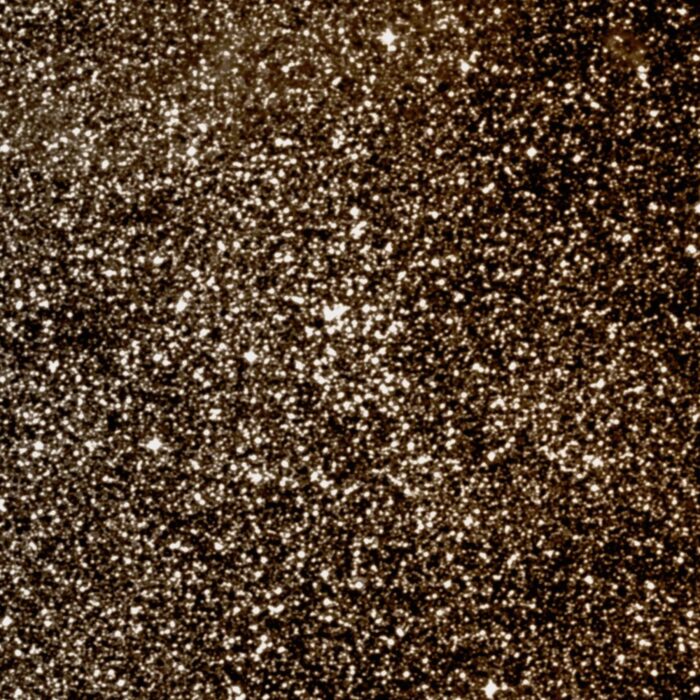
Copyright by WikiSky.org, WikiSky's snapshot tool
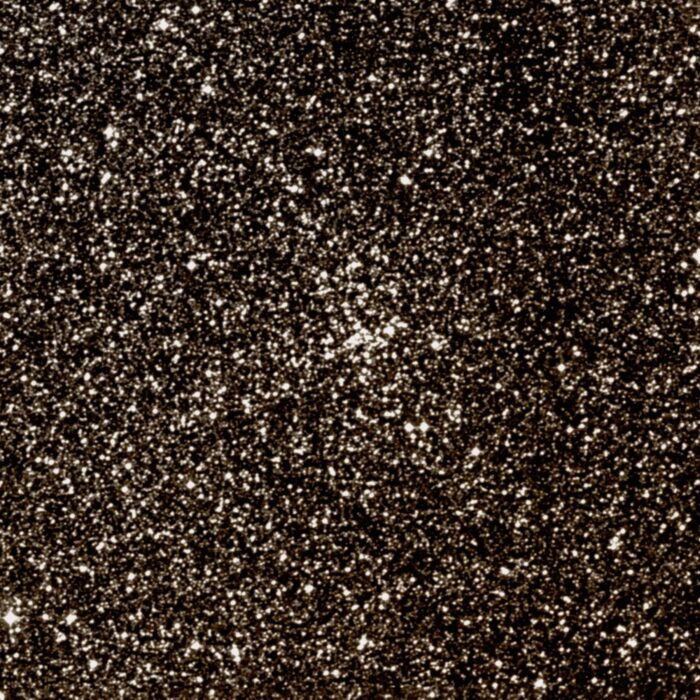
Copyright by WikiSky.org, WikiSky's snapshot tool
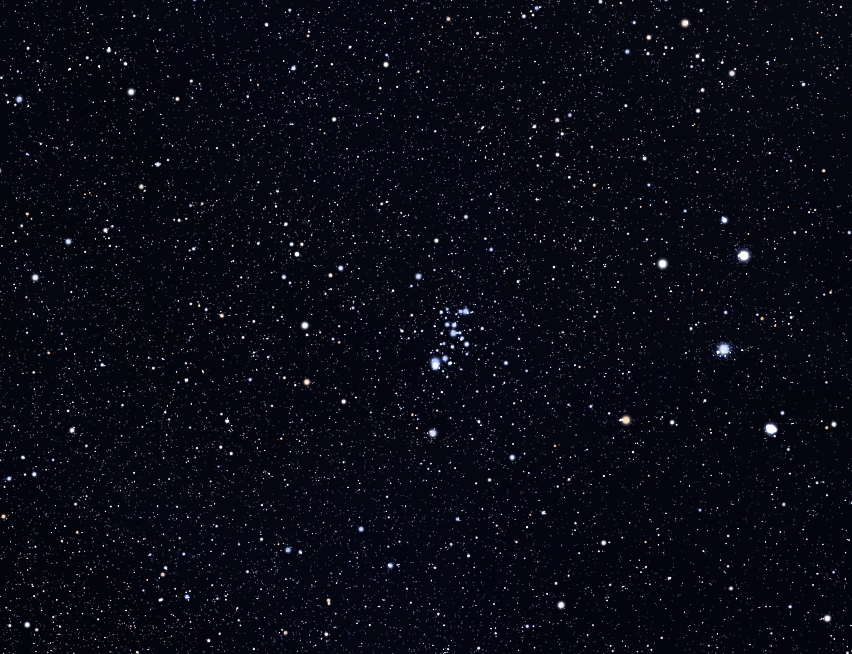
Roberto Mura, CC BY-SA 4.0, via Wikimedia Commons
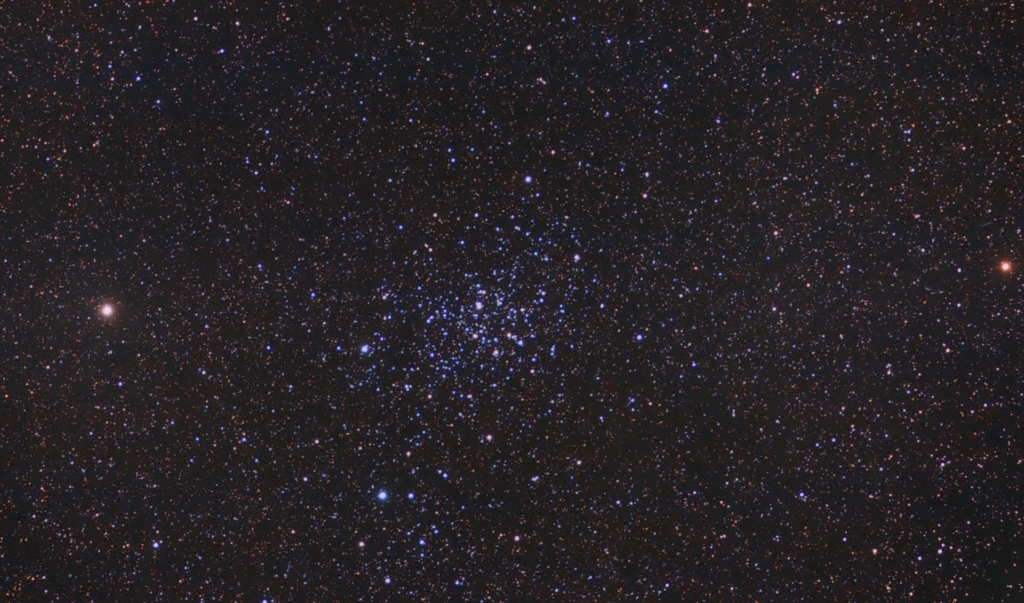
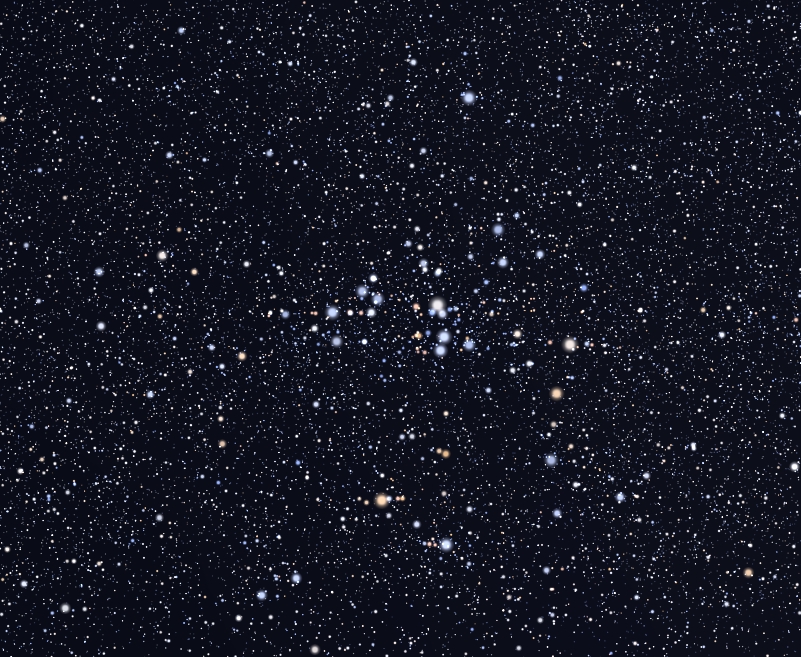
Roberto Mura, CC BY-SA 3.0, via Wikimedia Commons
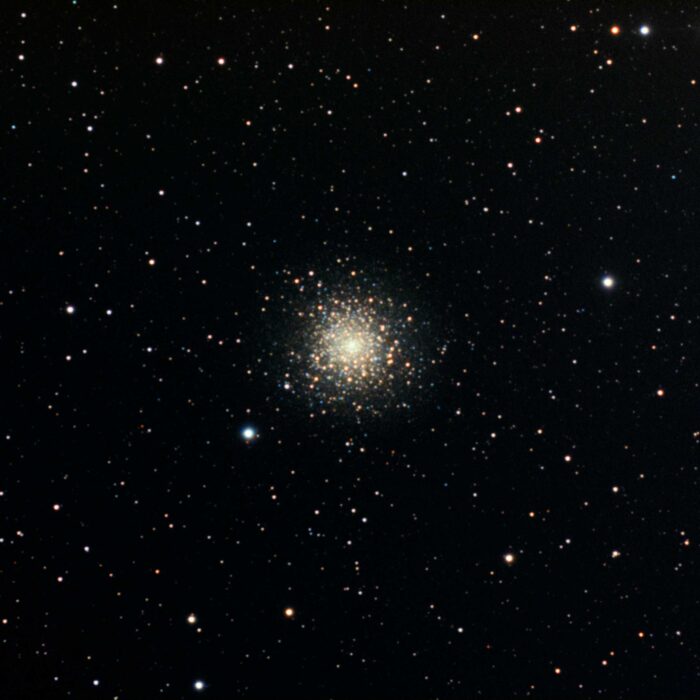
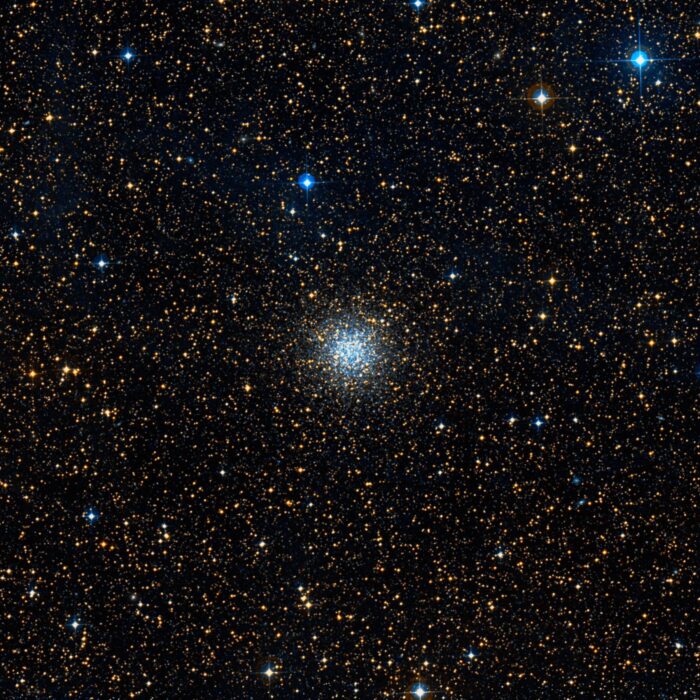
Copyright by WikiSky.org, WikiSky's snapshot tool
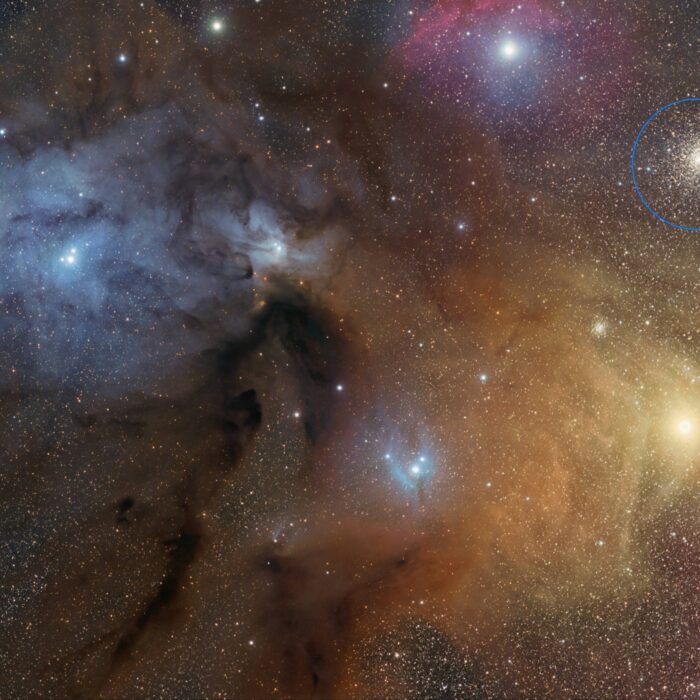
Giuseppe Donatiello, CC0, via Wikimedia Commons
The red nebula at the top is Sh2-9 with the star Sigma Scorpii (Alniyat) in the center and the reflection nebula vdB 104.
The yellow star on the lower right is Alpha Scorpii (Antares) with the nebula vdB 107.
The large star cluster at upper right is M4 and just below it is the small star cluster NGC 6144.
The blue nebula at the bottom is IC 4605.
The large blue nebula on the left is IC 4604 (with the embedded star Rho Ophiuchi).
The dark nebula starting in the center and running to the lower left is LDN 1688, the dark nebula in the lower center is LDN 1689.
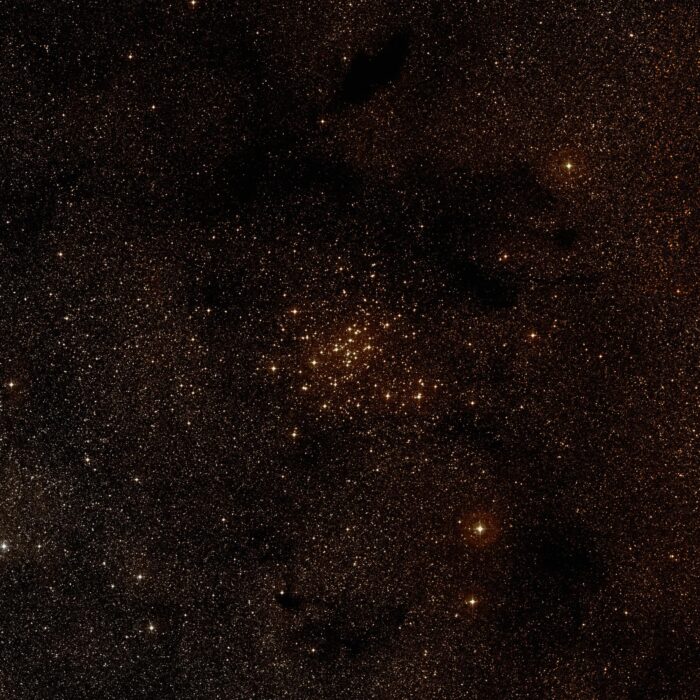
Copyright by WikiSky.org, WikiSky's snapshot tool
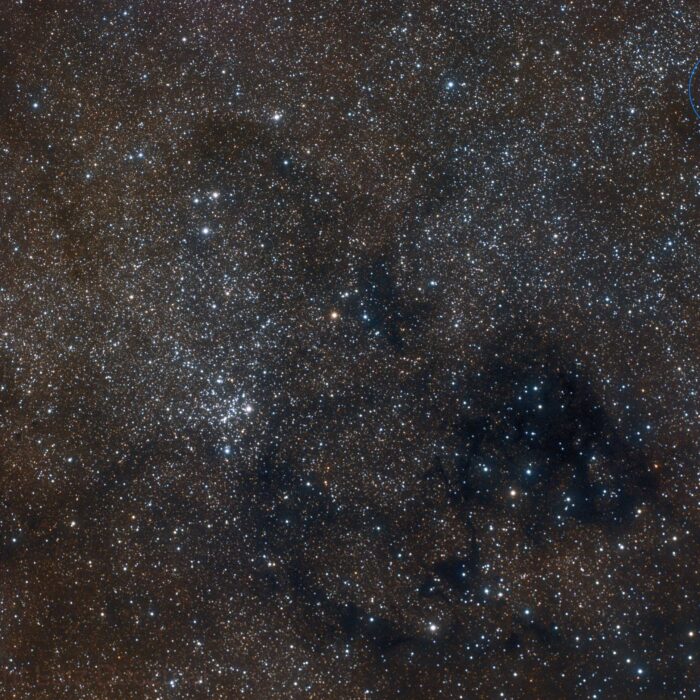
On the upper right is the star cluster NGC 6134.
Below center left is NGC 6167.
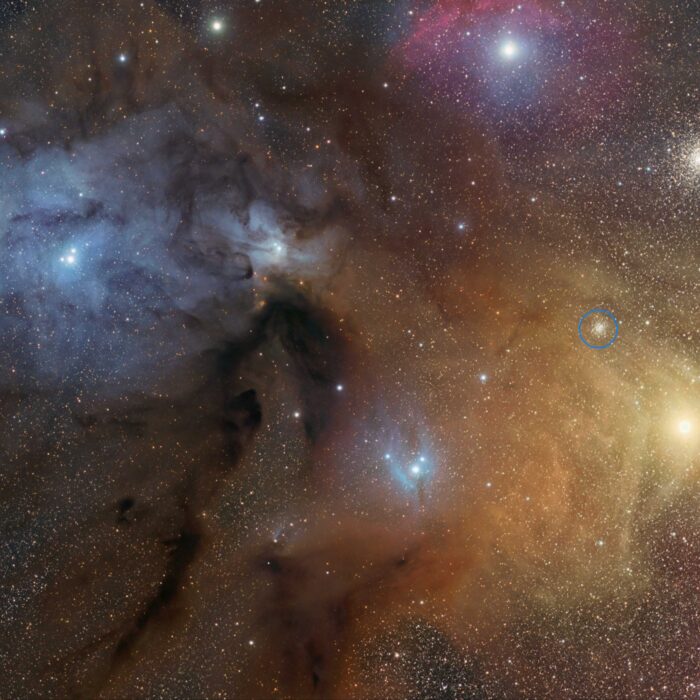
Giuseppe Donatiello, CC0, via Wikimedia Commons
The red nebula at the top is Sh2-9 with the star Sigma Scorpii (Alniyat) in the center and the reflection nebula vdB 104.
The yellow star at lower right is Alpha Scorpii (Antares) with nebula vdB 107.
The large star cluster at upper right is M4 and just below it is the small star cluster NGC 6144.
The blue nebula at the bottom is IC 4605.
The large blue nebula on the left is IC 4604 (with the embedded star Rho Ophiuchi).
The dark nebula starting in the center and running to the lower left is LDN 1688, and the dark nebula in the lower center is LDN 1689.
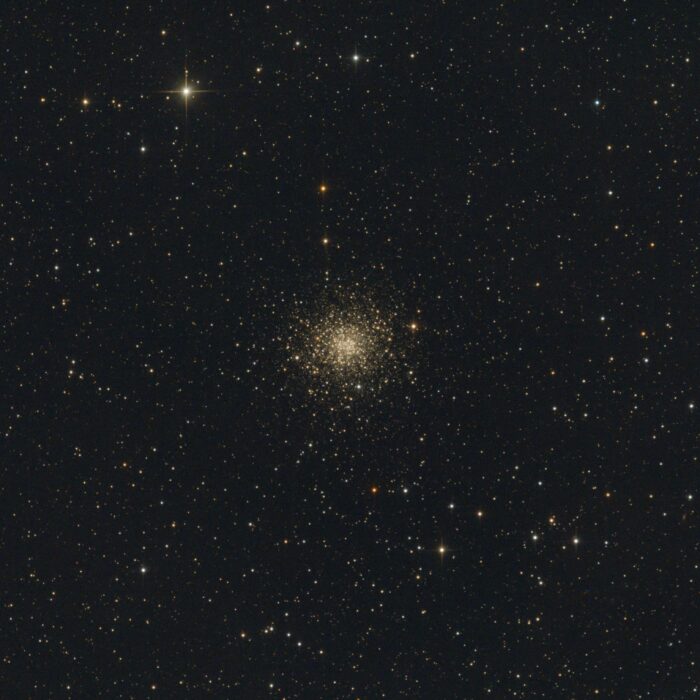
Starhopper, CC BY-SA 4.0, via Wikimedia Commons

Copyright by WikiSky.org, WikiSky's snapshot tool
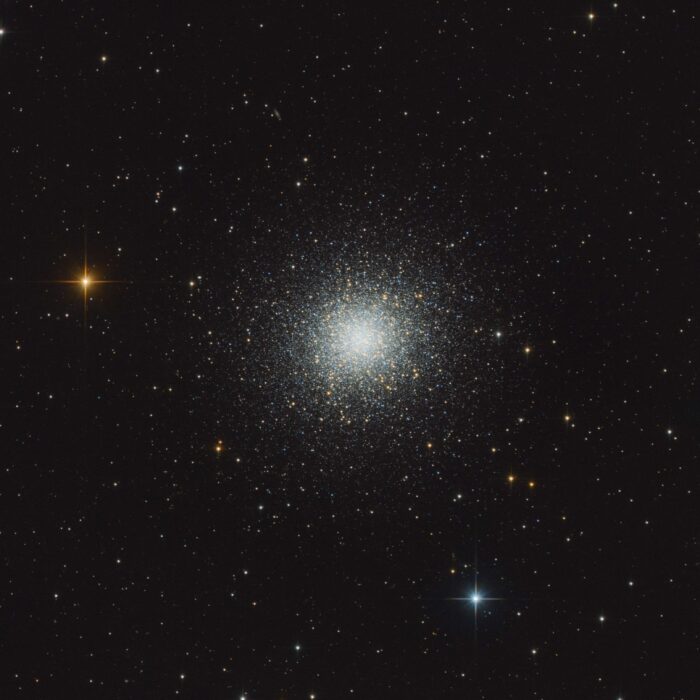
Starhopper, CC BY-SA 4.0, via Wikimedia Commons
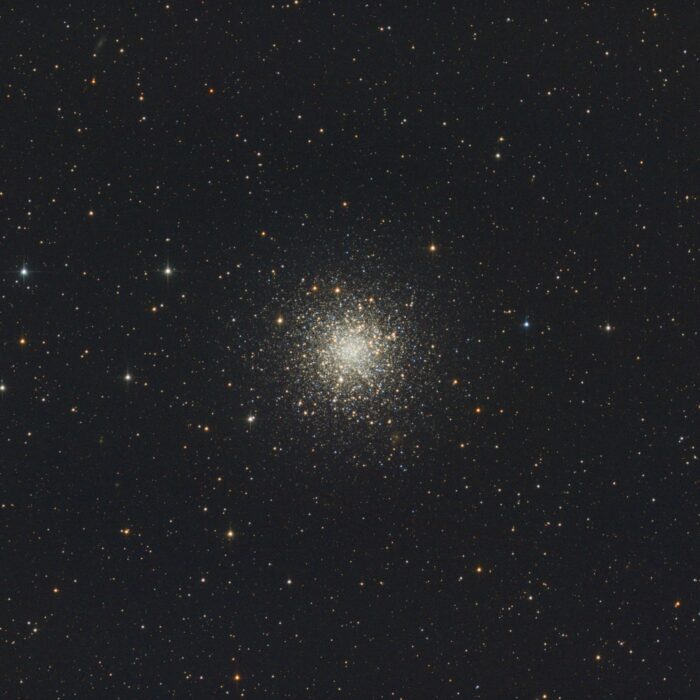
Starhopper, CC BY-SA 4.0, via Wikimedia Commons
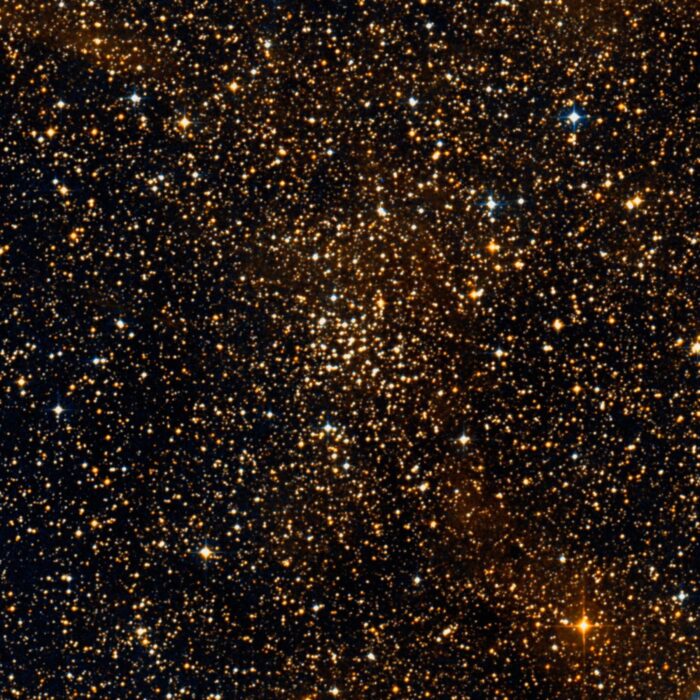
Copyright by WikiSky.org, WikiSky's snapshot tool
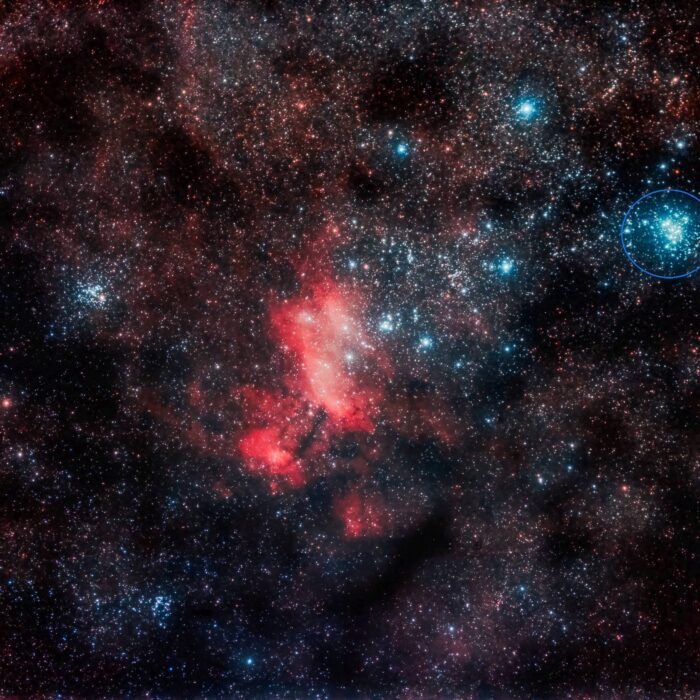
In the center is the Prawn Nebula IC 4628.
On the right is the star cluster NGC 6231 (C76).
Between the two objects above is the blue giant star HD 151804 (NGC 6227).
To the left of the nebula is the star cluster NGC 6242.
At the lower left is the star cluster NGC 6268.
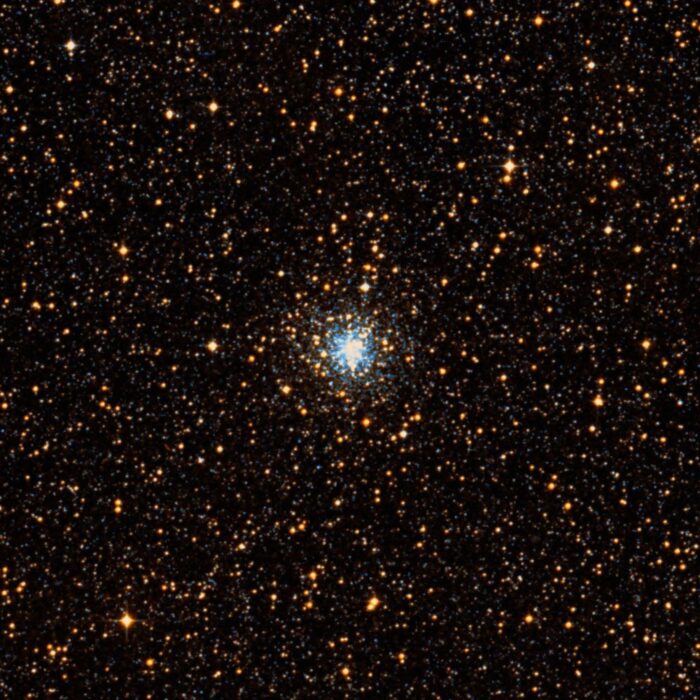
Copyright by WikiSky.org, WikiSky's snapshot tool
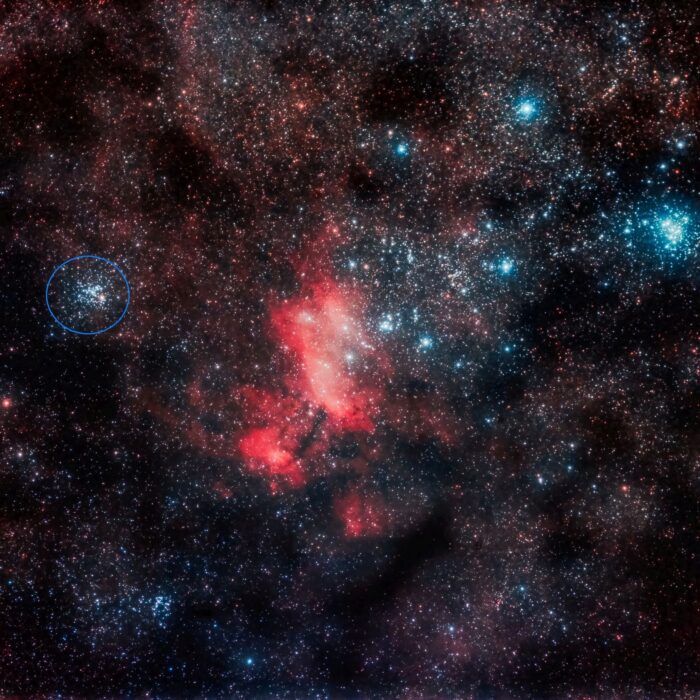
In the center is the Prawn Nebula IC 4628.
On the right is the star cluster NGC 6231 (C76).
Between the two objects above is the blue giant star HD 151804 (NGC 6227).
To the left of the nebula is the star cluster NGC 6242.
At the lower left is the star cluster NGC 6268.
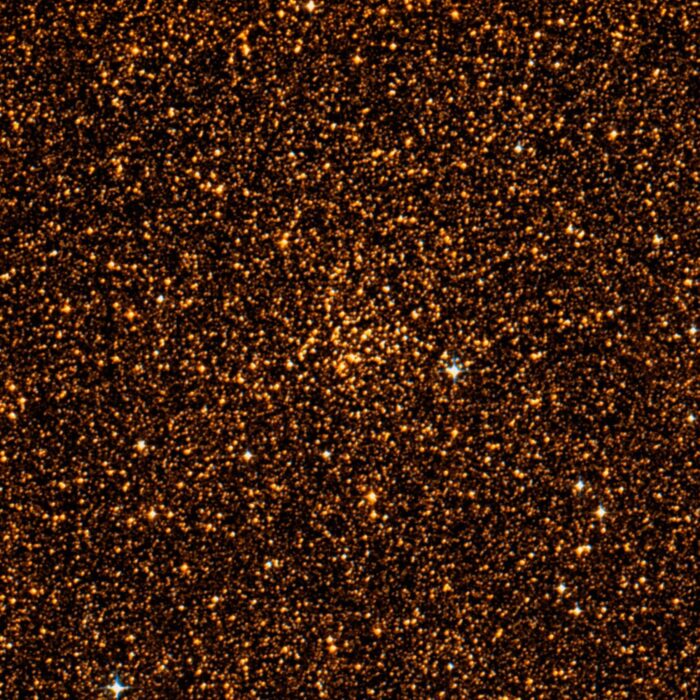
Copyright by WikiSky.org, WikiSky's snapshot tool
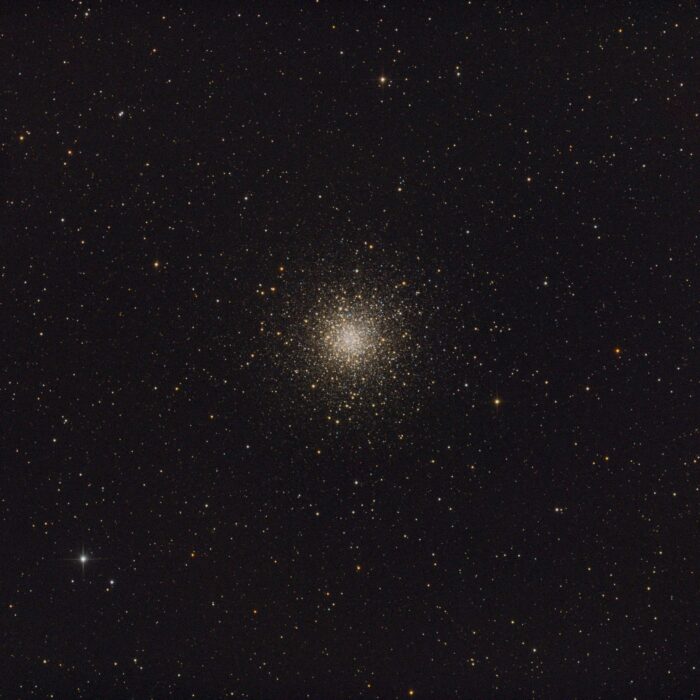
Starhopper, CC BY-SA 4.0, via Wikimedia Commons
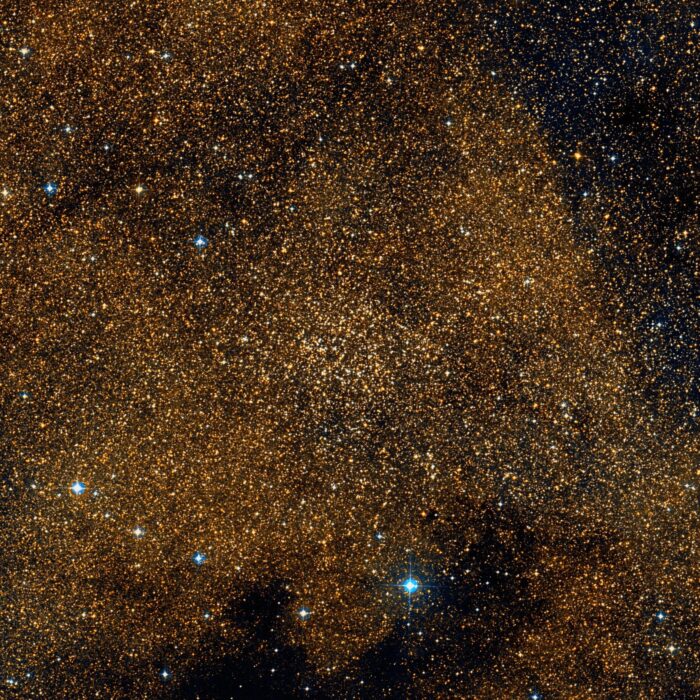
Copyright by WikiSky.org, WikiSky's snapshot tool
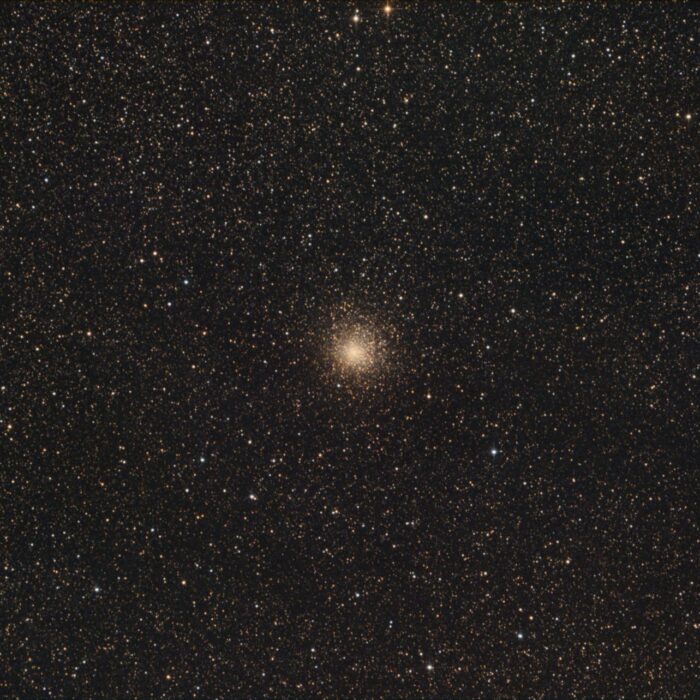
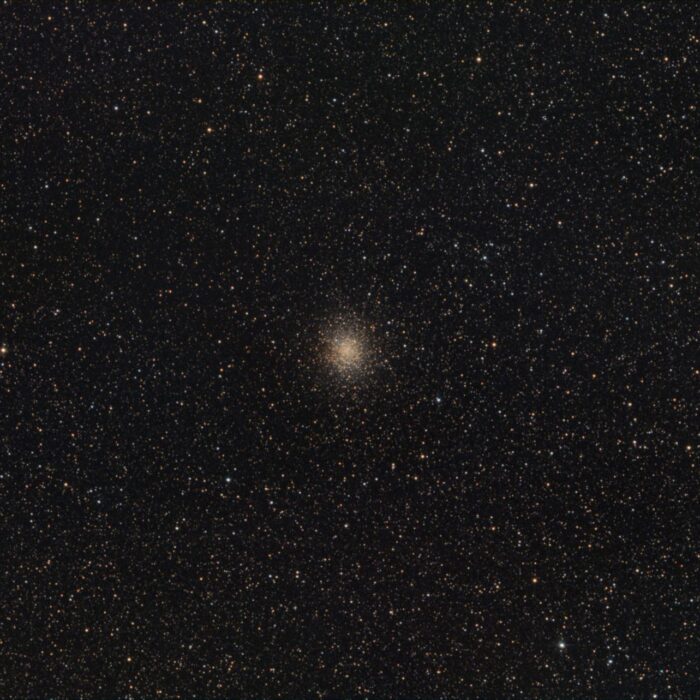
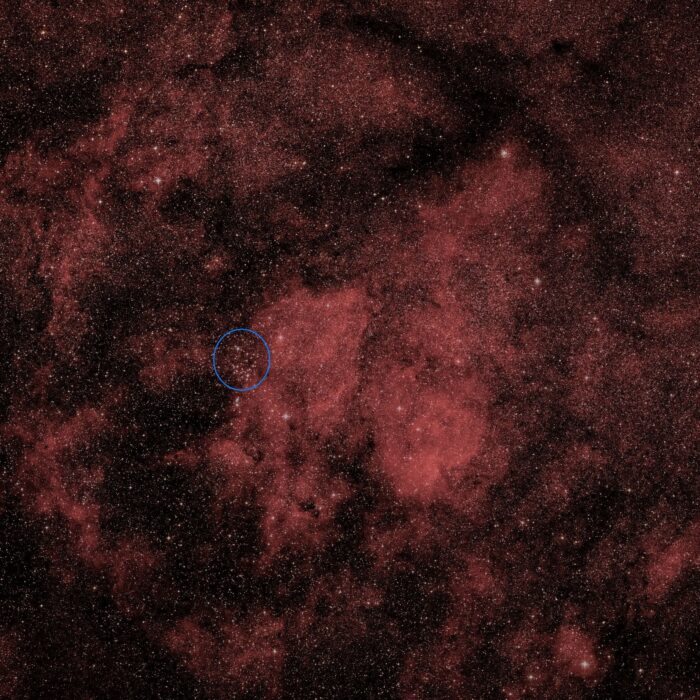
Copyright by WikiSky.org, WikiSky's snapshot tool (nachbearbeitet mit PixInsight und Gimp)
The complete nebula area is RCW 119 (Gum 57b).
The nebula to the right of the star cluster NGC 6281 is Sh2-2.
The upper nebular section of Sh2-2 directly adjacent to the star cluster is Gum 57a.
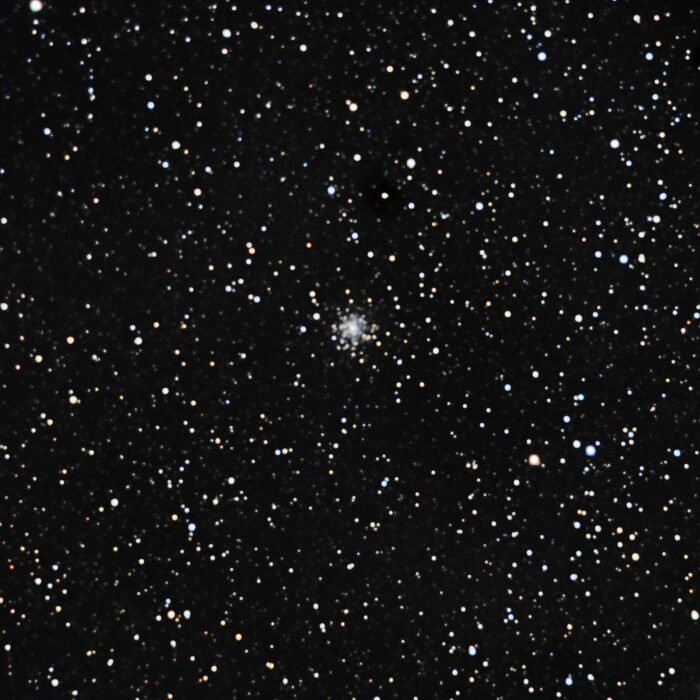
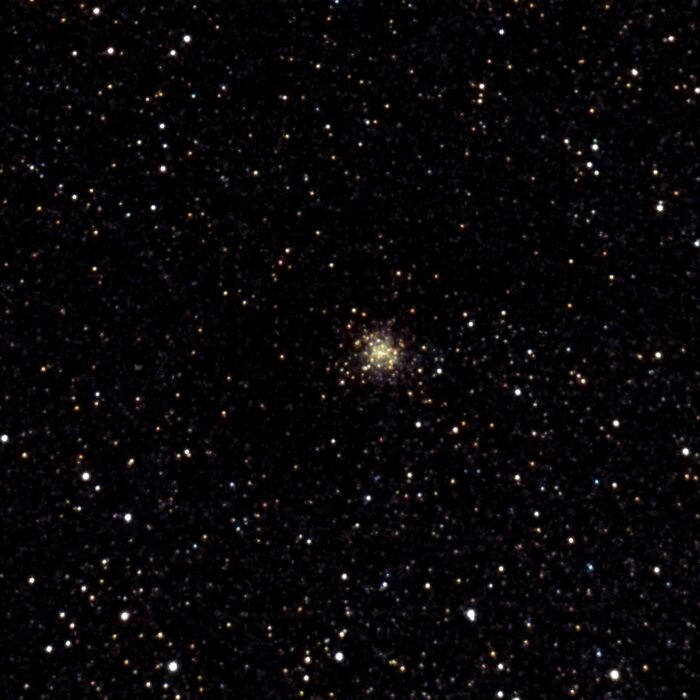
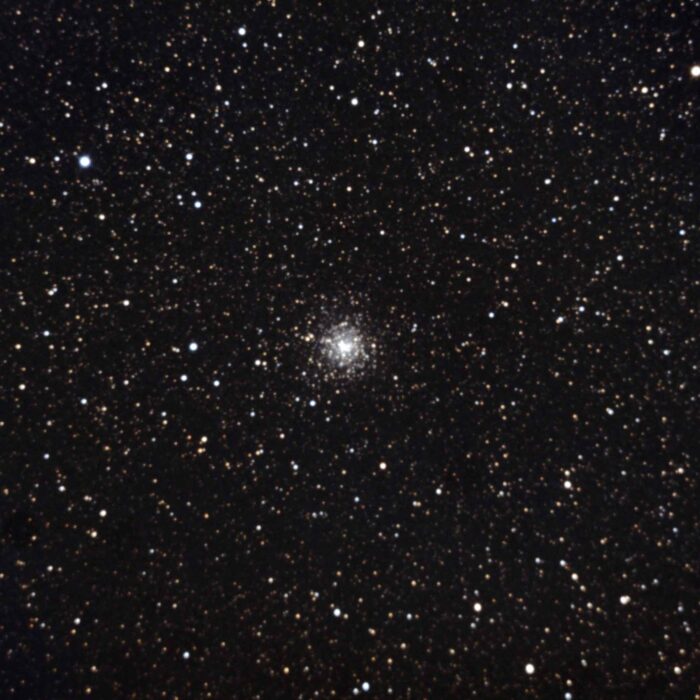
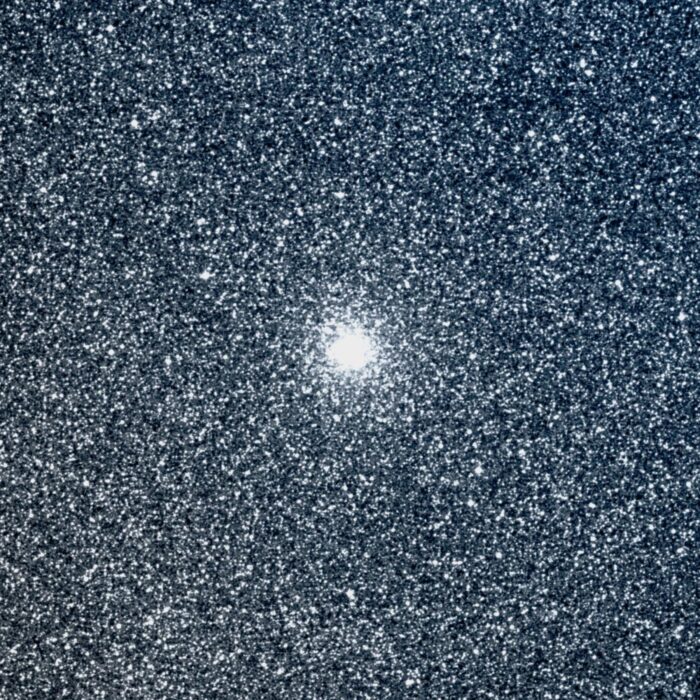
Copyright by WikiSky.org, WikiSky's snapshot tool
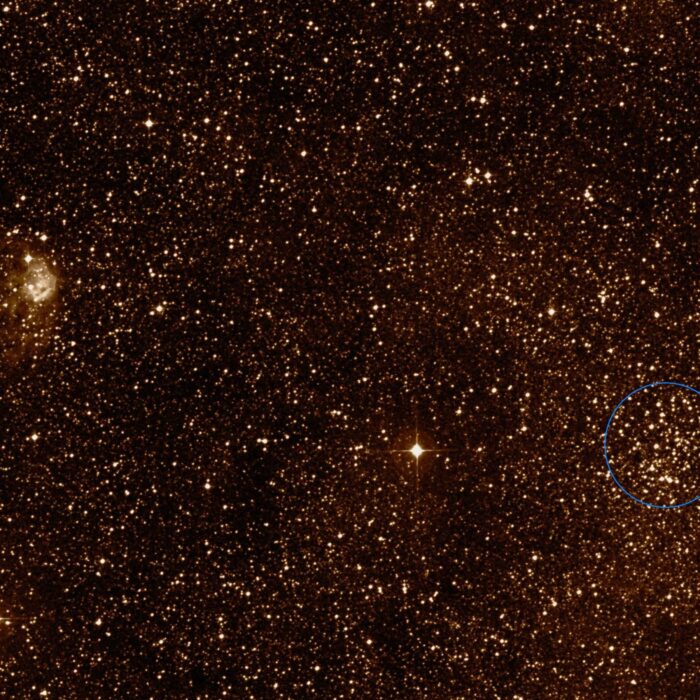
Copyright by WikiSky.org, WikiSky's snapshot tool
On the left is the emission nebula Sh2-4.
On the right is the star cluster NGC 6318.
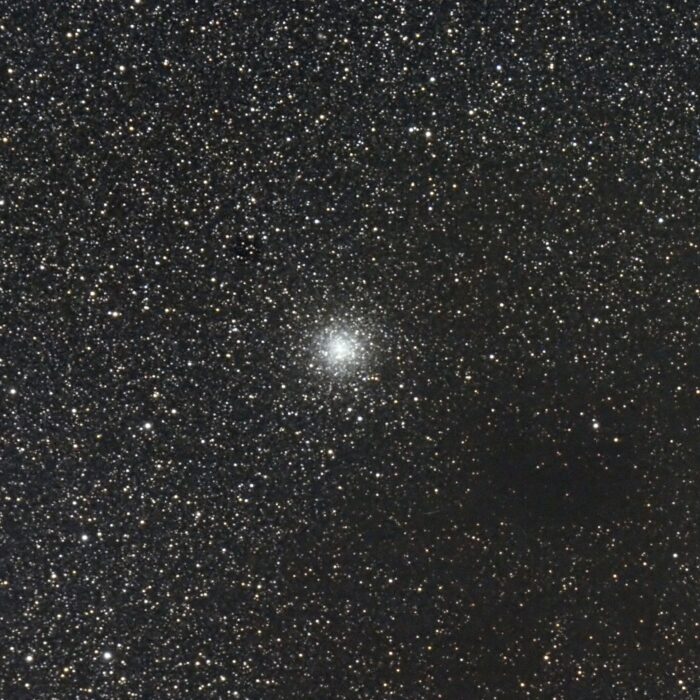
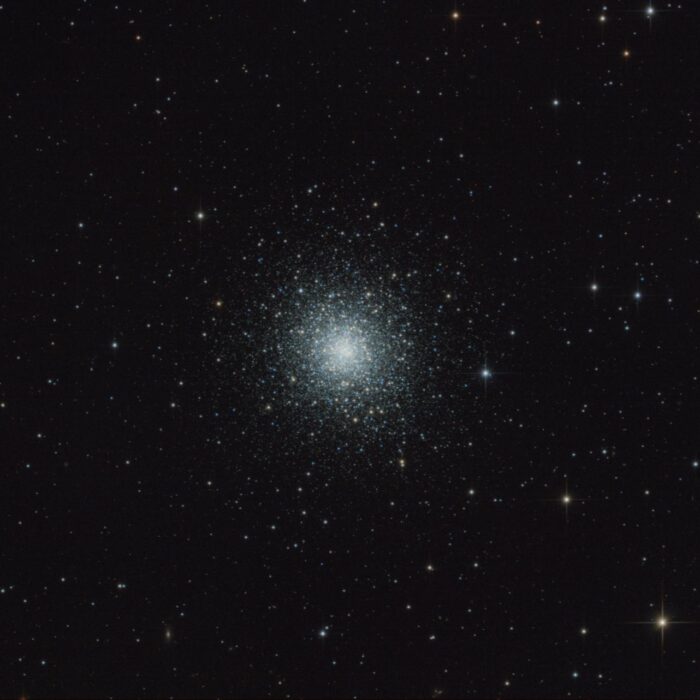

ESO, CC BY 4.0, via Wikimedia Commons, Original-Link
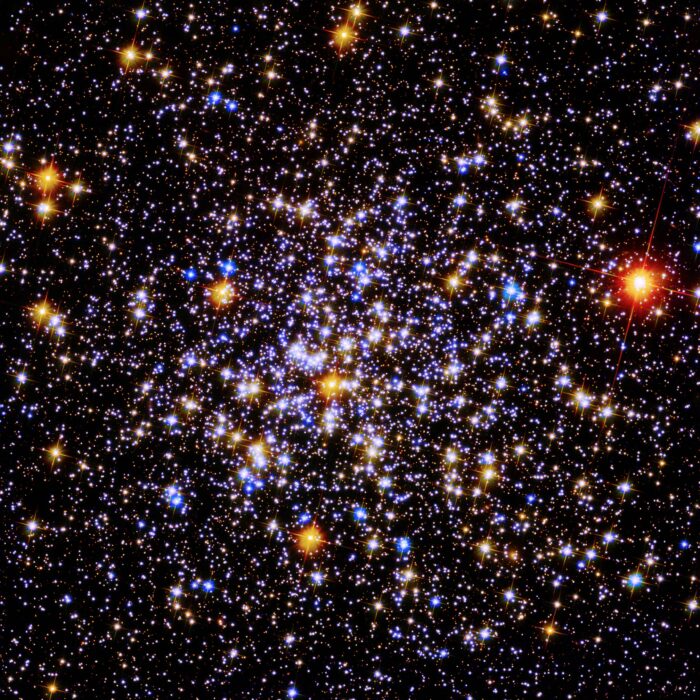
NASA Hubble Space Telescope, CC BY 2.0, via Wikimedia Commons
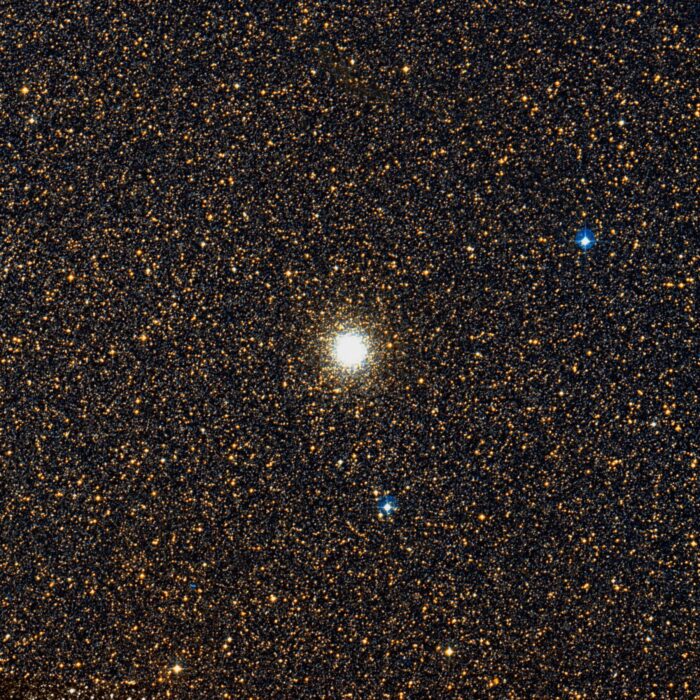
Copyright by WikiSky.org, WikiSky's snapshot tool
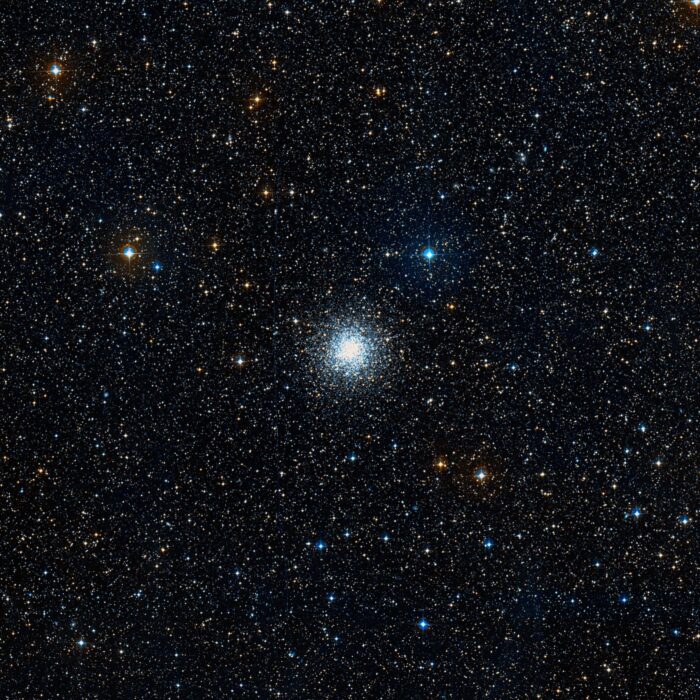
Copyright by WikiSky.org, WikiSky's snapshot tool
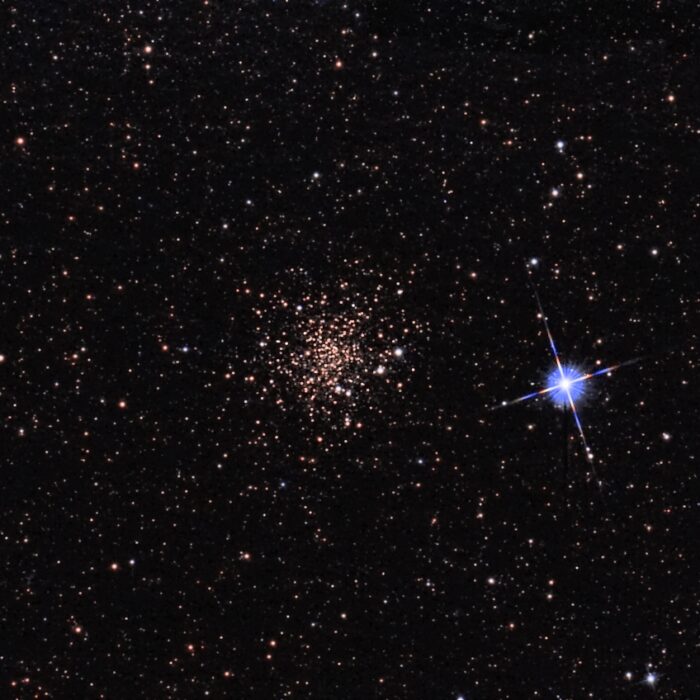
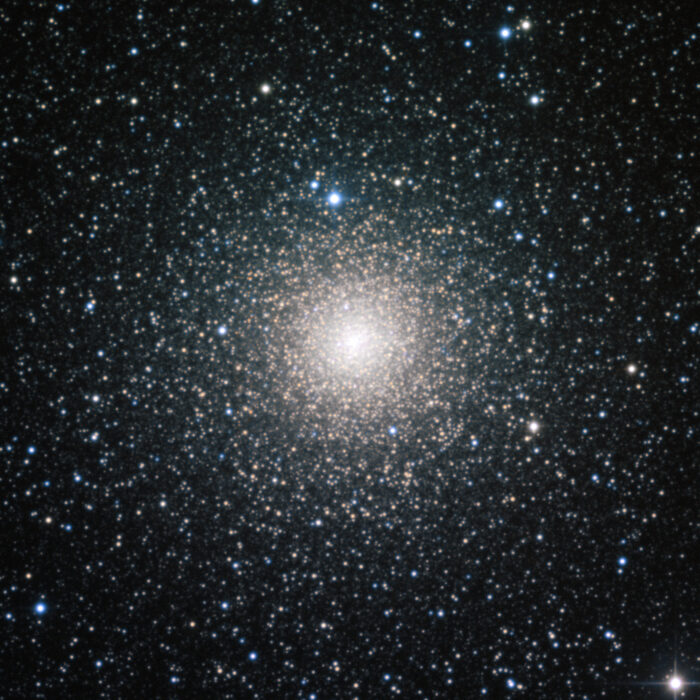
ESO, F. Ferraro (University of Bologna), CC BY 4.0, via Wikimedia Commons, Original-Link
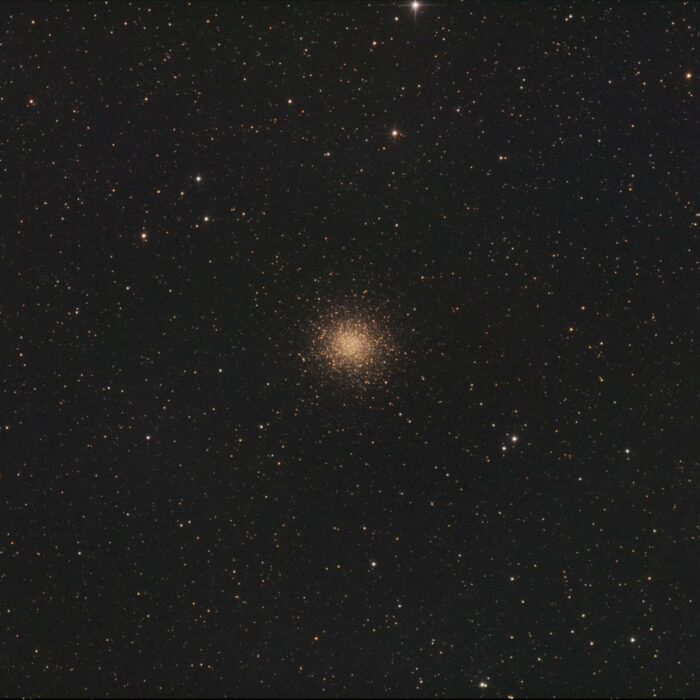
Starhopper, CC BY-SA 4.0, via Wikimedia Commons
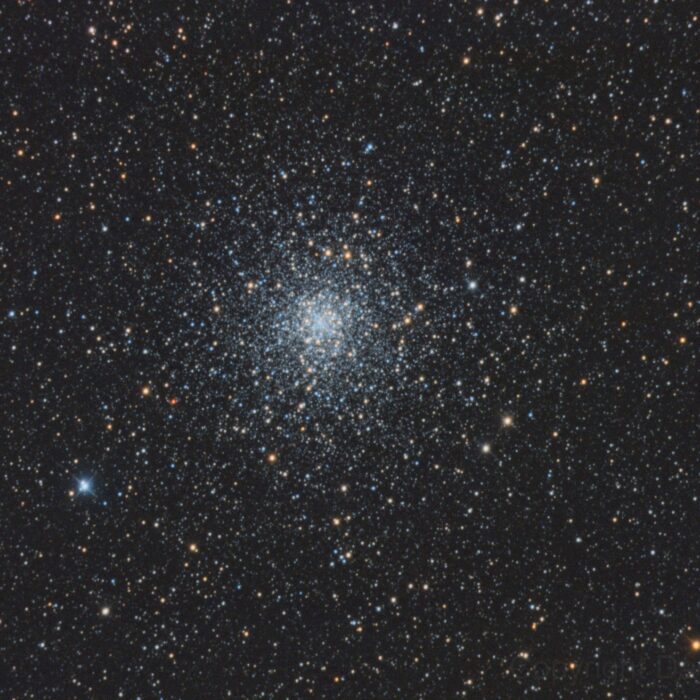
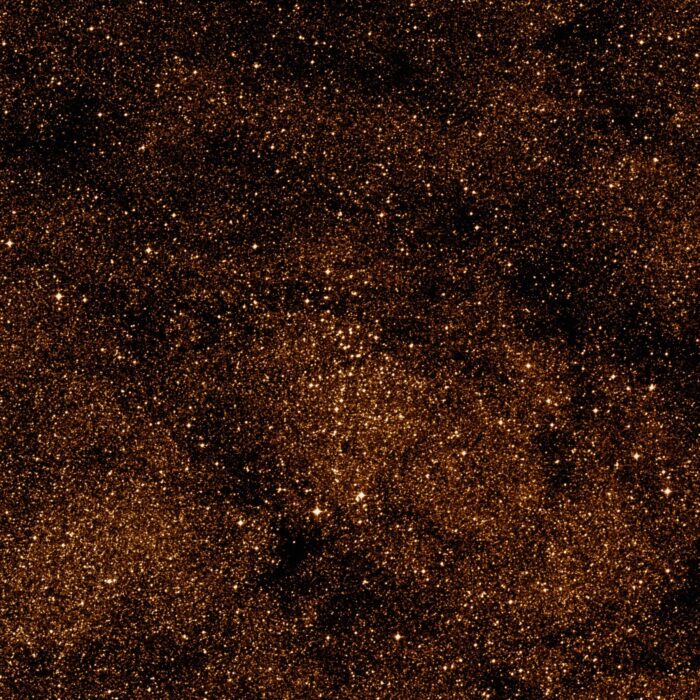
Copyright by WikiSky.org, WikiSky's snapshot tool
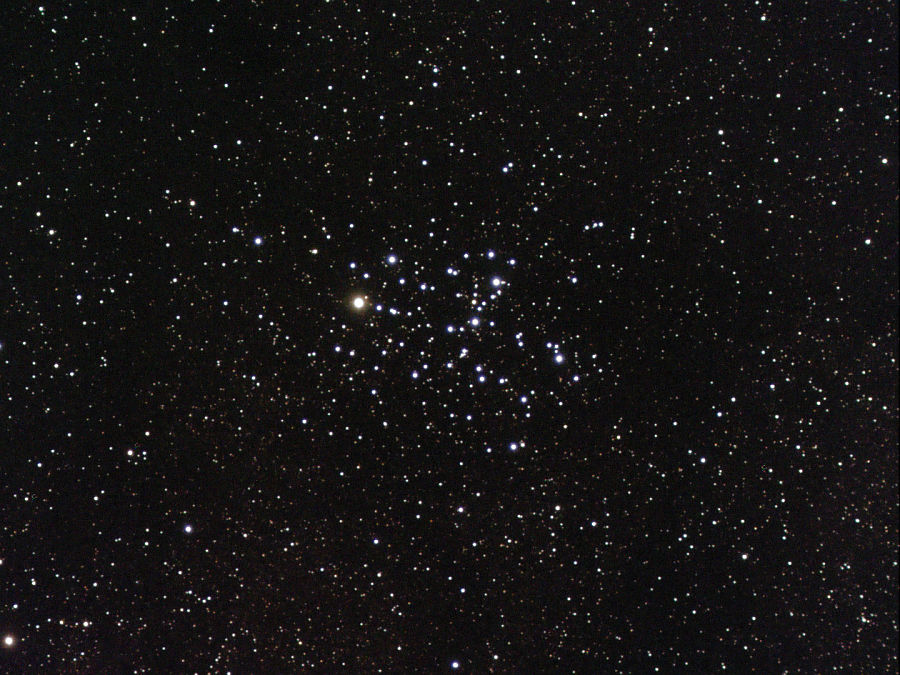
Ole Nielsen, CC BY-SA 2.5, via Wikimedia Commons
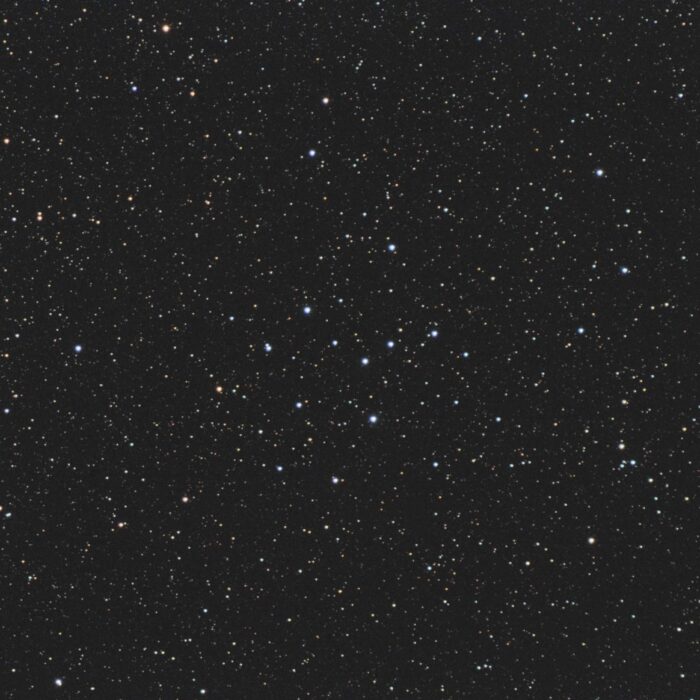
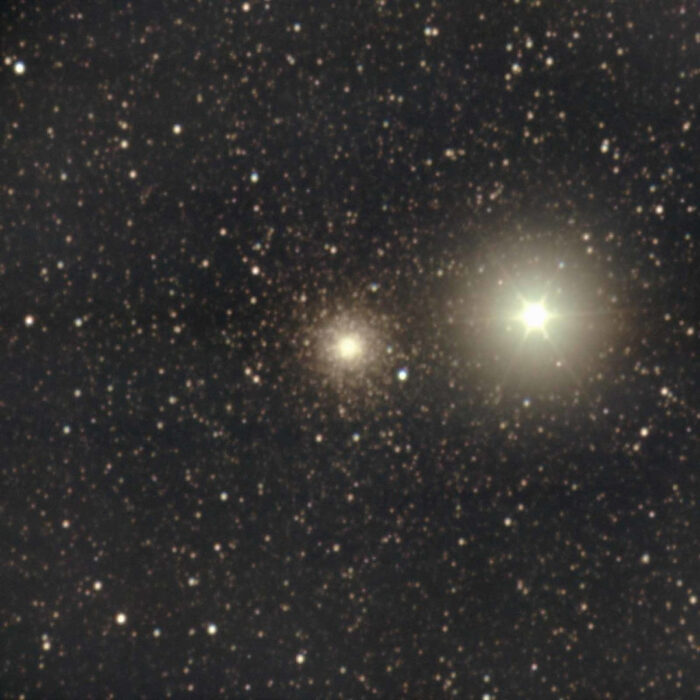
The bright star is Gamma Scorpii (G Sco, Fuyue).
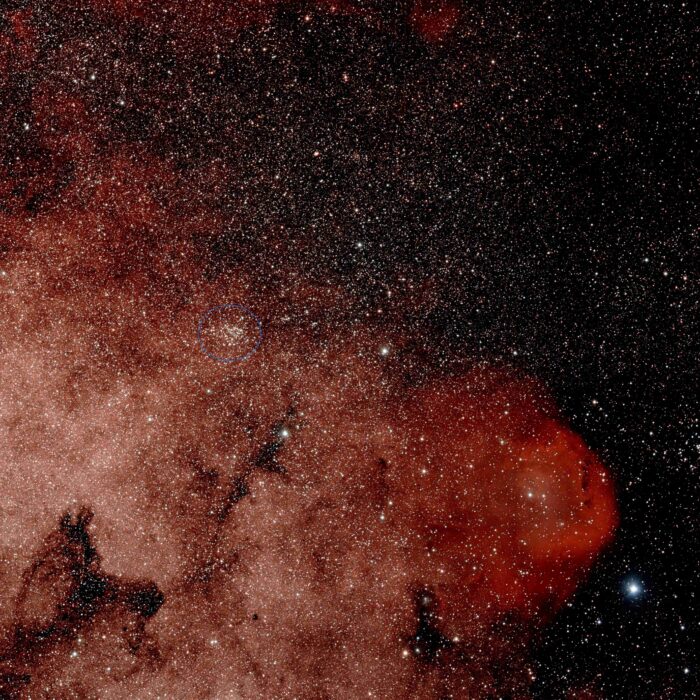
In the center is the star cluster NGC 6451.
The dark red emission nebula is Sh2-15.
To the right is the star cluster NGC 6425.
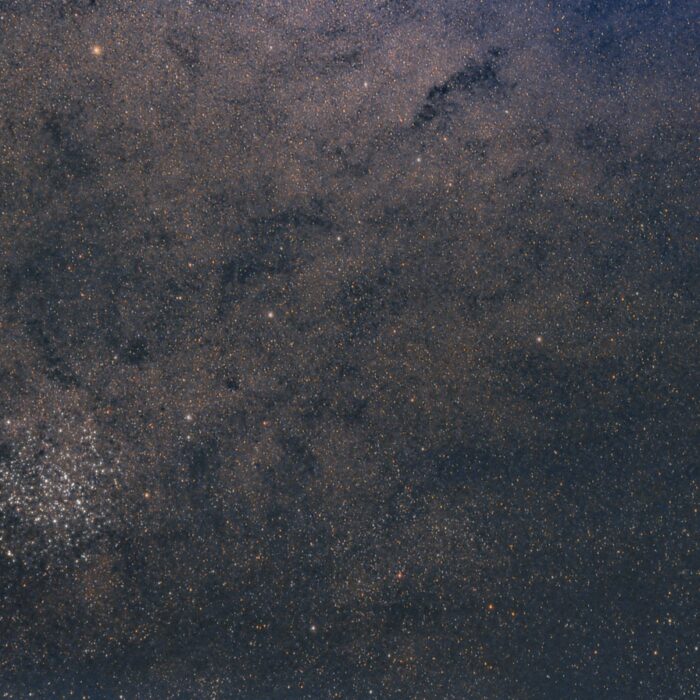
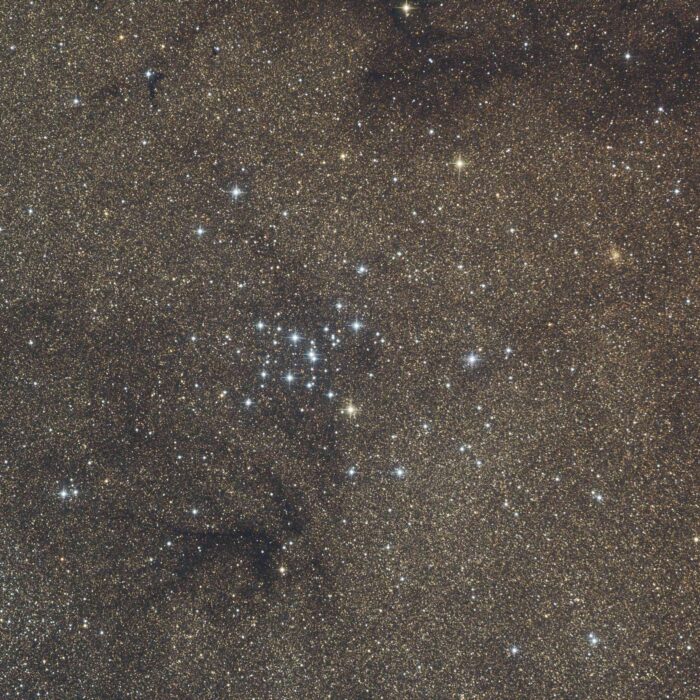
Starhopper, CC BY-SA 4.0, via Wikimedia Commons
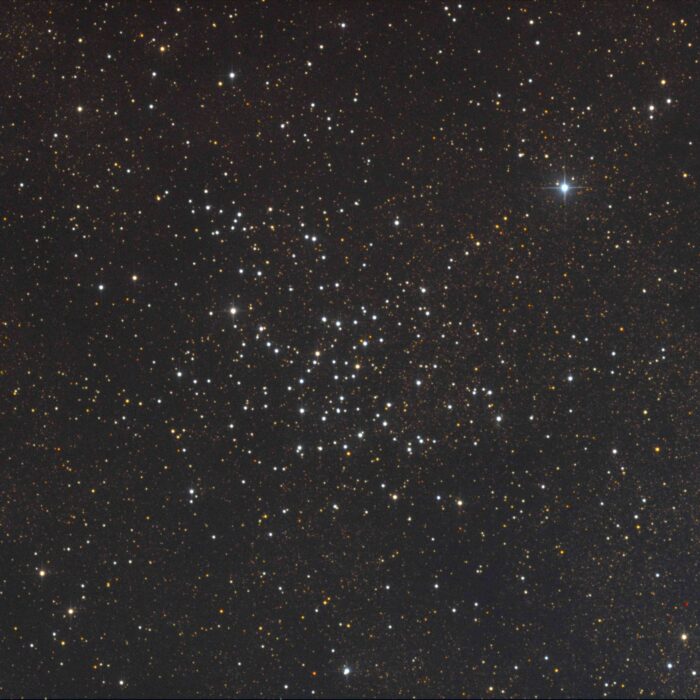
Starhopper, CC BY-SA 4.0, via Wikimedia Commons
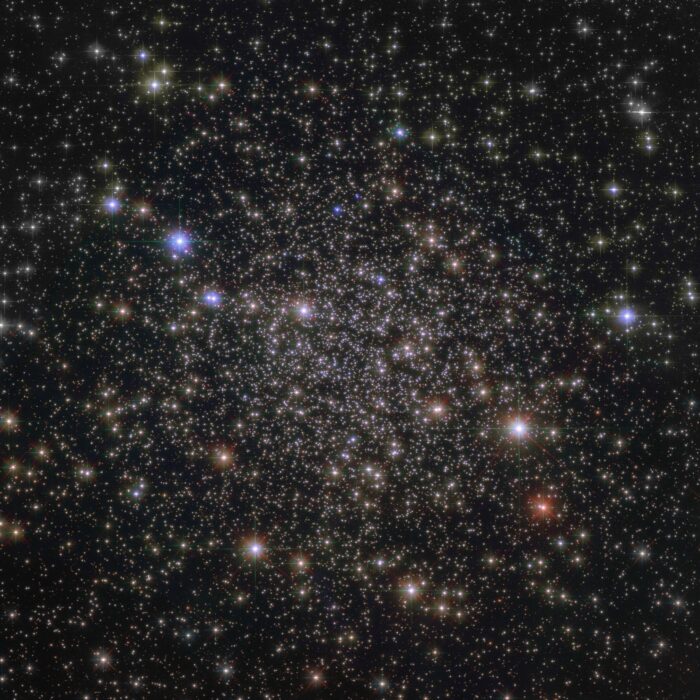
Judy Schmidt from Fresh Meadows, NY, USA, CC BY 2.0, via Wikimedia Commons
NGC 6496 is considered an extremely metal-rich star cluster.
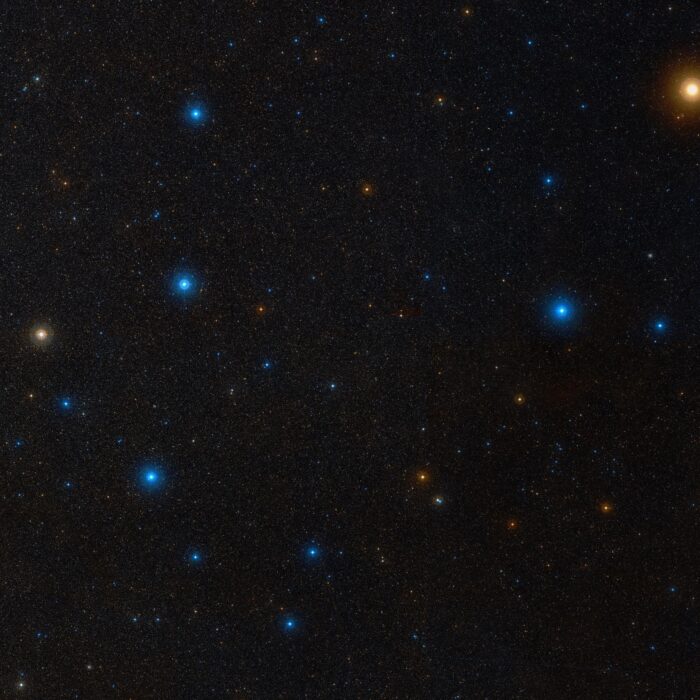
Copyright by WikiSky.org, WikiSky's snapshot tool
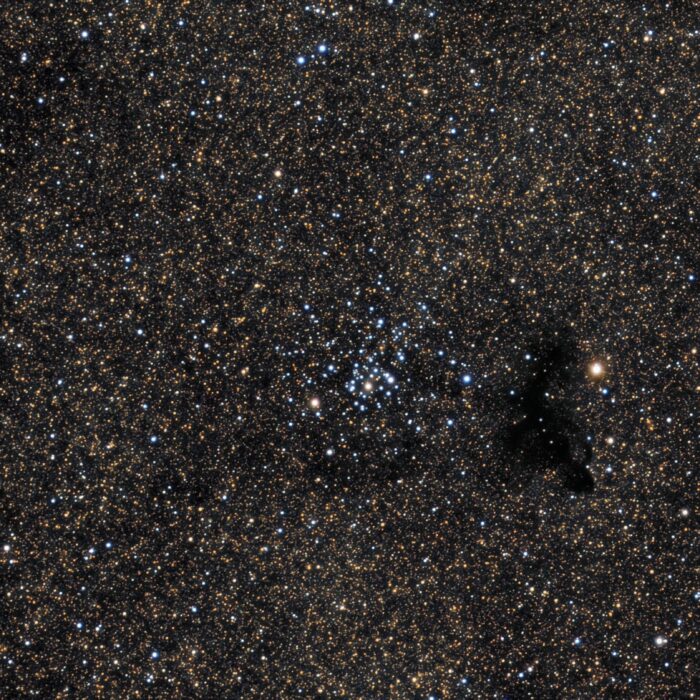
The dark nebula next to the star cluster is Barnard 86.
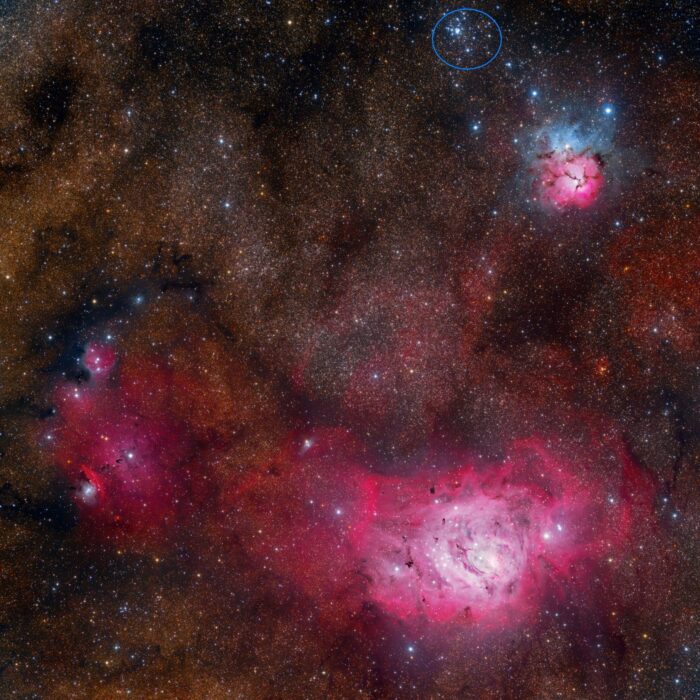
At the very top center is the Star cluster M21.
Diagonally right below is the Trifid Nebula M20 and diagonally right below Sh2-28.
At lower center is the Lagoon Nebula M8 with the bright nebulae NGC 6526 (lower left) and the irregular area NGC 6533 (upper right) (separated by the slightly darker s-shaped area) and the Star cluster NGC 6530 (left of the bright area).
To the left is the large nebula Sh2-29 with the nebula NGC 6559 (lower left) and the oblique planetary nebula Minkowski 1-41 (red dot), the star cluster IC 4685 (center), the nebula IC 1275 (upper left center), the nebula IC 1274 (above).
A bit above the blue star is the nebula IC 4684 and diagonally right above is the star cluster NGC 6546.
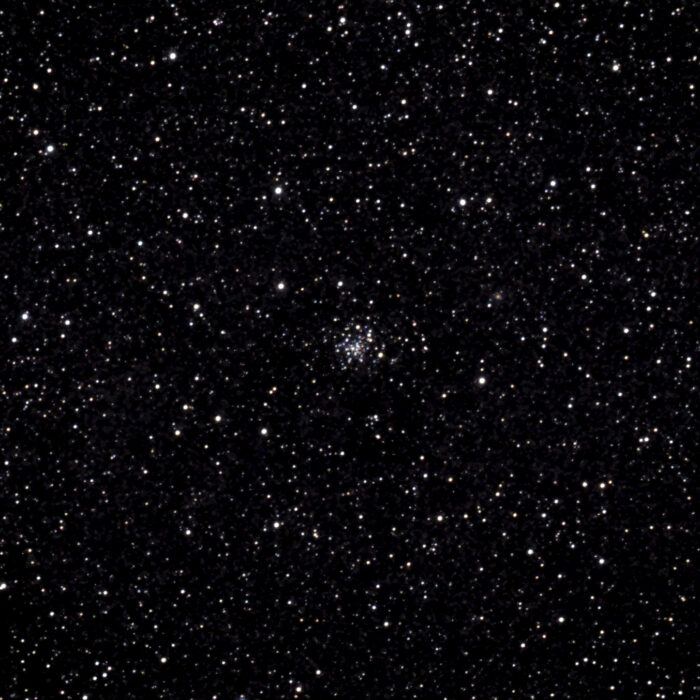
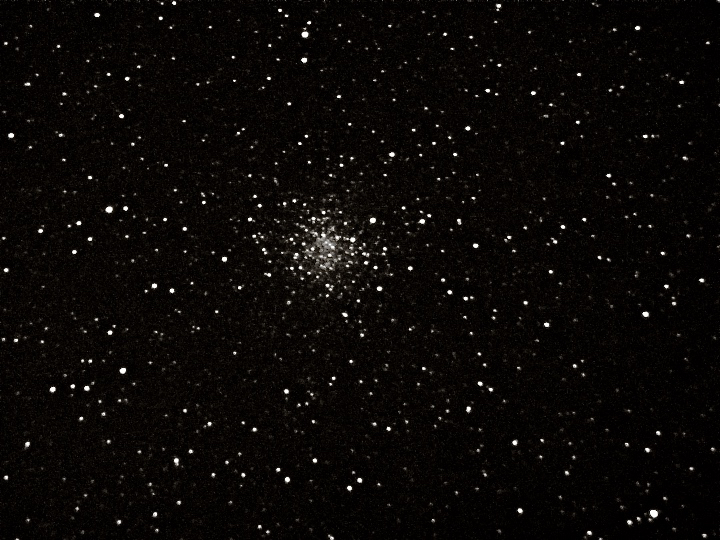

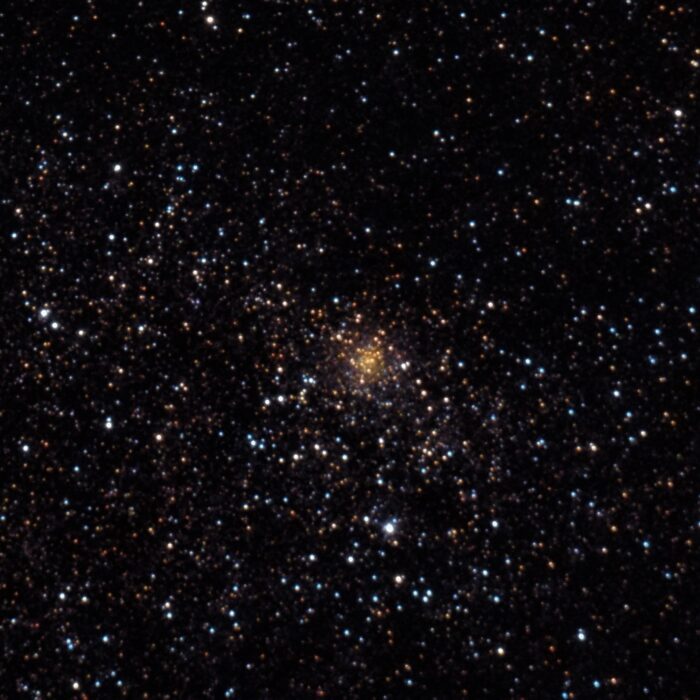
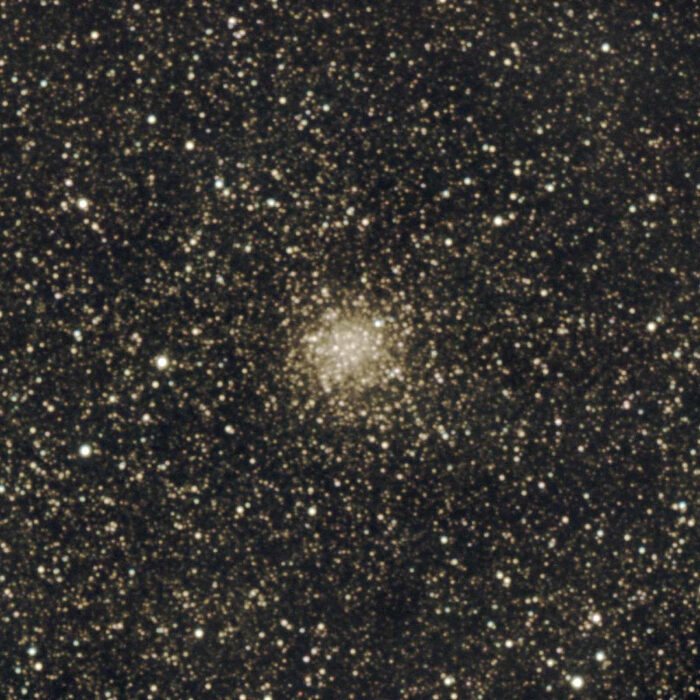
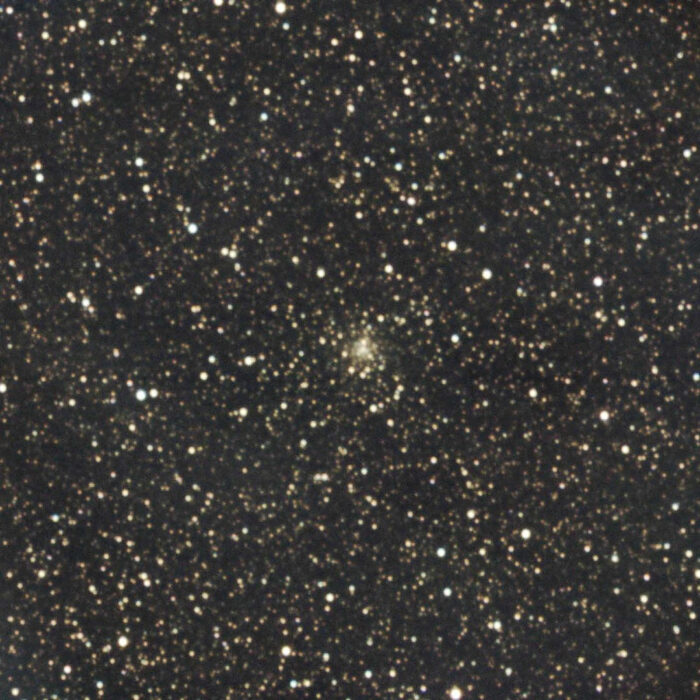
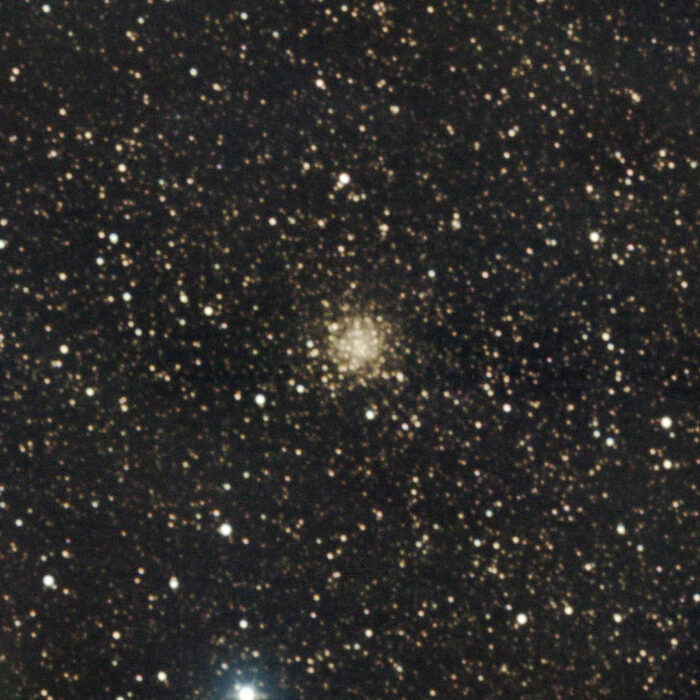
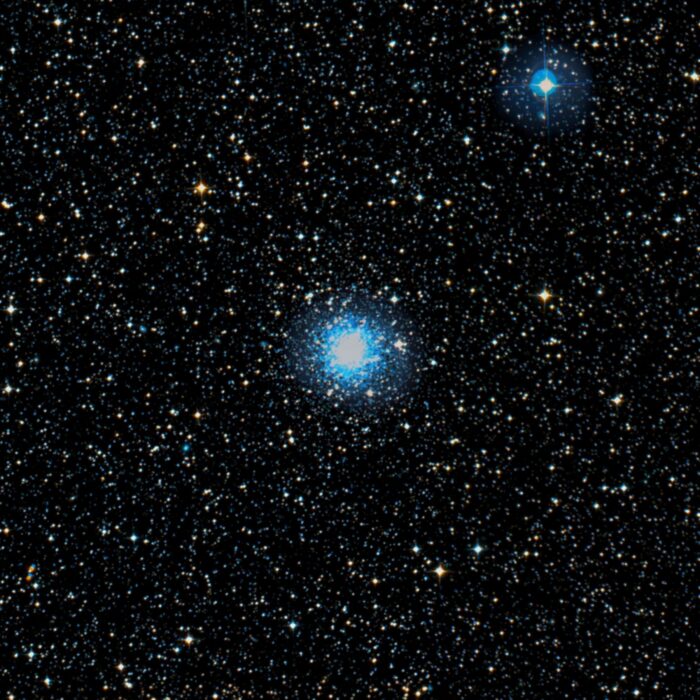
Copyright by WikiSky.org, WikiSky's snapshot tool (nachbearbeitet mit PixInsight und Gimp)
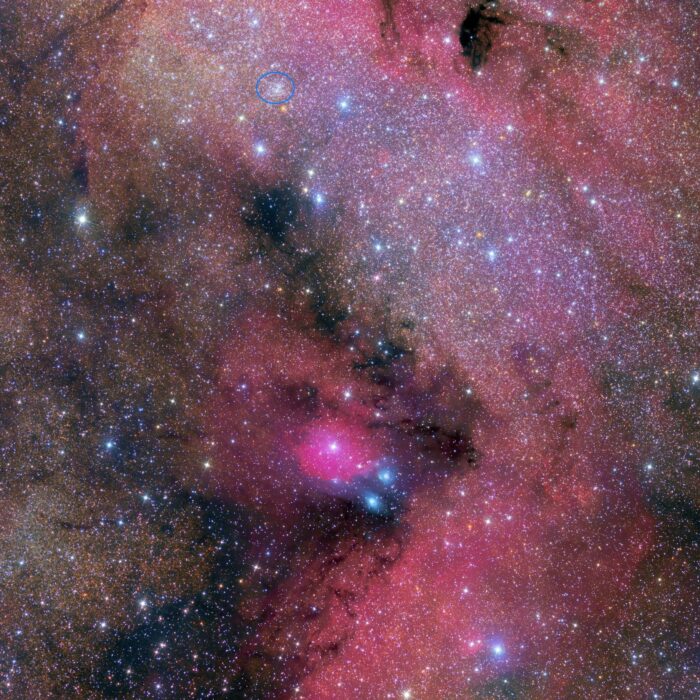
The large star cloud at the top is M24, which contains the star cluster NGC 6603 at the top and SH2-39 diagonally below it. The upper red nebula area is Sh2-41.
The dark nebula at the top is Barnard 92 and to the left you can see the lower end of Barnard 93.
The small red nebula is IC 1284 with the bright star HD 167815 in the center.
Directly above, the fainter red nebula, is IC 1283.
Just to the right are the two reflection nebulae NGC 6589 (the upper) and NGC 6590 (vdB 119) (the lower).
The nebula area to the lower right is Sh2-35.
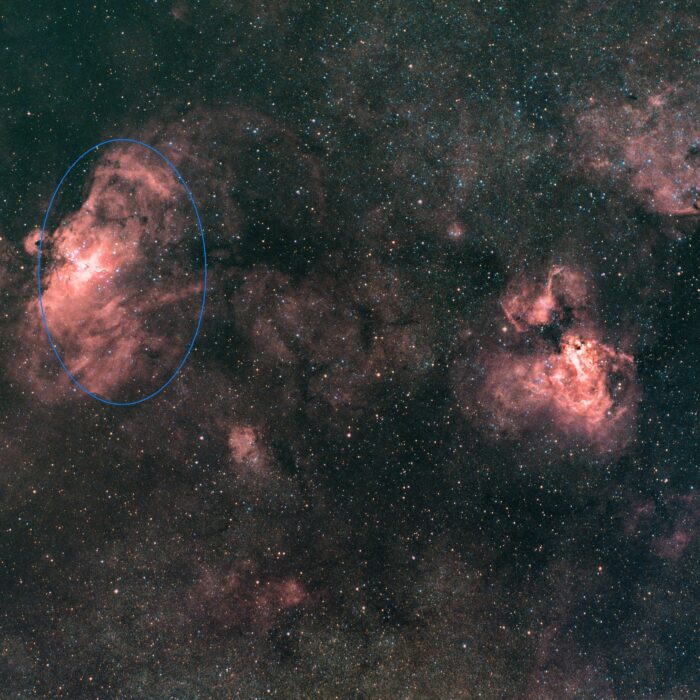
On the left the large Nebula is IC 4703 (Eagle Nebula: 70'x50' extent). It contains the open star cluster M16 (NGC 6611: 7' extent).
The right nebula is M17 with NGC 6618 (below (Gum 81a)) and the faint nebulae IC 4706 and IC 4707 (together Gum 81b) directly above it, and the small nebula Sh2-47 above it.
On the right edge, the star cluster M18 can be seen.
In the upper right corner is IC 4701.
Centered between M16 and M17 is RCW 161 and below it the HII area Gum 82.
Right below M16 is Sh2-48 and below M17 is RCW 159.
At the very bottom center of the edge is Sh2-50, and to its left is Sh2-53.
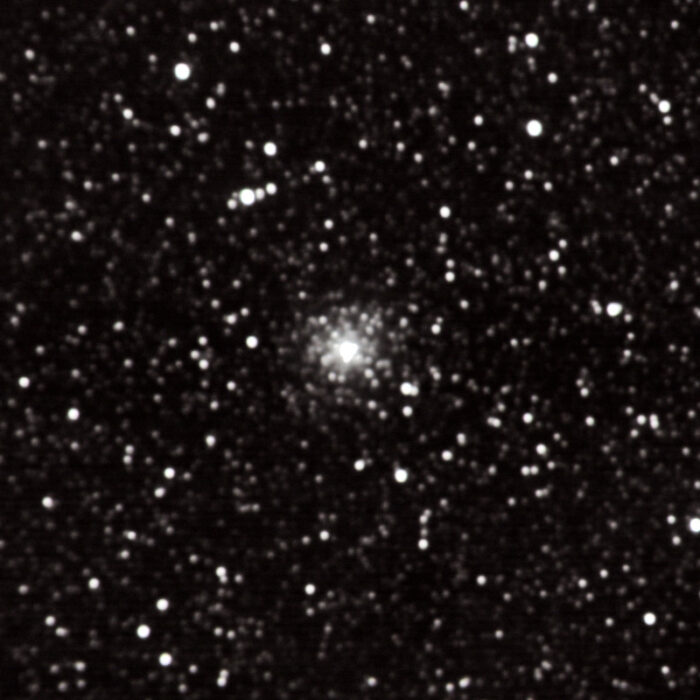
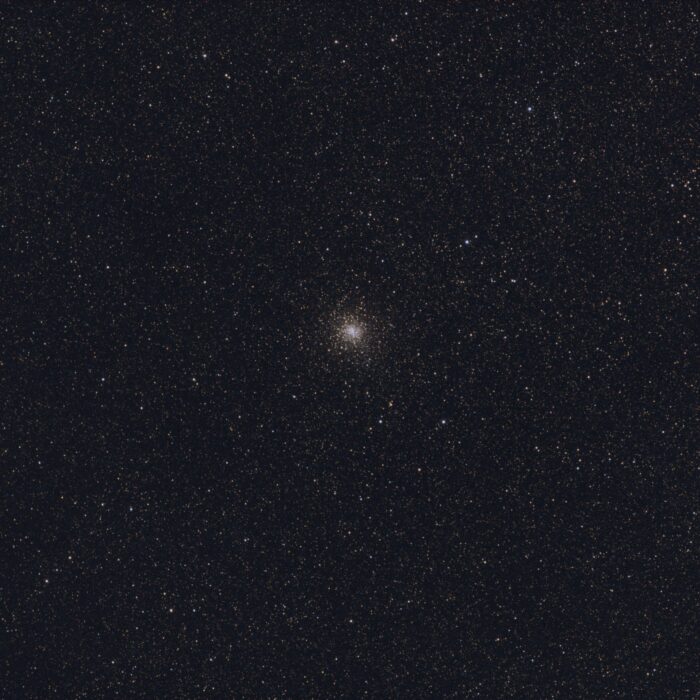
Starhopper, CC BY-SA 4.0, via Wikimedia Commons
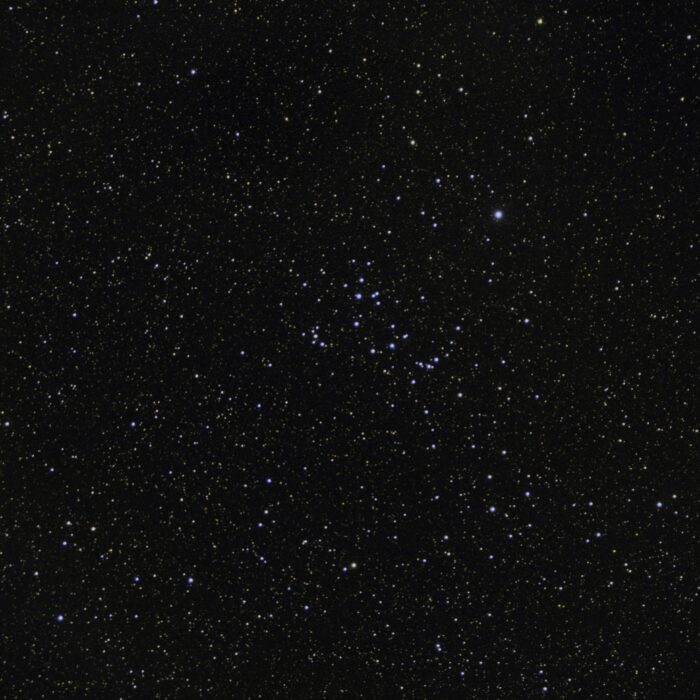
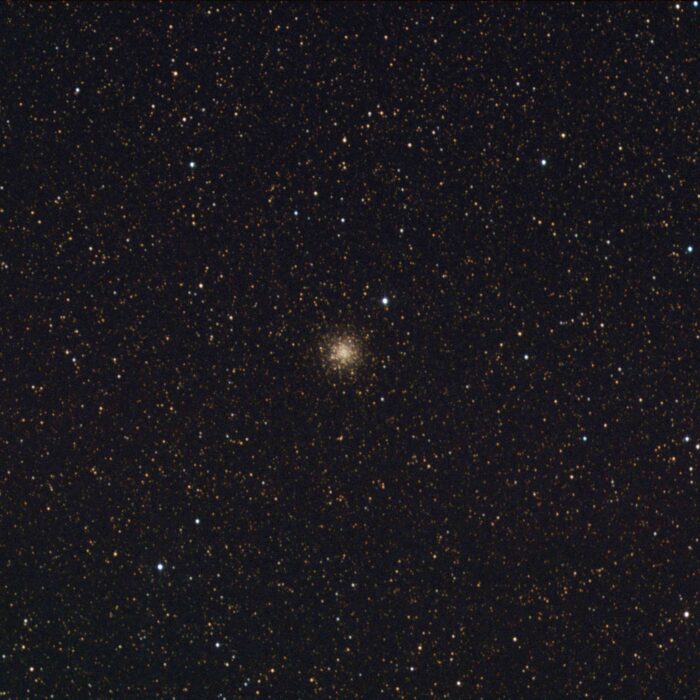
Starhopper, CC BY-SA 4.0, via Wikimedia Commons
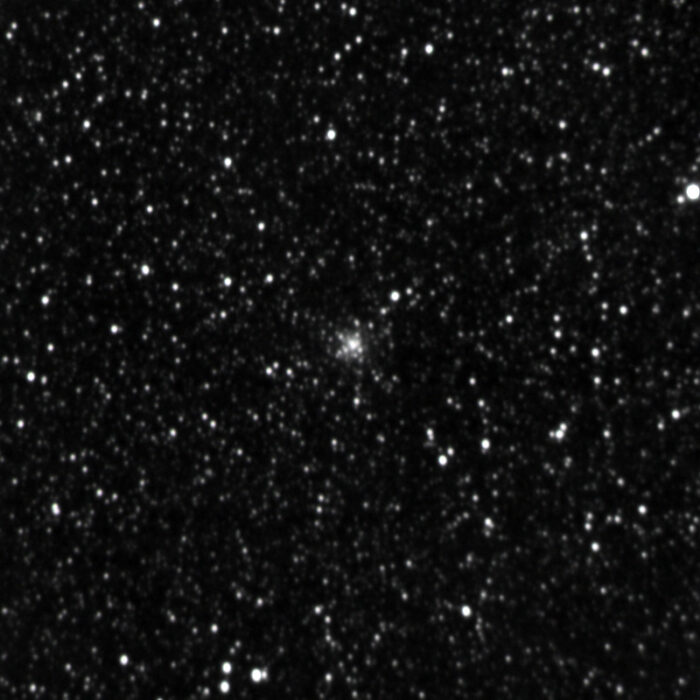
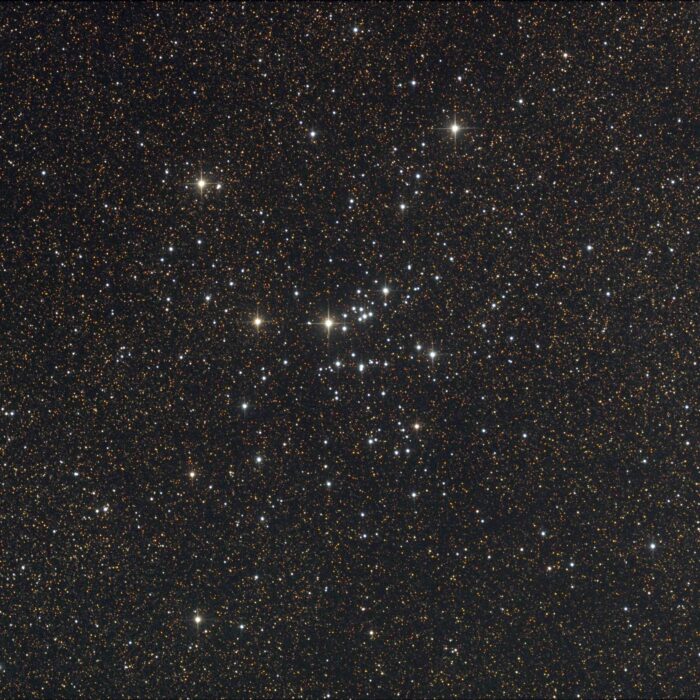
Starhopper, CC BY-SA 4.0, via Wikimedia Commons
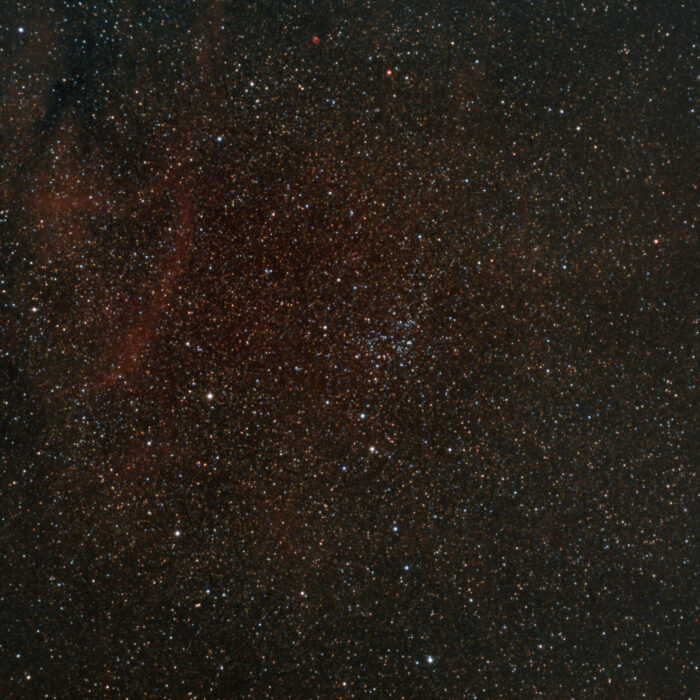
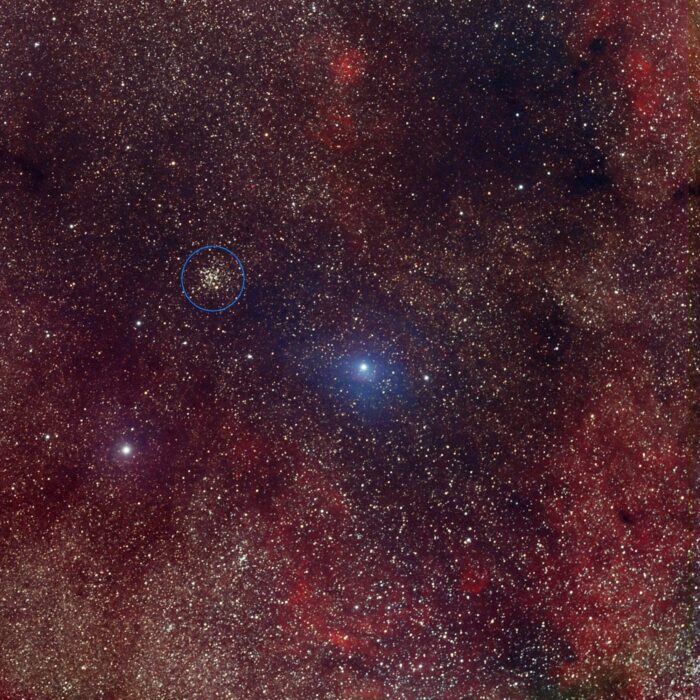
NGC 6649 copyright by Astromaster
In the center of the image is the reflection nebula IC 1287 (vdB 124).
The star cluster diagonally left above is NGC 6649.
The red nebula at the top center is Sh2-56.
The red nebula in the lower center is Sh2-55.
To the right, the small red nebula is Abell 45.
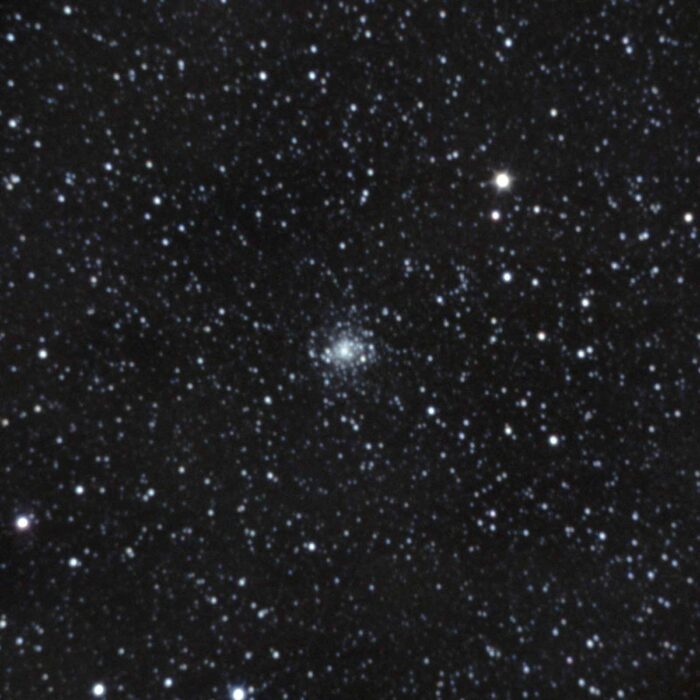
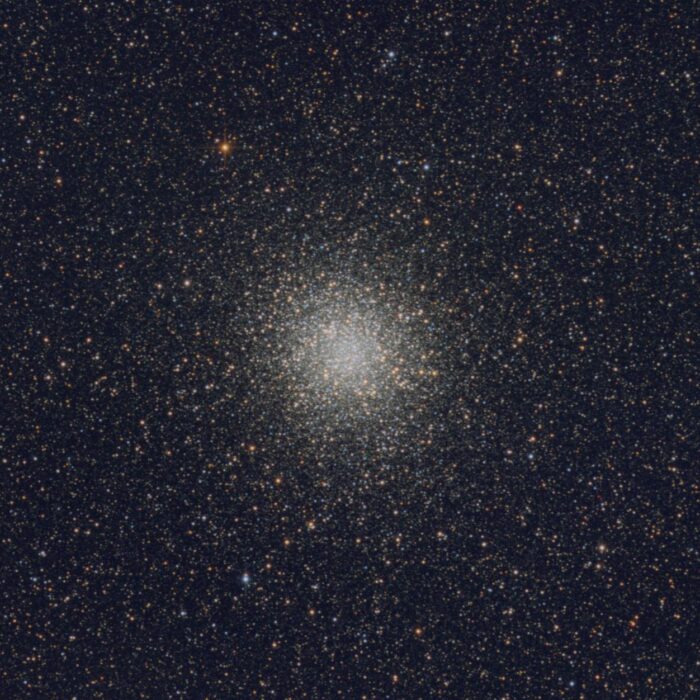
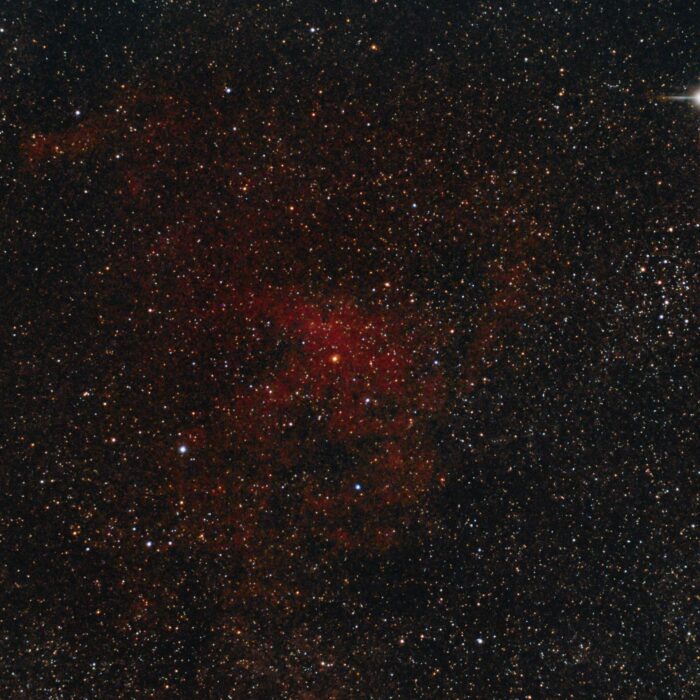
In the center is the emission nebula Sh2-59.
On the right edge is NGC 6664.
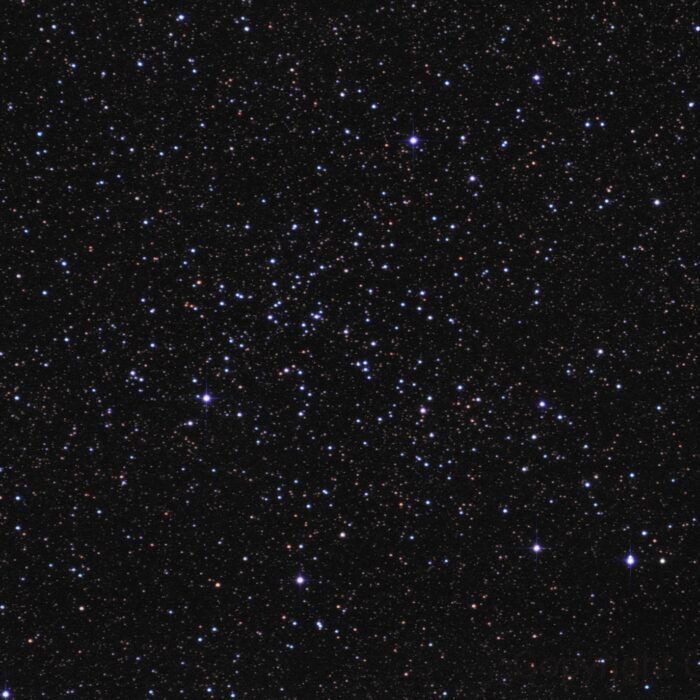
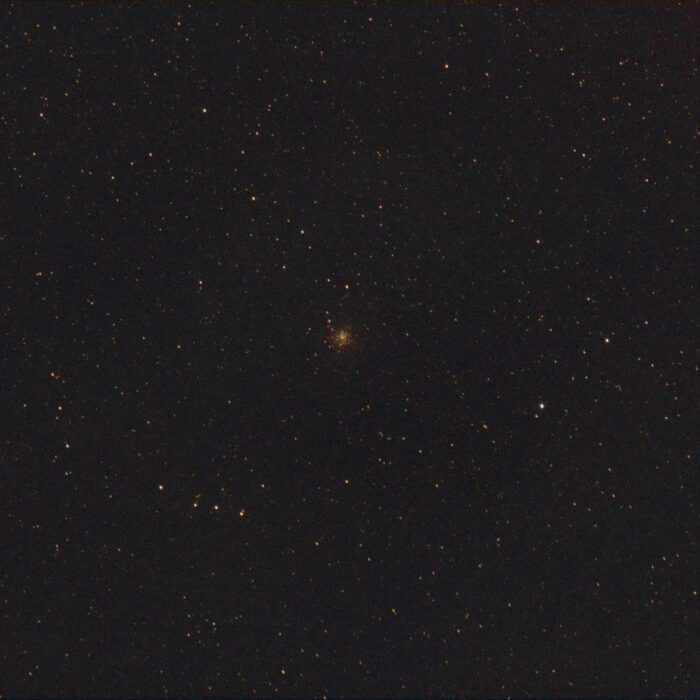
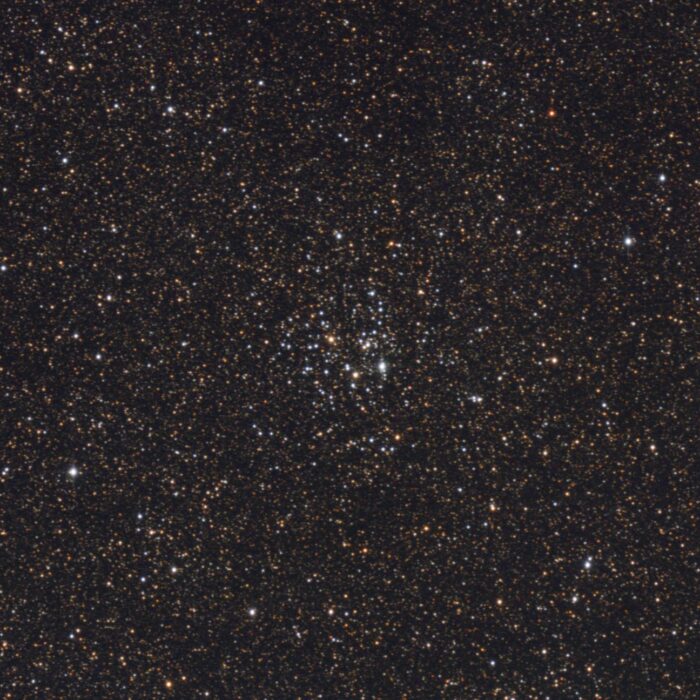
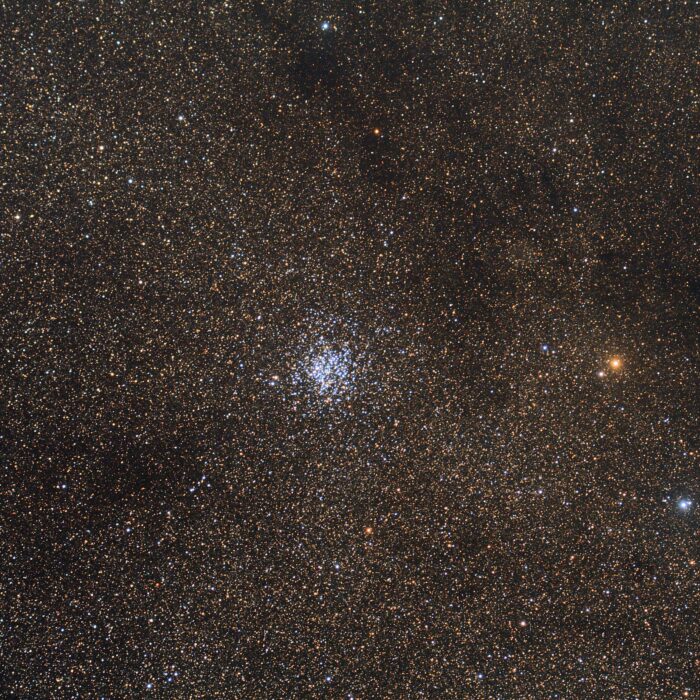
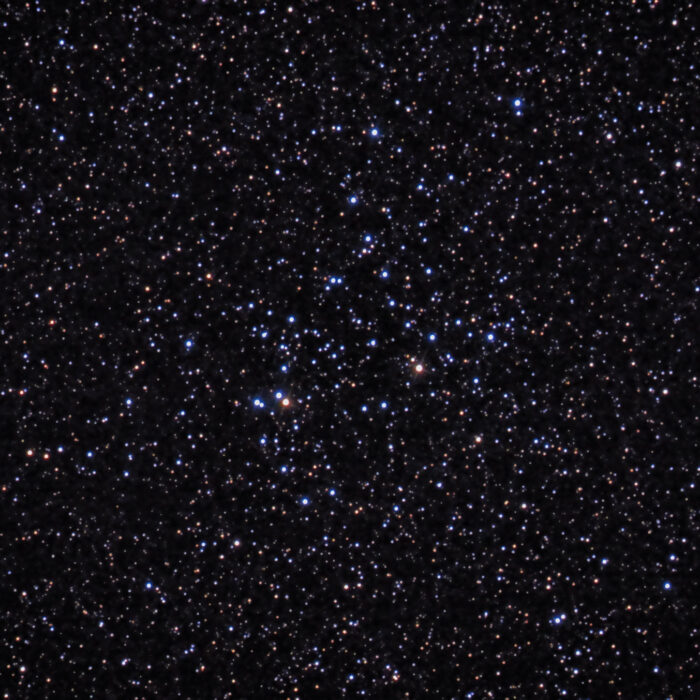
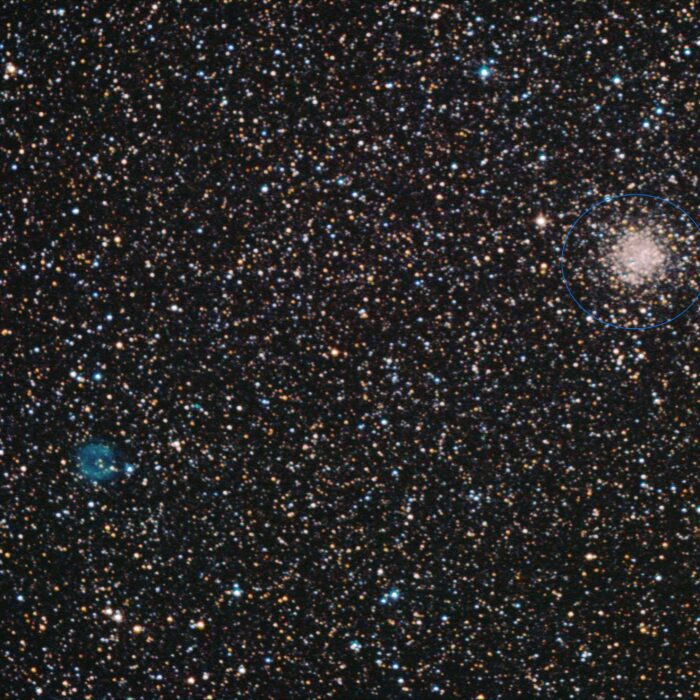
On the left is the planetary nebula IC 1295.
On the right is the globular cluster NGC 6712.
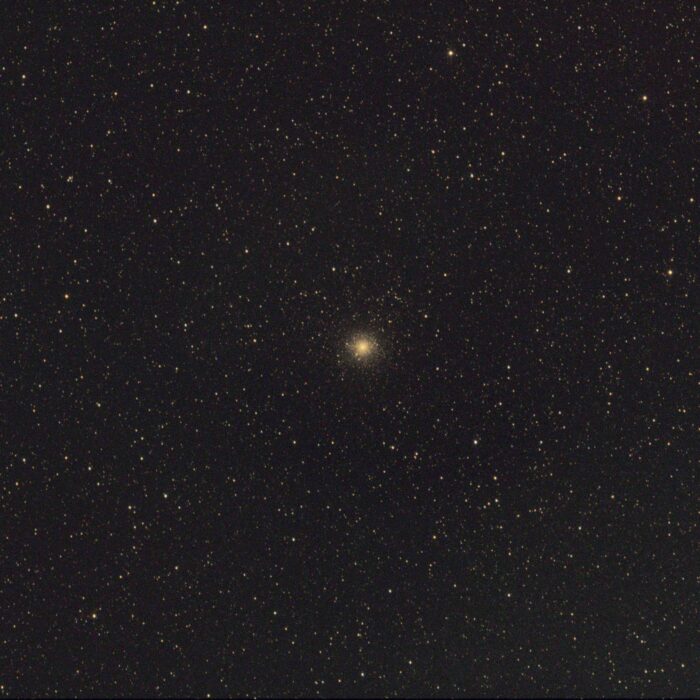
Starhopper, CC BY-SA 4.0, via Wikimedia Commons
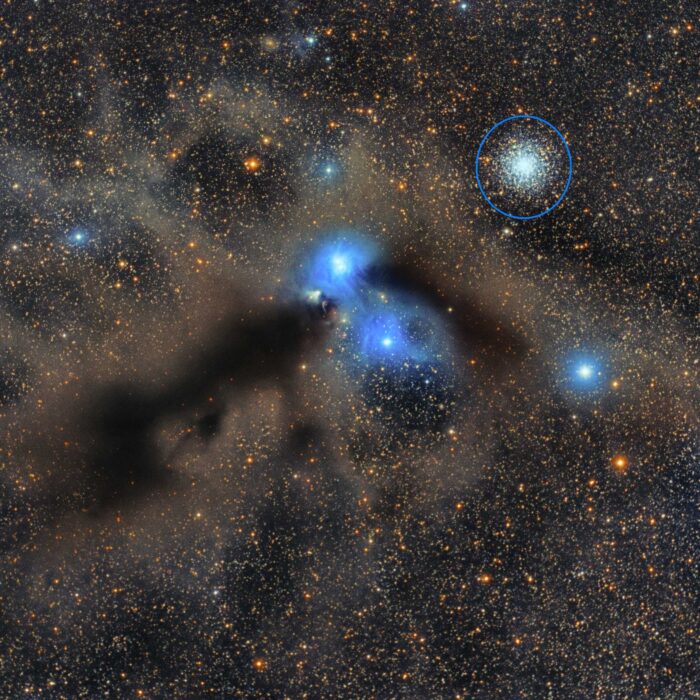
The star cluster on the upper right is NGC 6723 (Candelabra cluster).
In the center of the image to the left of the two large reflection nebulae is C68.
The upper blue reflection nebula is NGC 6726.
The lower blue reflection nebula is IC 4812.
The blue star to the right is Epsilon Coronae Australis and the blue star to the far left is Gamma Coronae Australis. They belong to the zodiacal sign southern crown.
The blue star far right is V686 Coronae Australis.
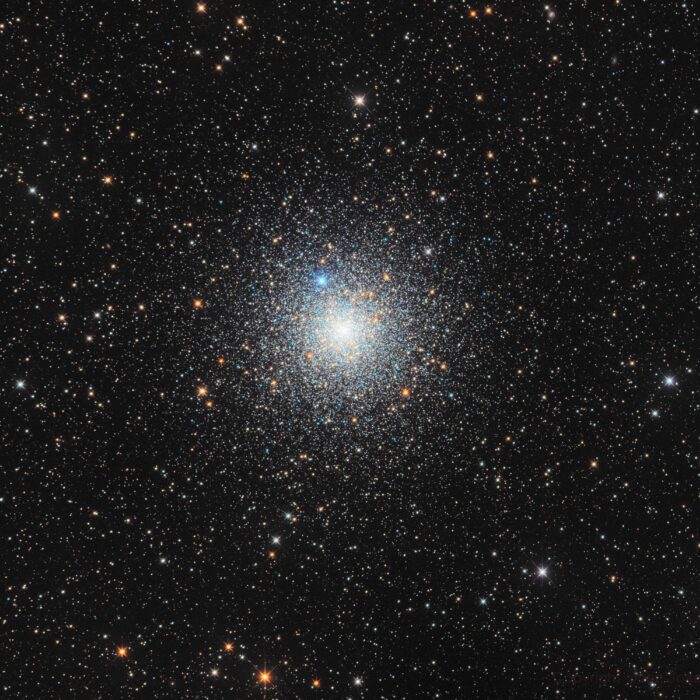
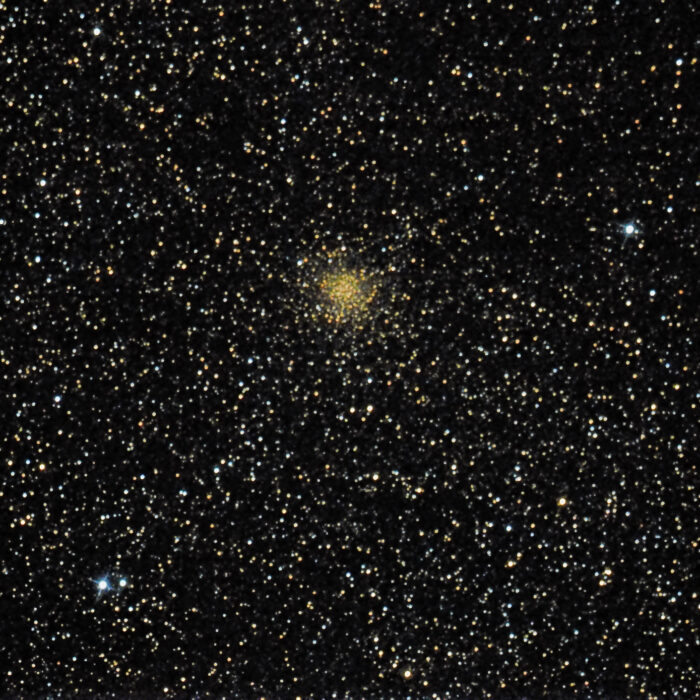
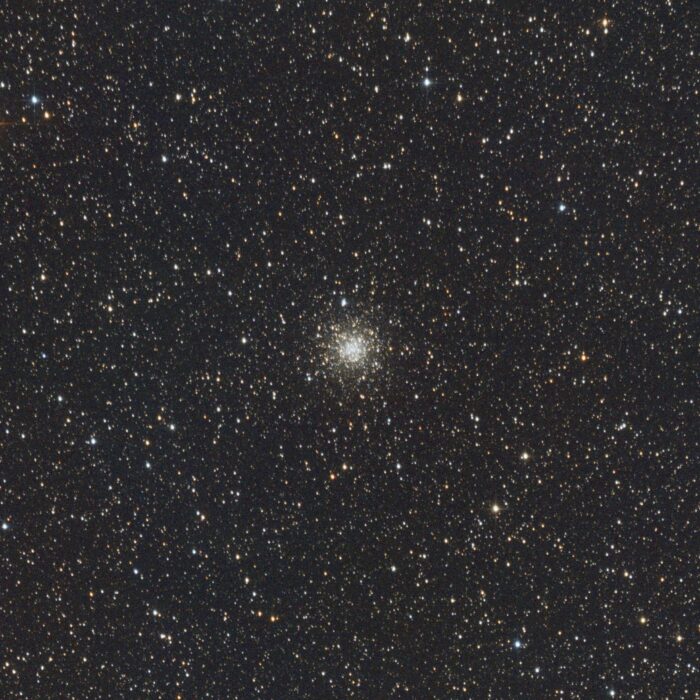
Starhopper, CC BY-SA 4.0, via Wikimedia Commons
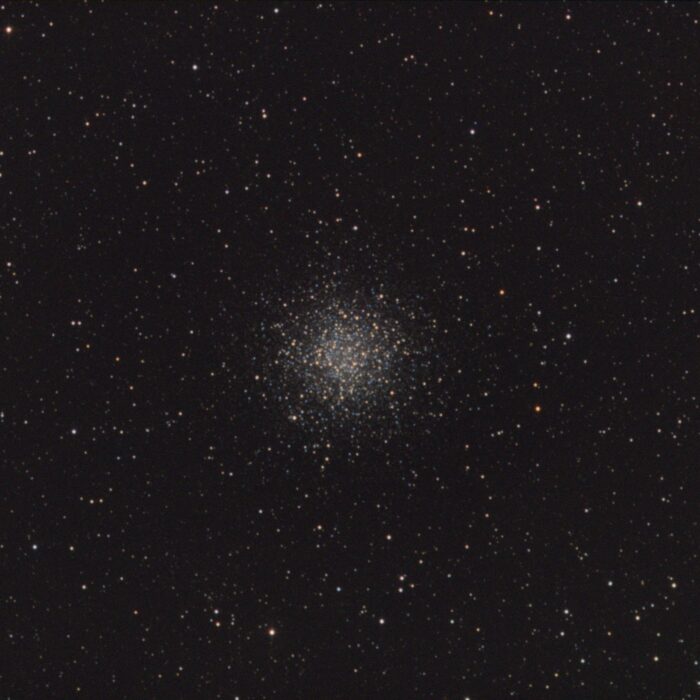
Starhopper, CC BY-SA 4.0, via Wikimedia Commons
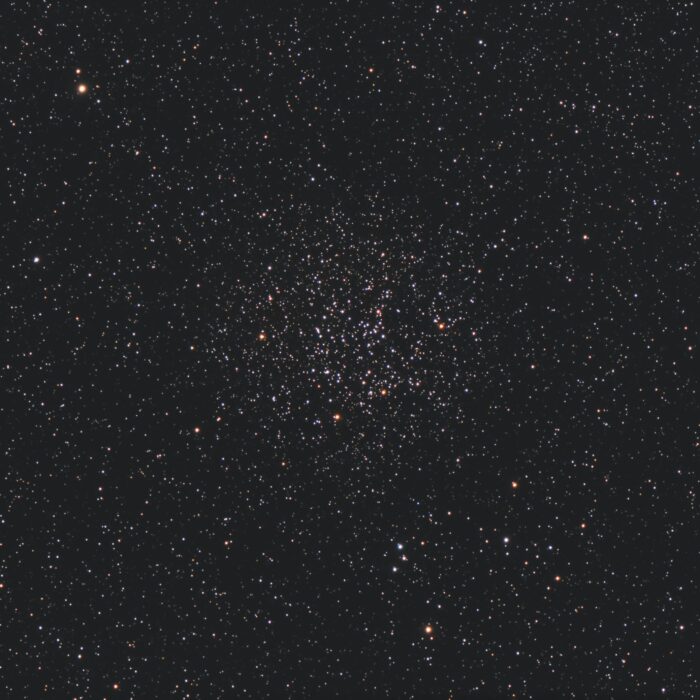
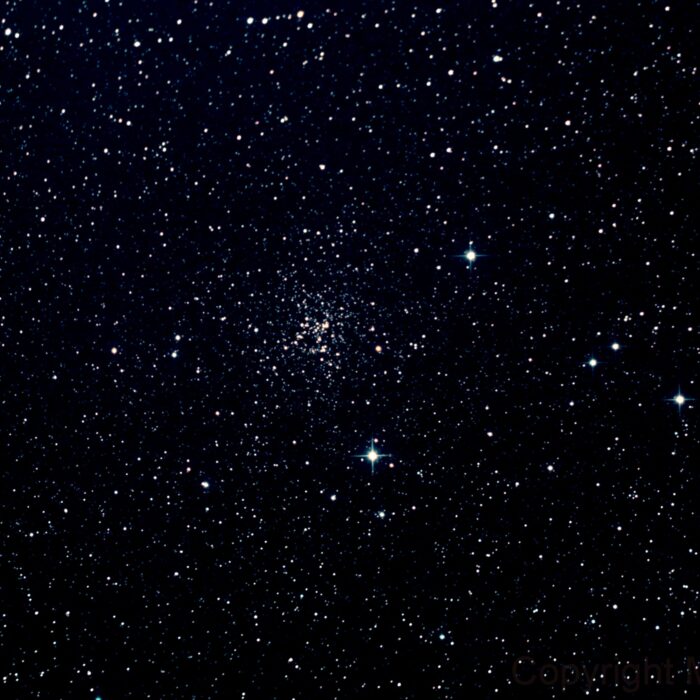
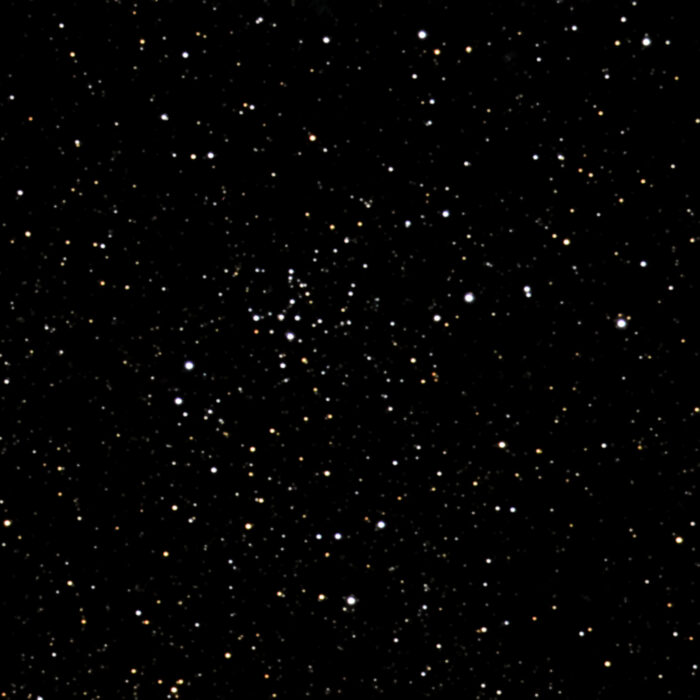
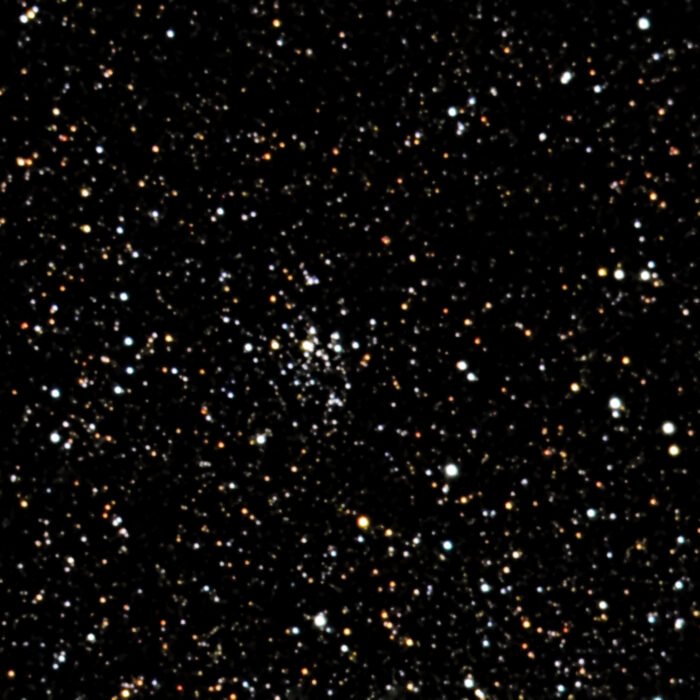
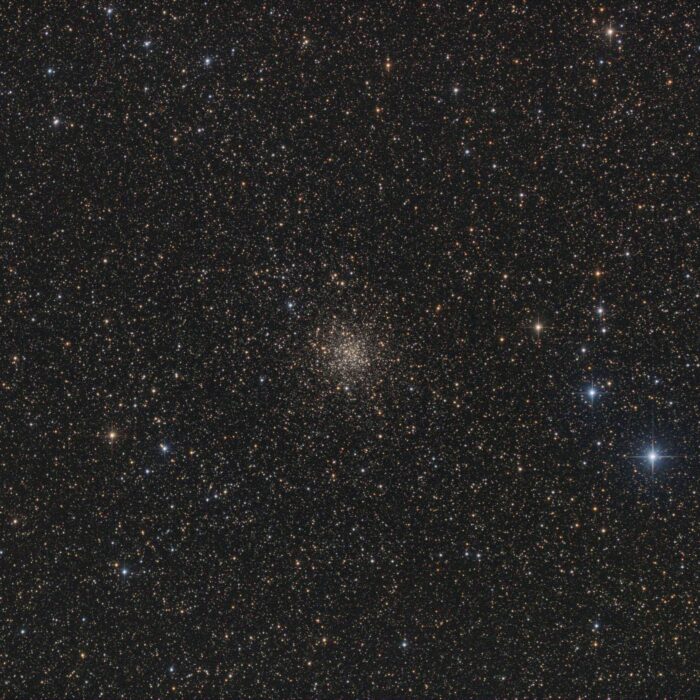
Starhopper, CC BY-SA 4.0, via Wikimedia Commons
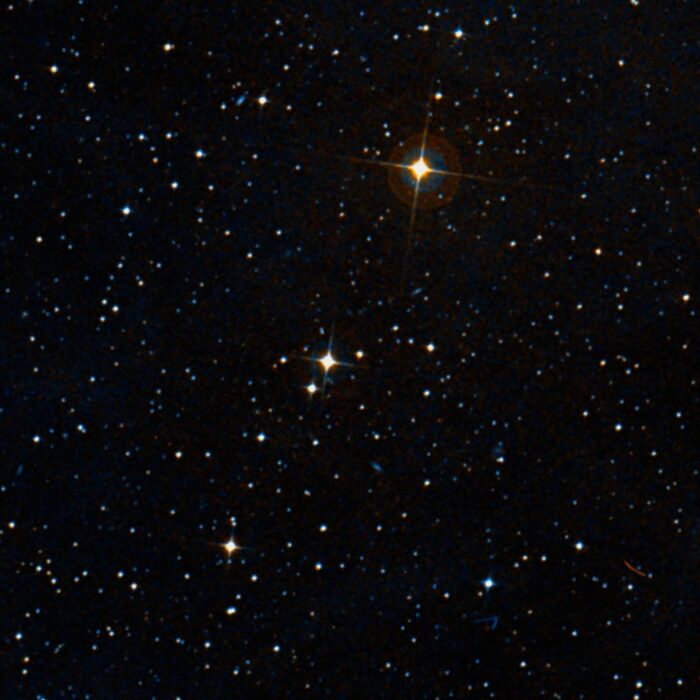
Copyright by WikiSky.org, WikiSky's snapshot tool
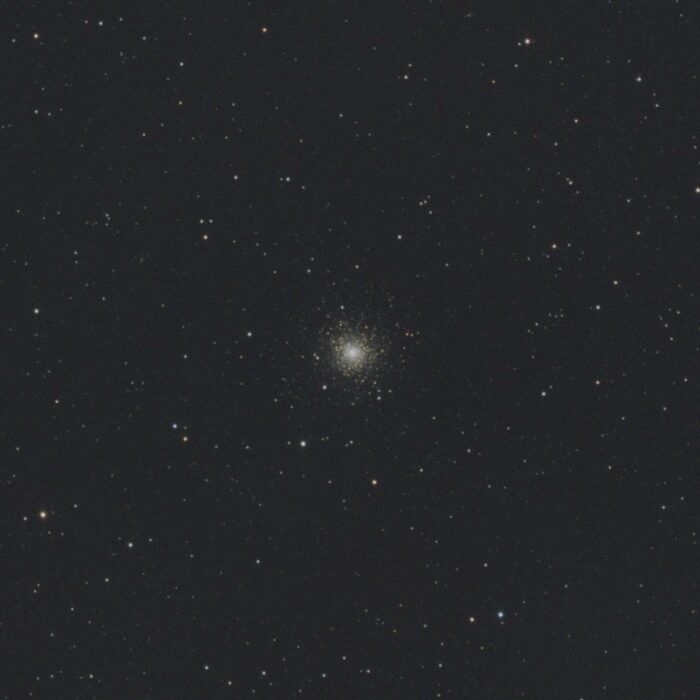
Starhopper, CC BY-SA 4.0, via Wikimedia Commons
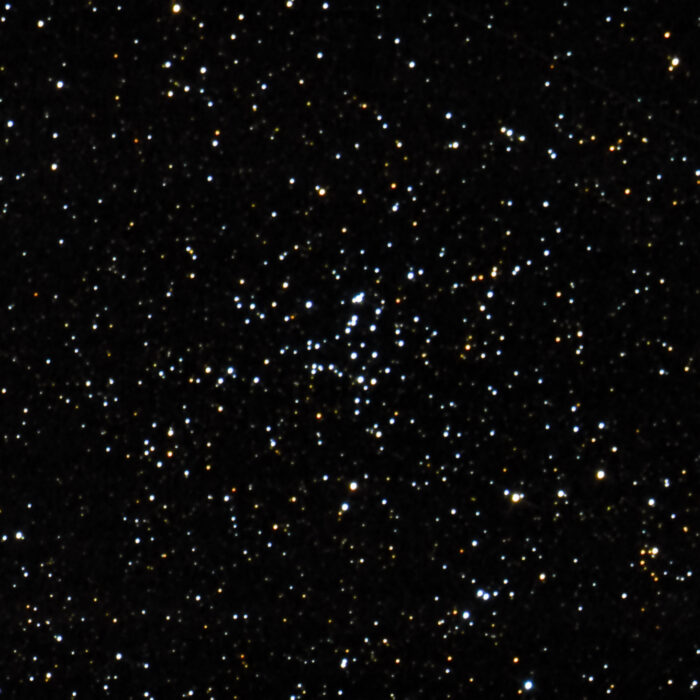
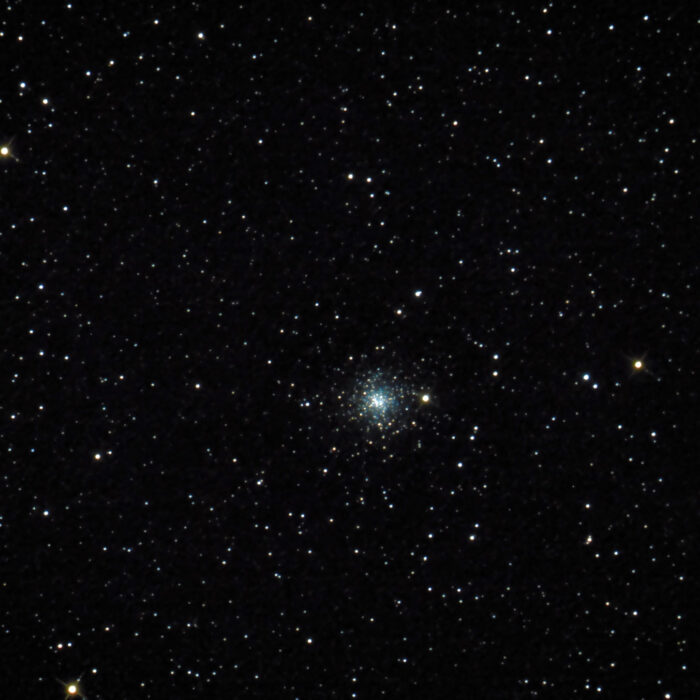
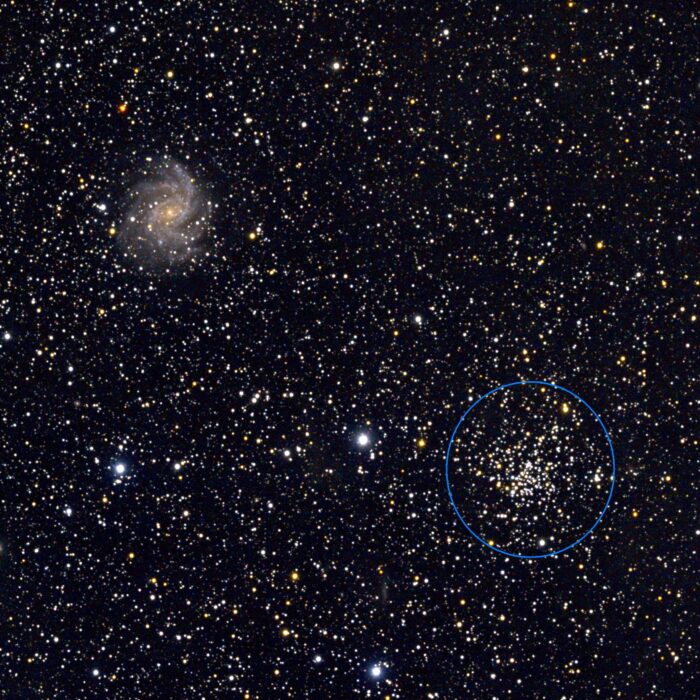
Yu-Hang Kuo, CC BY-SA 2.0, via Wikimedia Commons
The galaxy in the upper left is NGC 6946 (C12).
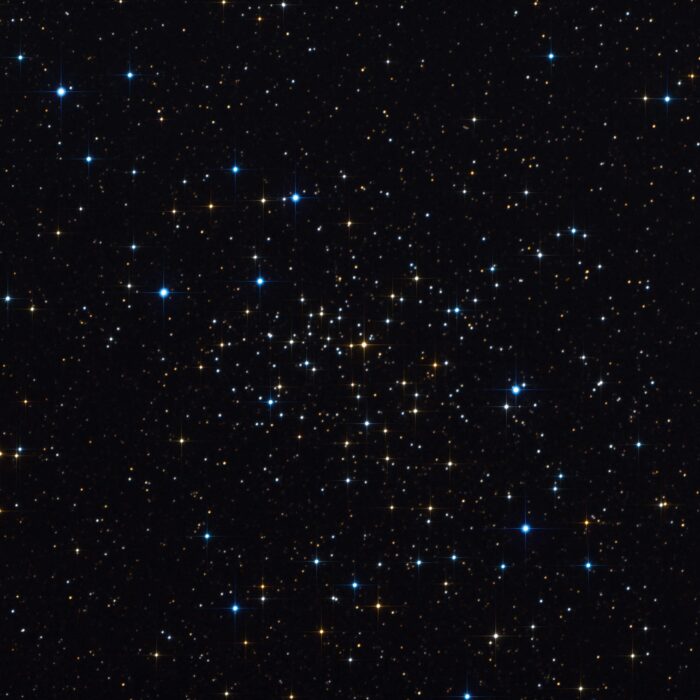
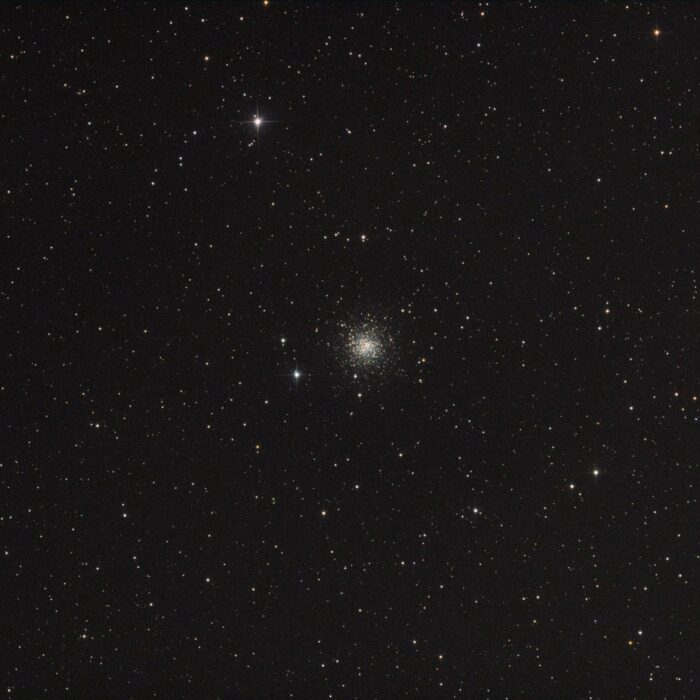
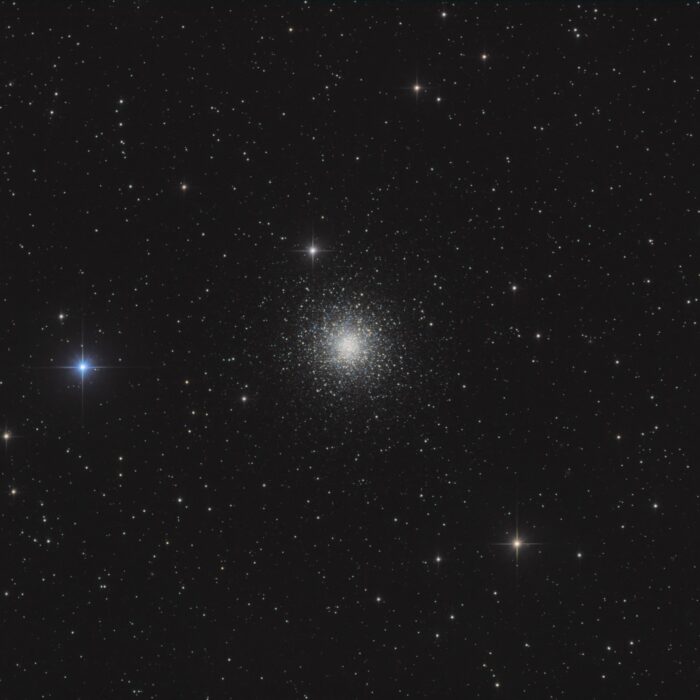
Starhopper, CC BY-SA 4.0, via Wikimedia Commons
In the star cluster M15 the planetary nebula Pease 1 is still hiding very small.
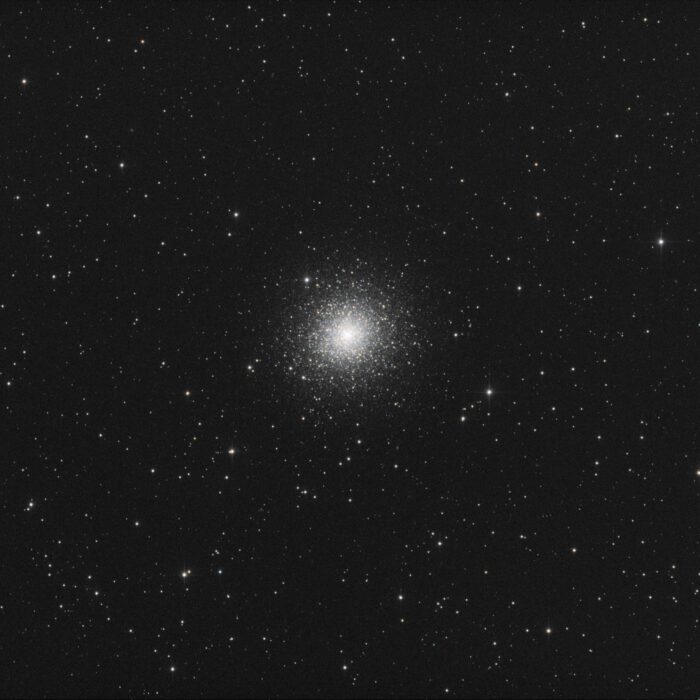
Starhopper, CC BY-SA 4.0, via Wikimedia Commons
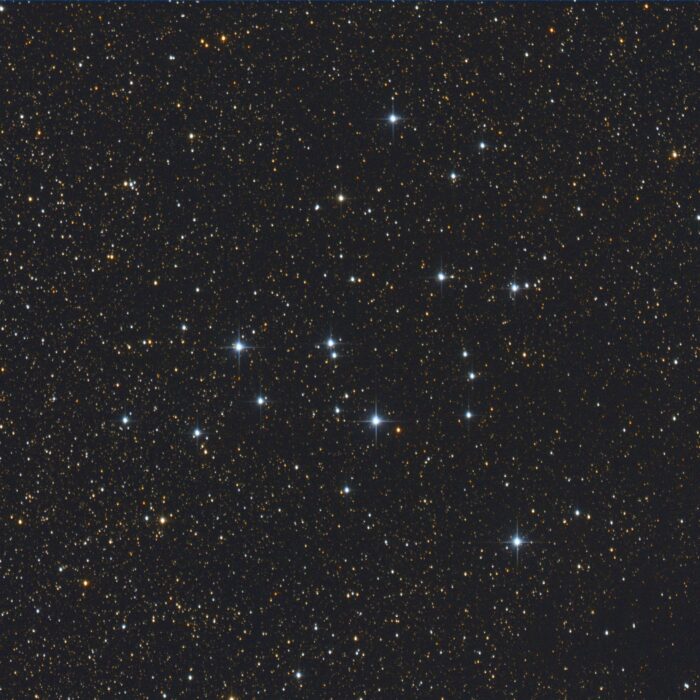
Starhopper, CC BY-SA 4.0, via Wikimedia Commons
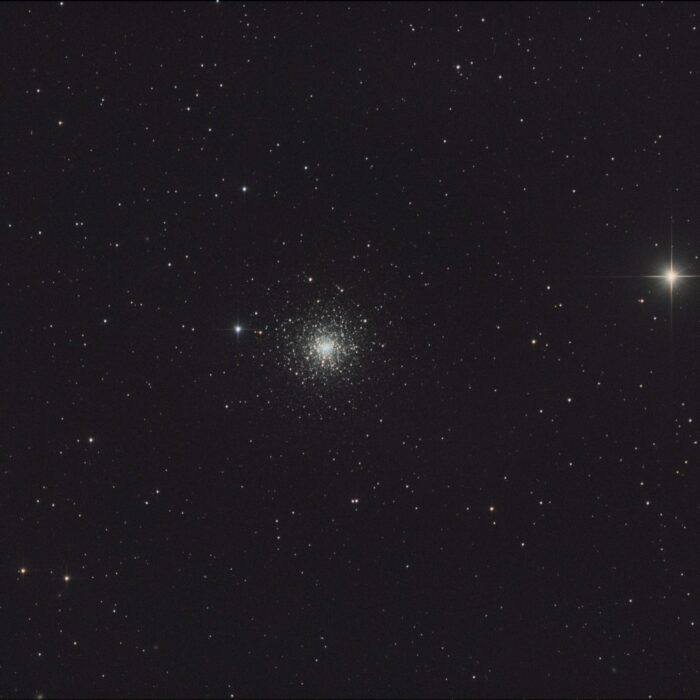
Starhopper, CC BY-SA 4.0, via Wikimedia Commons
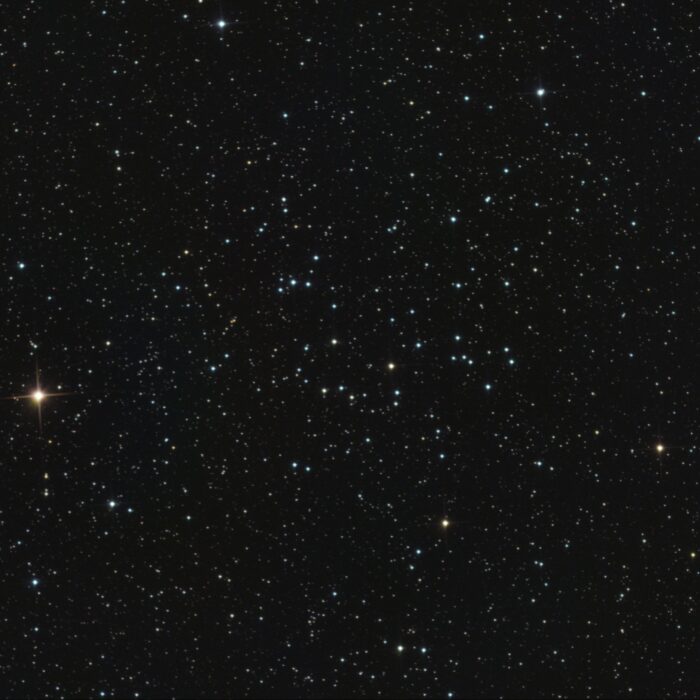
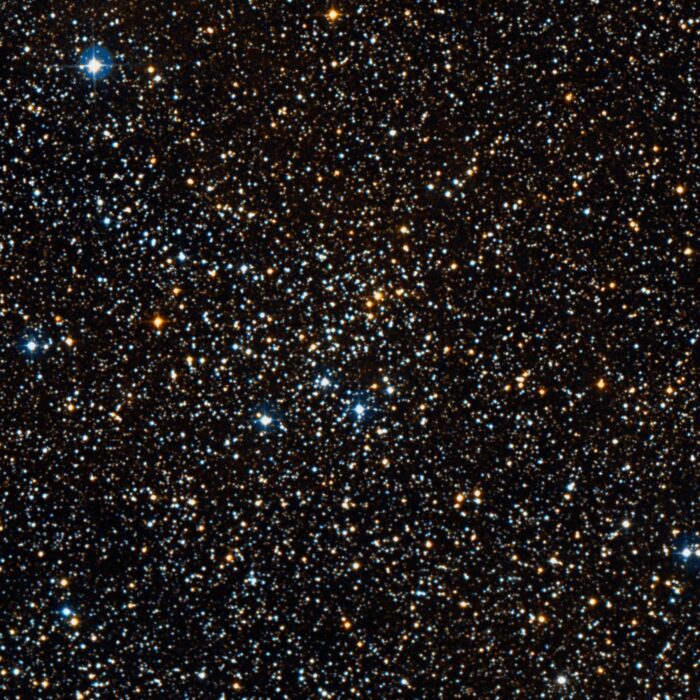
Copyright by WikiSky.org, WikiSky's snapshot tool
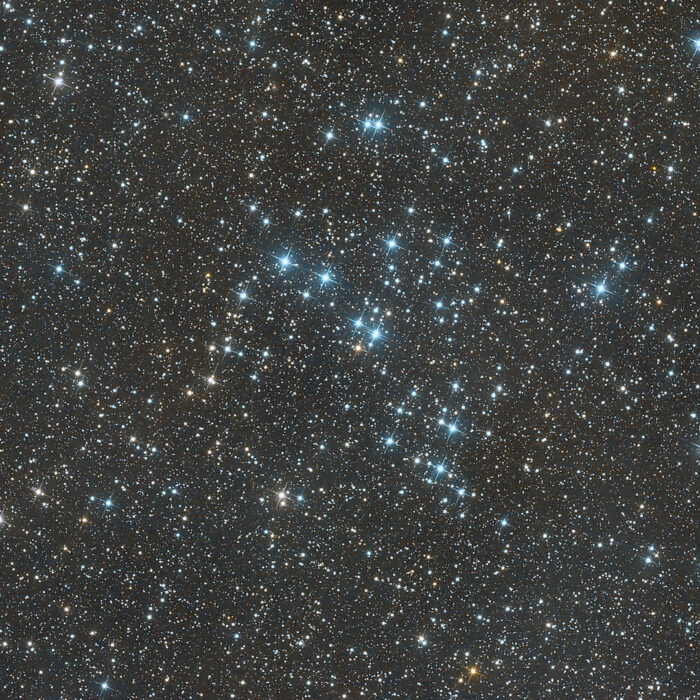
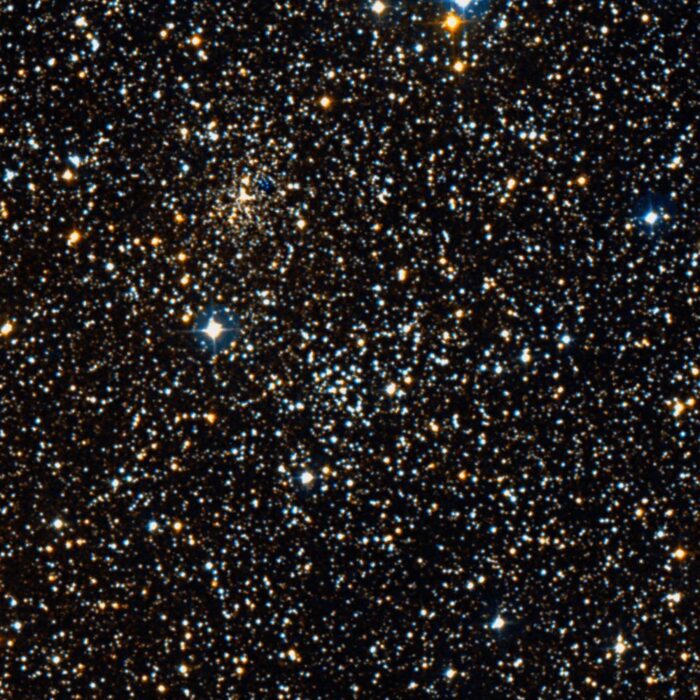
Copyright by WikiSky.org, WikiSky's snapshot tool
The star cluster in the center is NGC 7245.
To the left above the small star cluster is King 9.
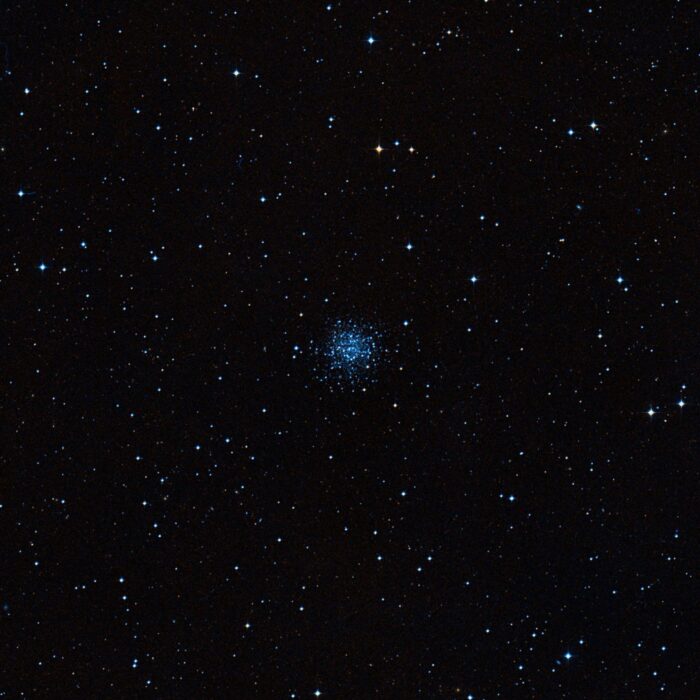
Copyright by WikiSky.org, WikiSky's snapshot tool
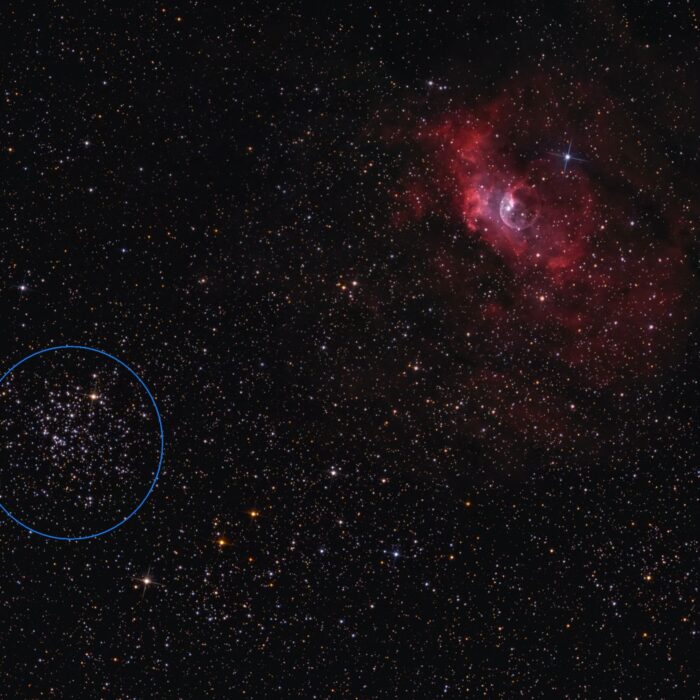
On the far left is M52.
Right below is the star cluster Czernik 43.
In the upper right is the Bubble Nebula NGC 7635.
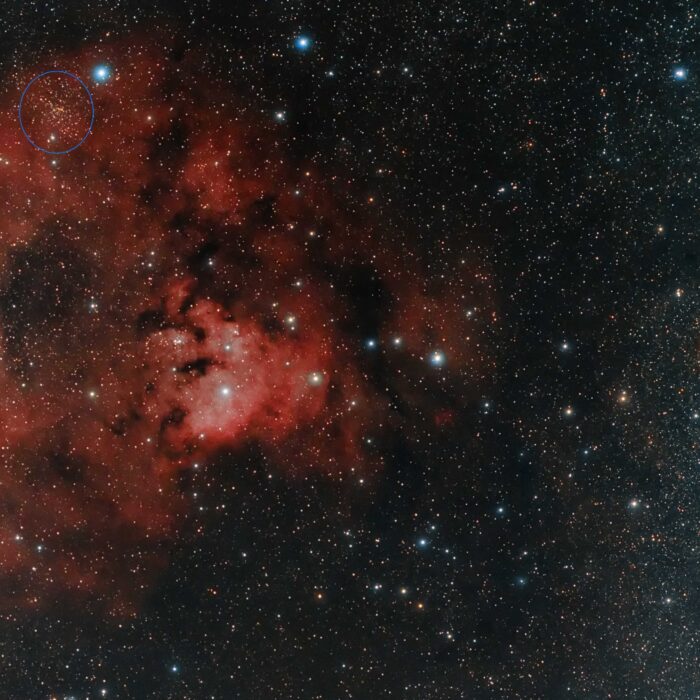
The bright nebula in the center is NGC 7822 (Sh2-171).
The star cluster at the left edge of Sh2-171 is Berkeley 59.
At the upper left edge of the large nebula is the star cluster NGC 7762 .
On the far right is the nebula Sh2-170 in the center of which is the star cluster Stock 18.
Below at one third of the right edge is vdB 2.
Between vdB 2 and Sh2-170 is the planetary nebula Sh1-118.
